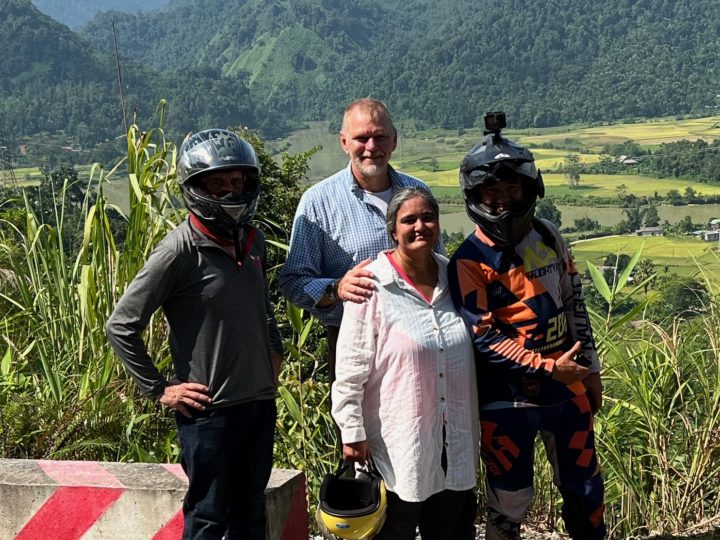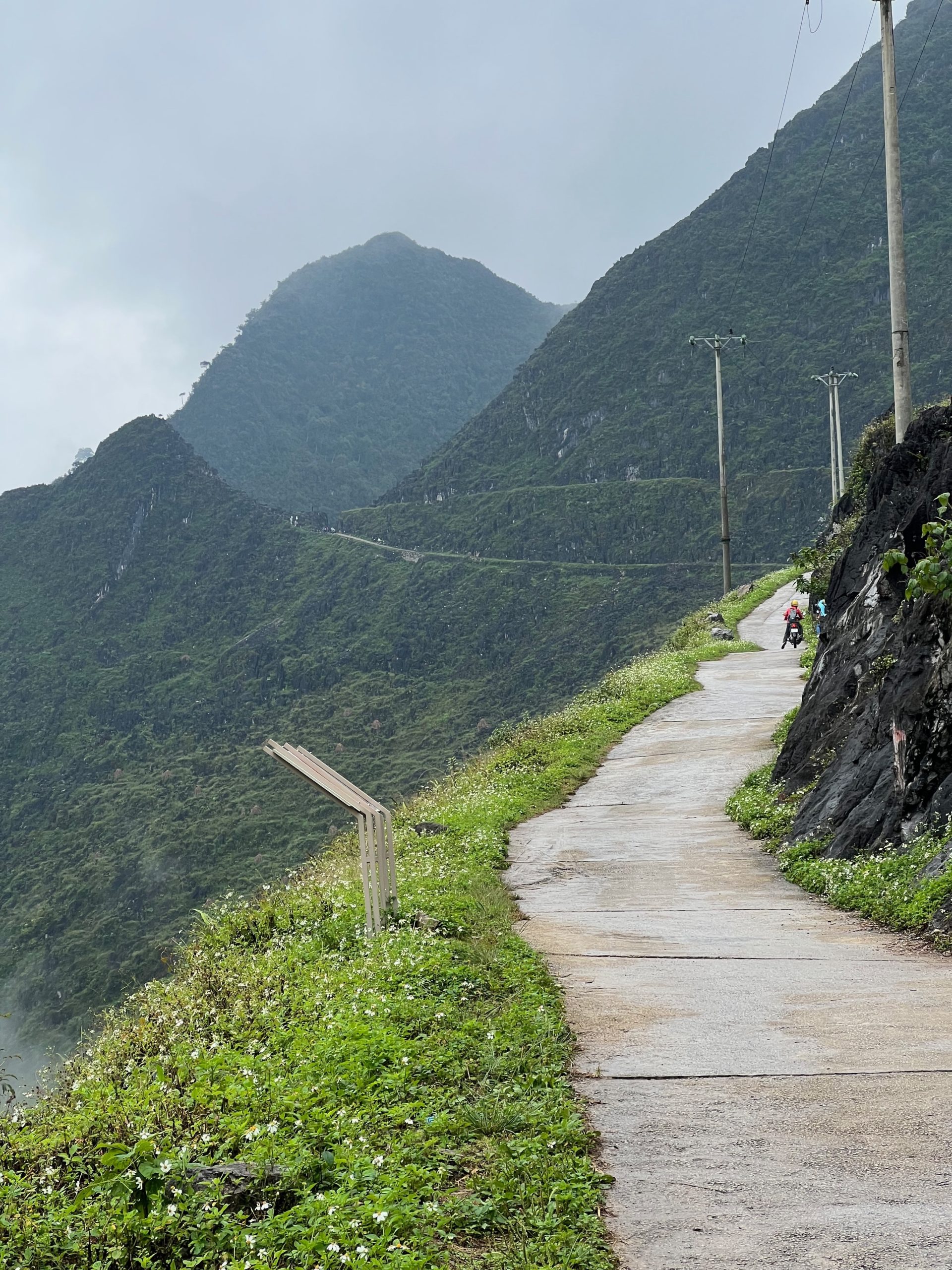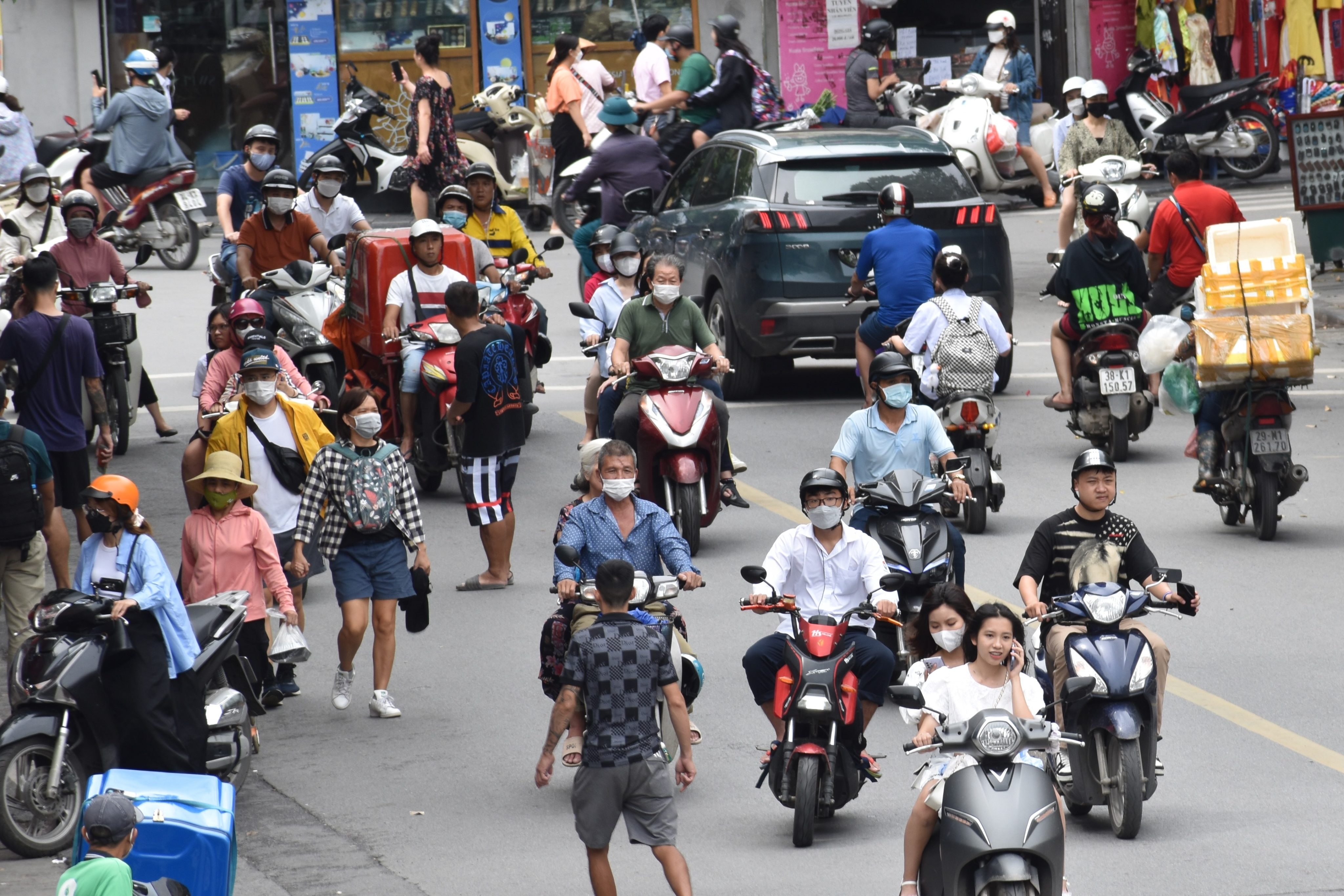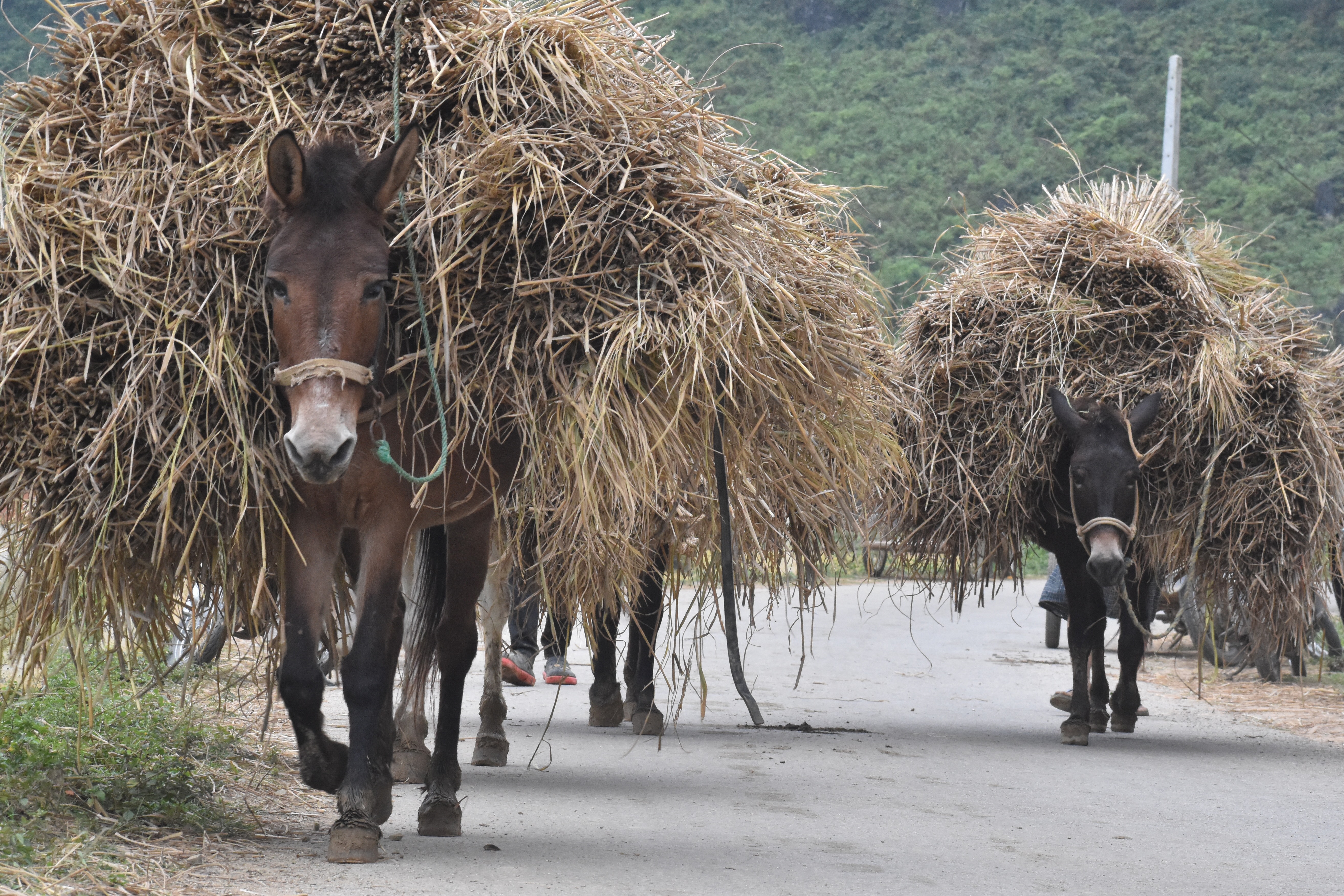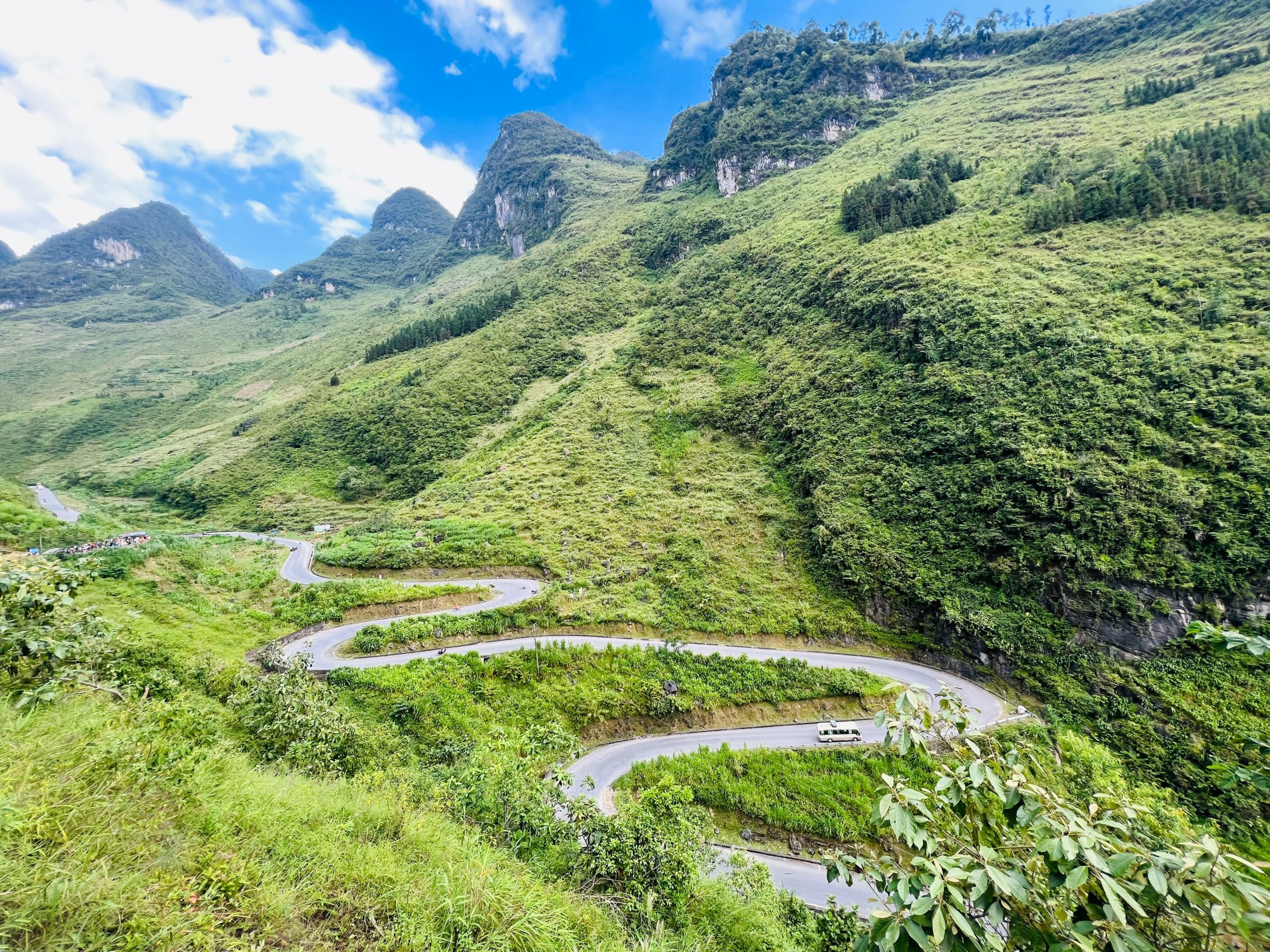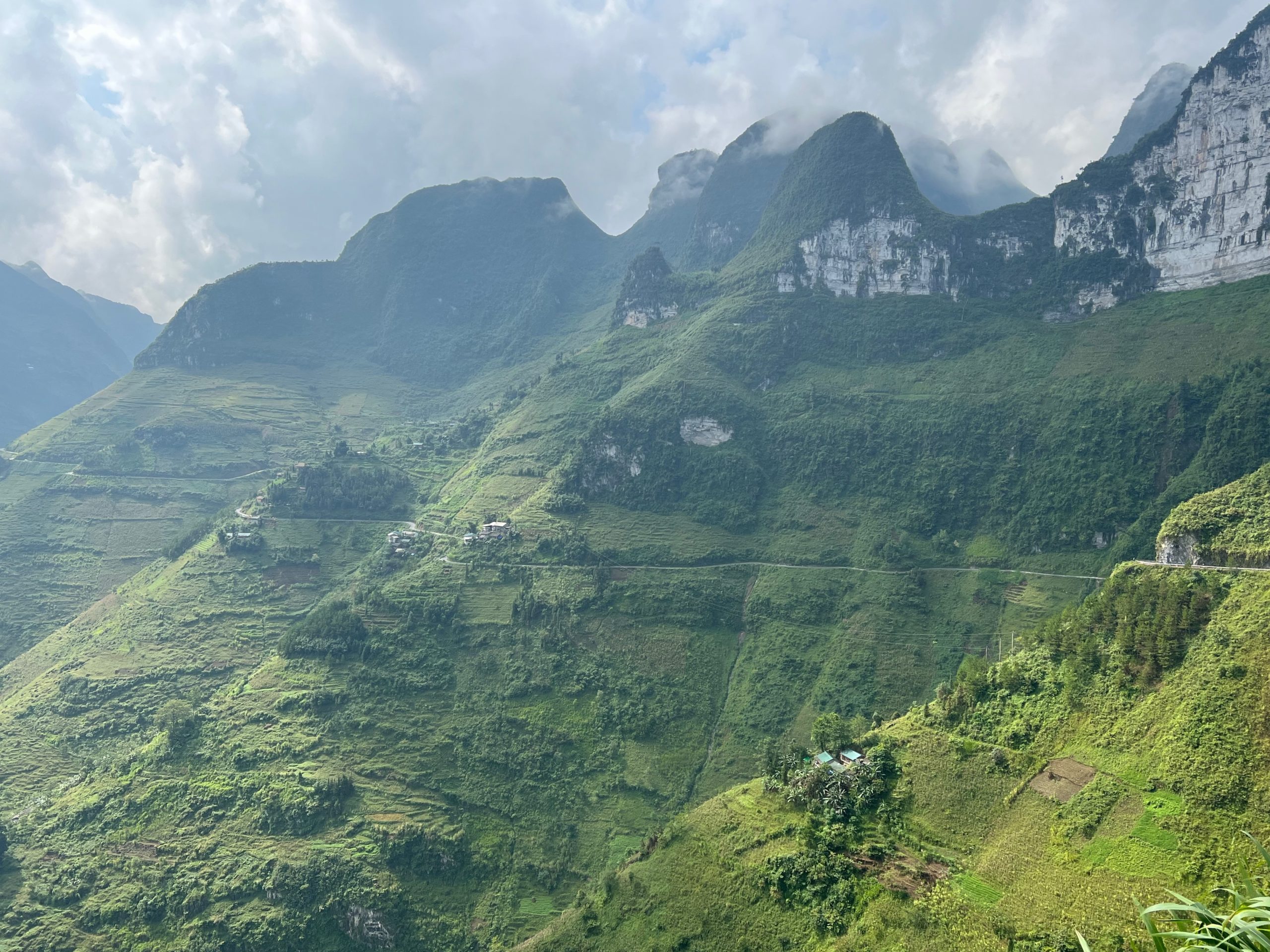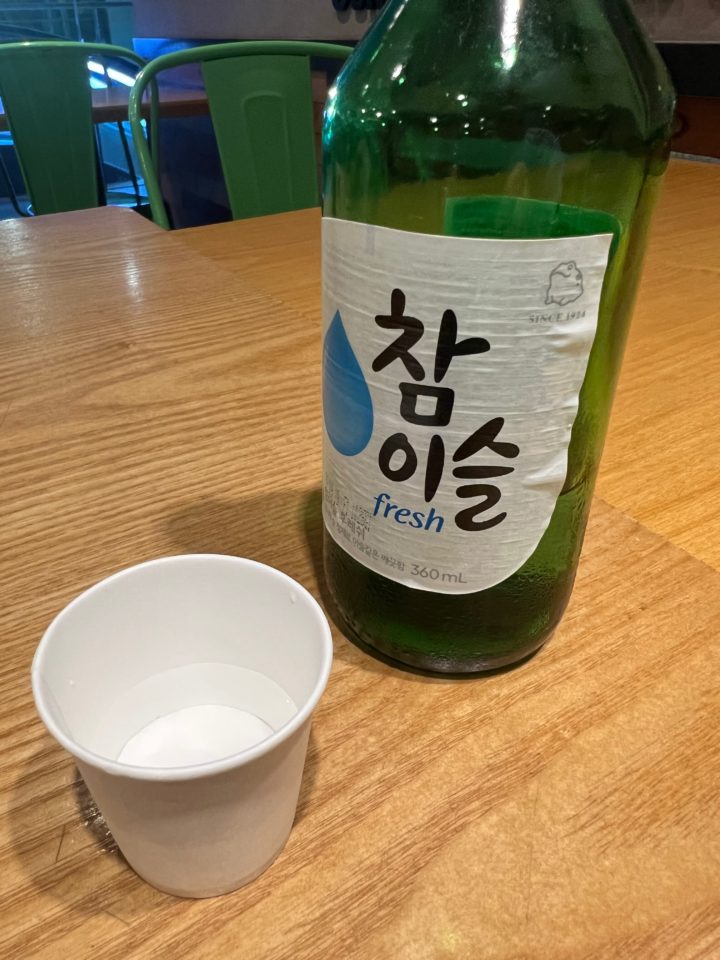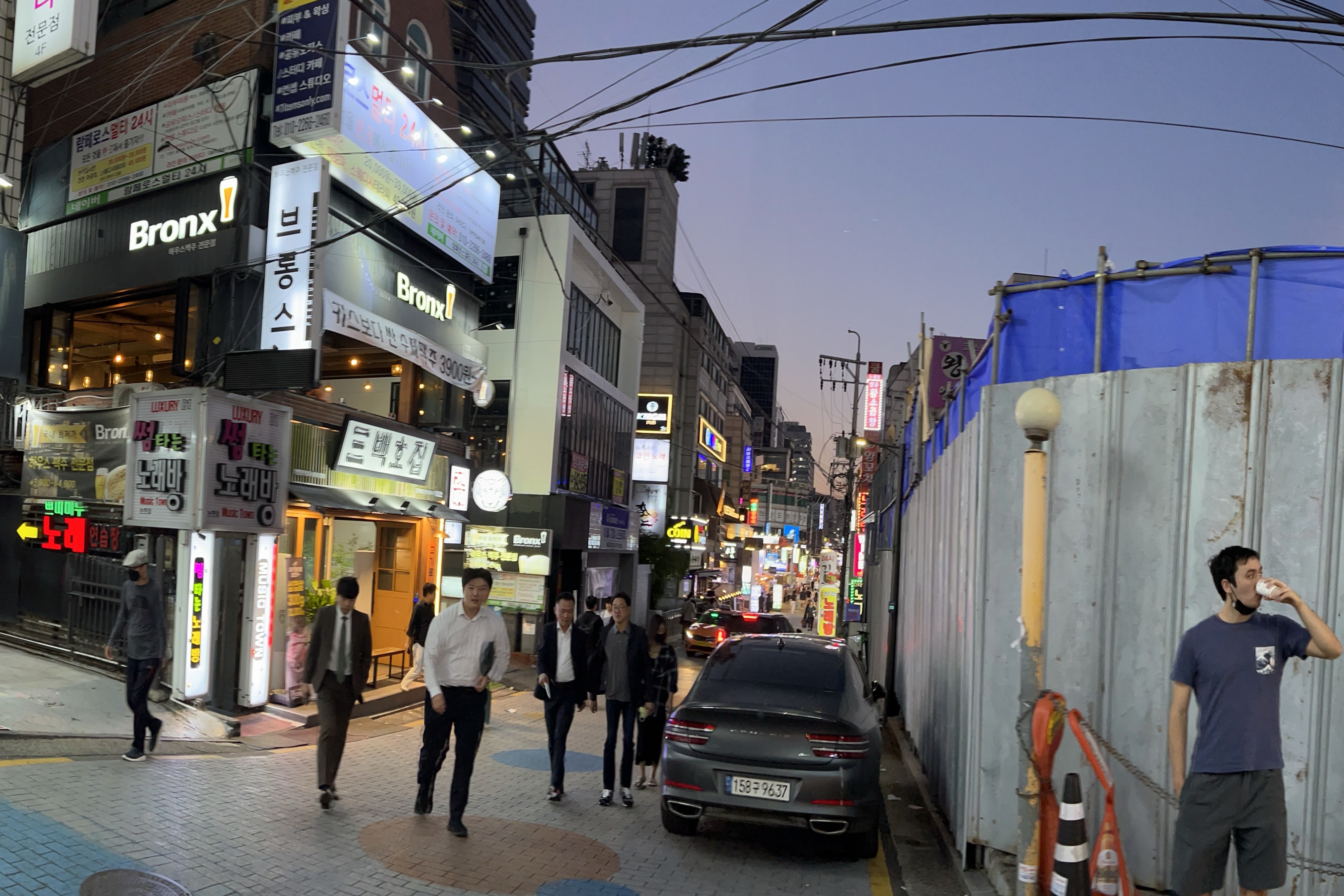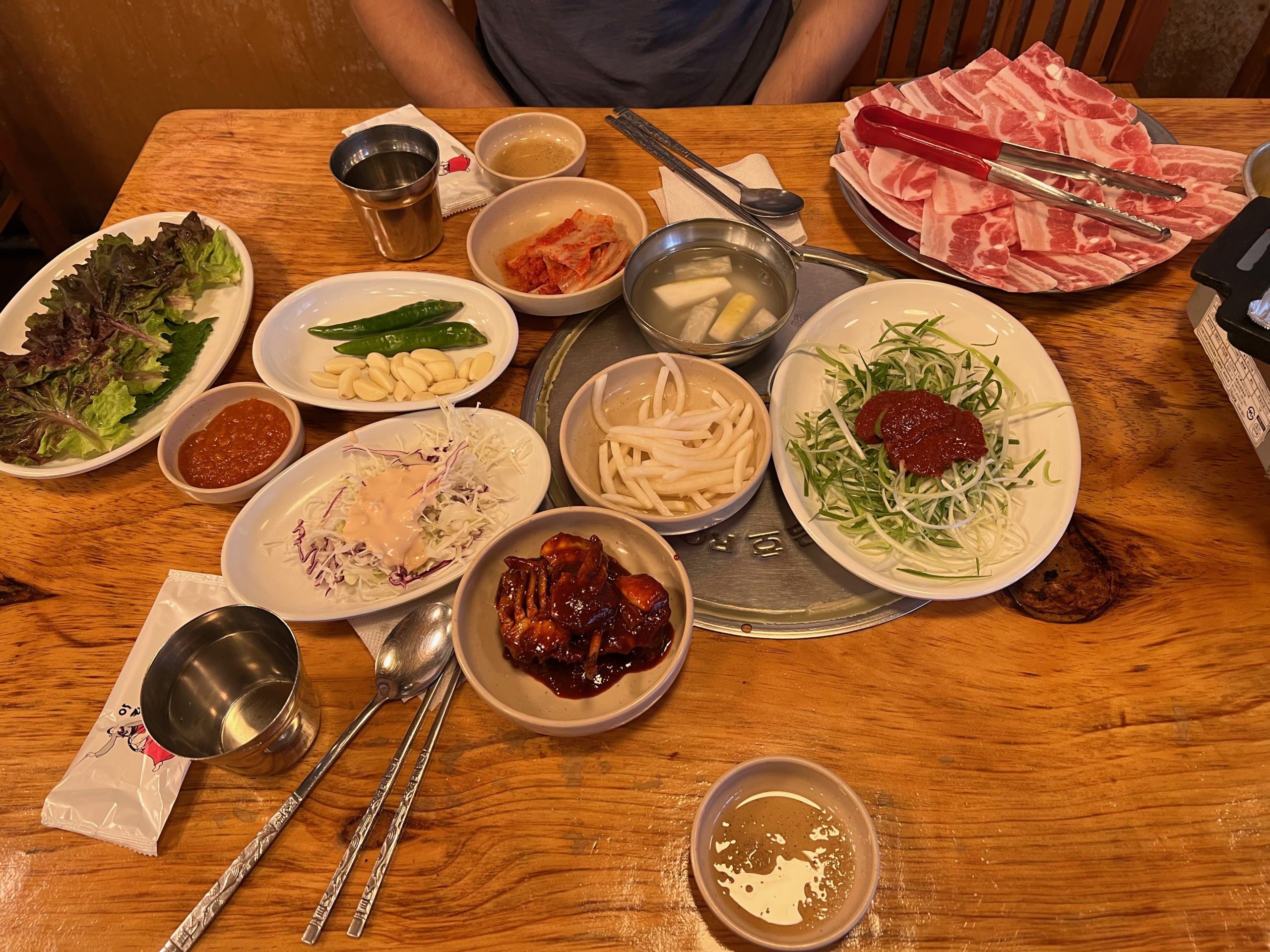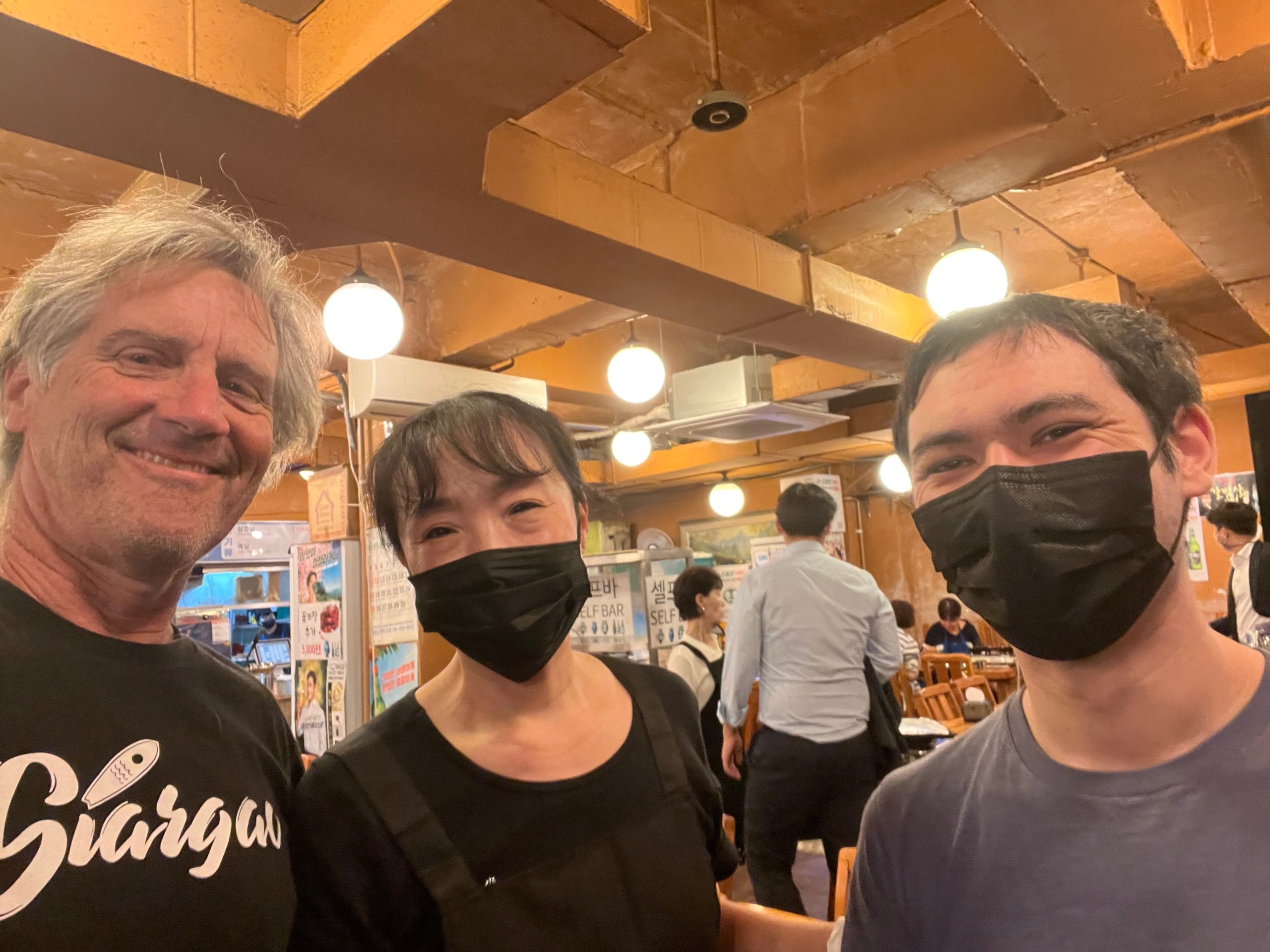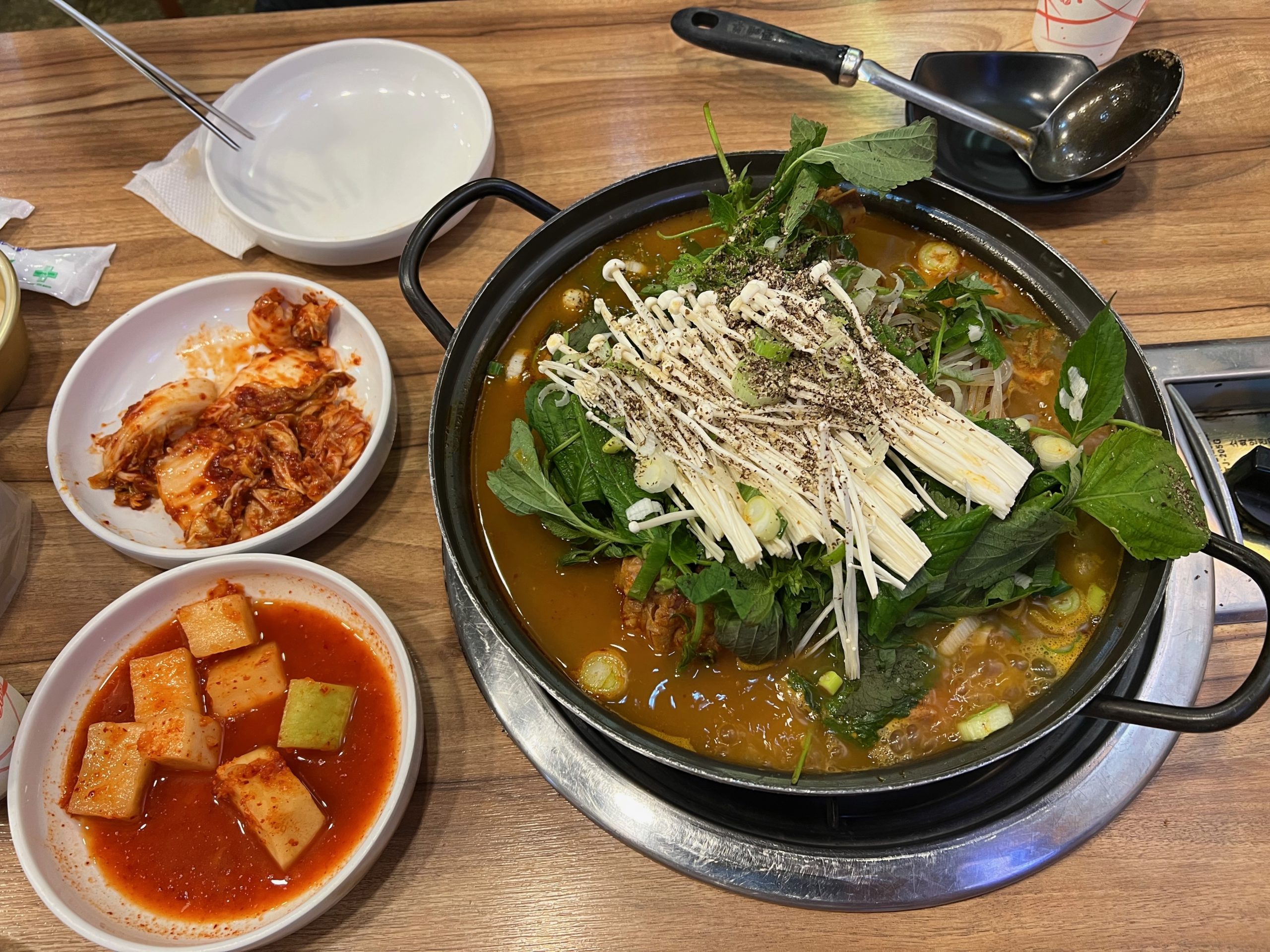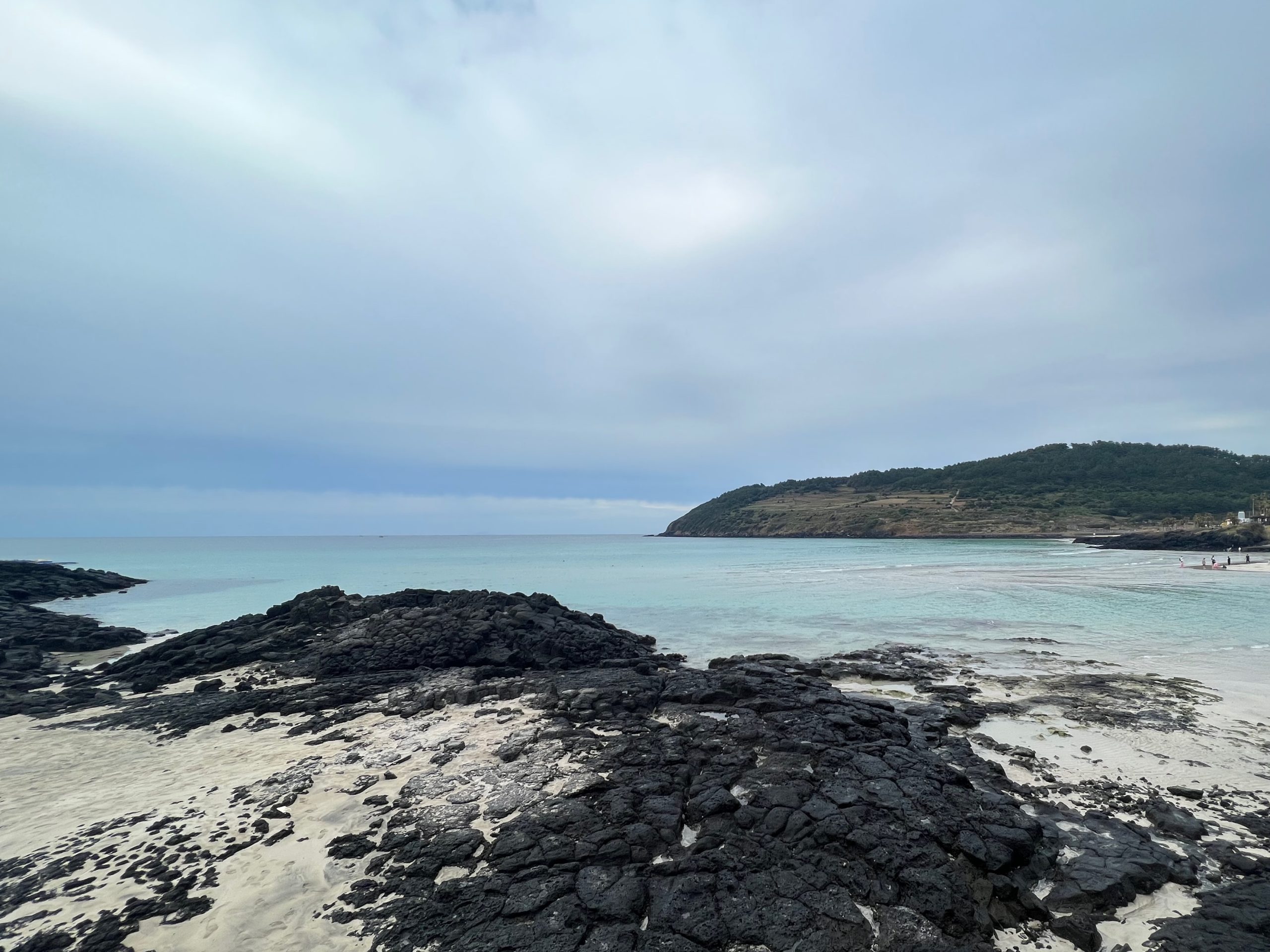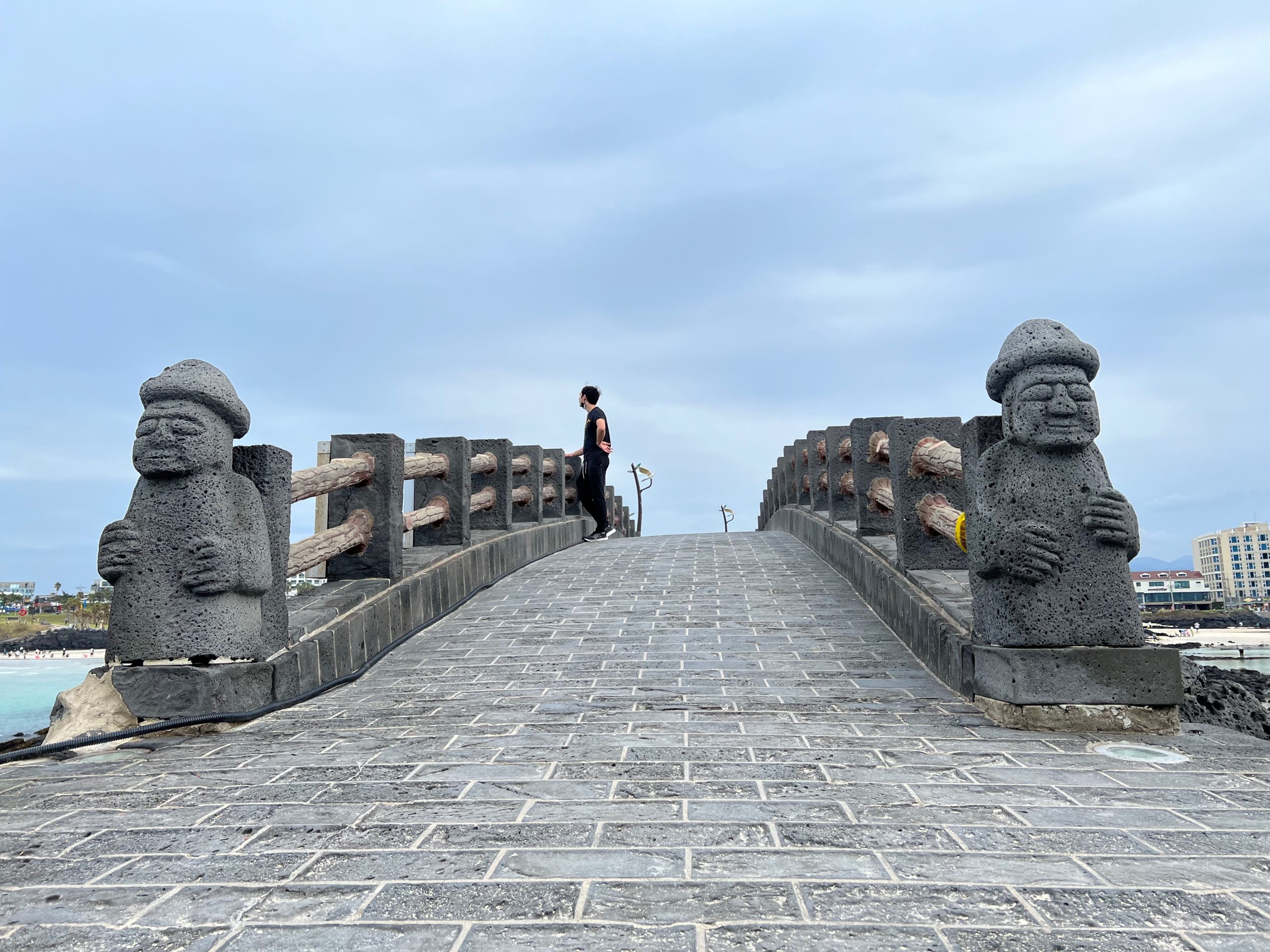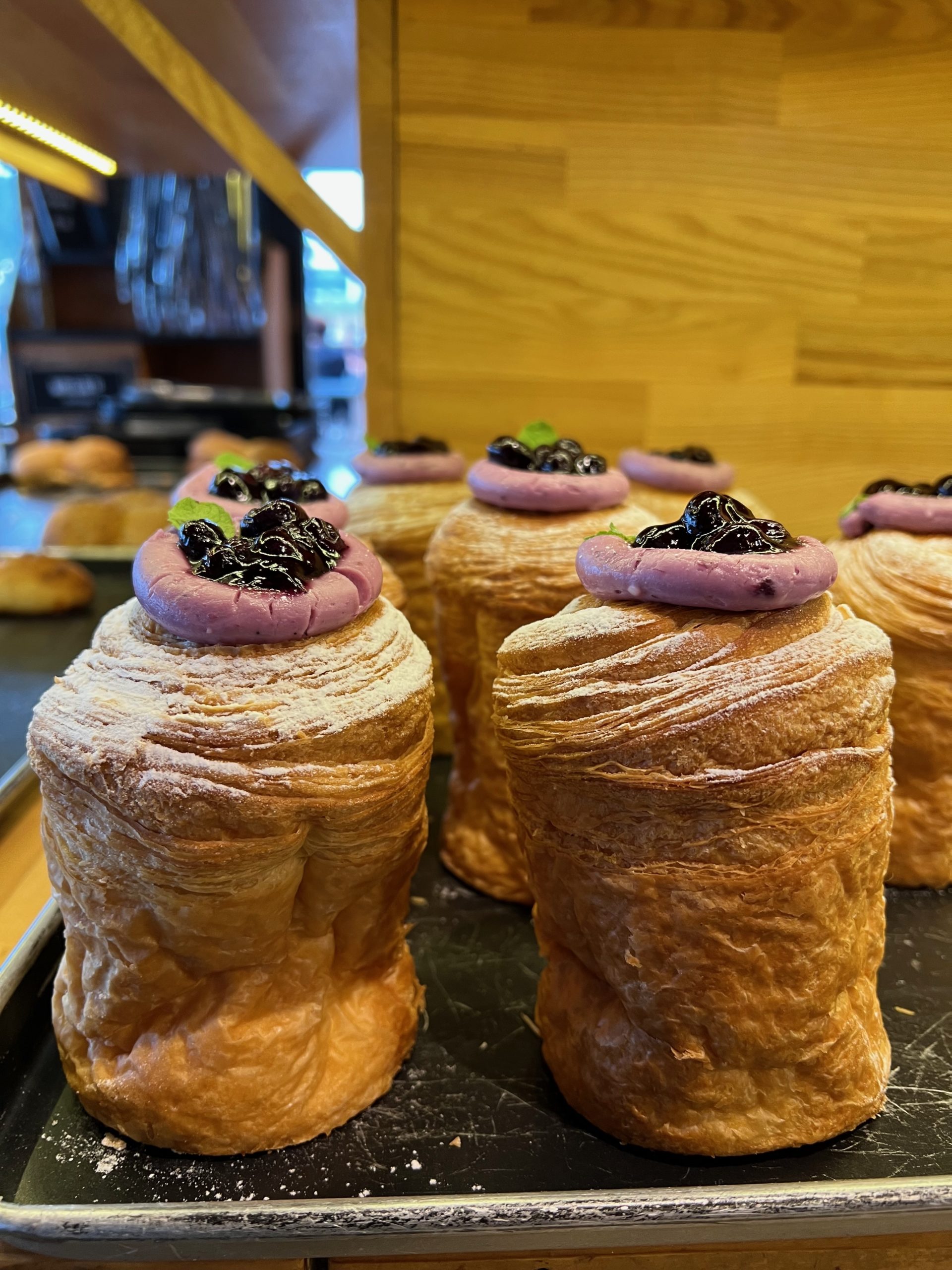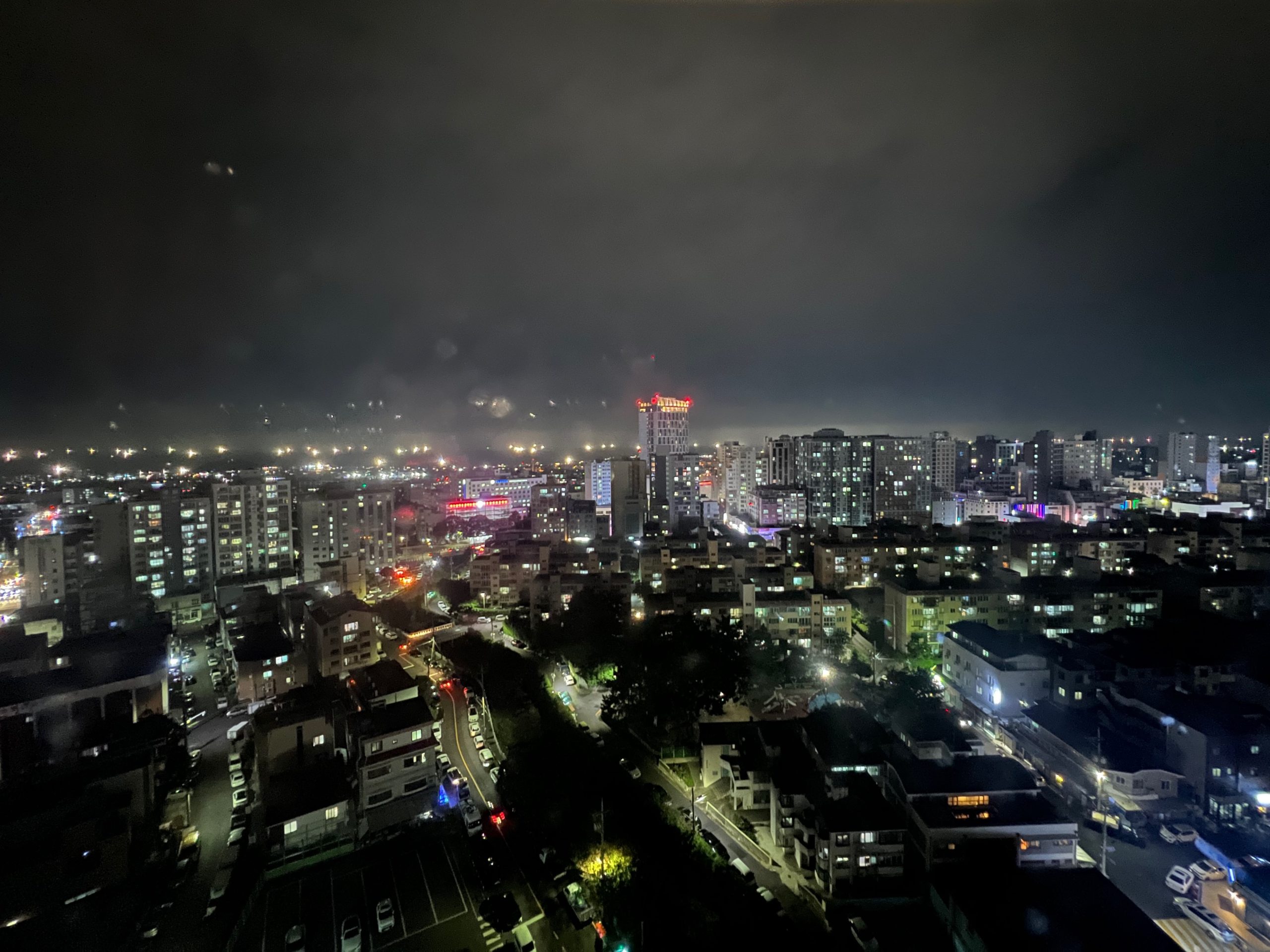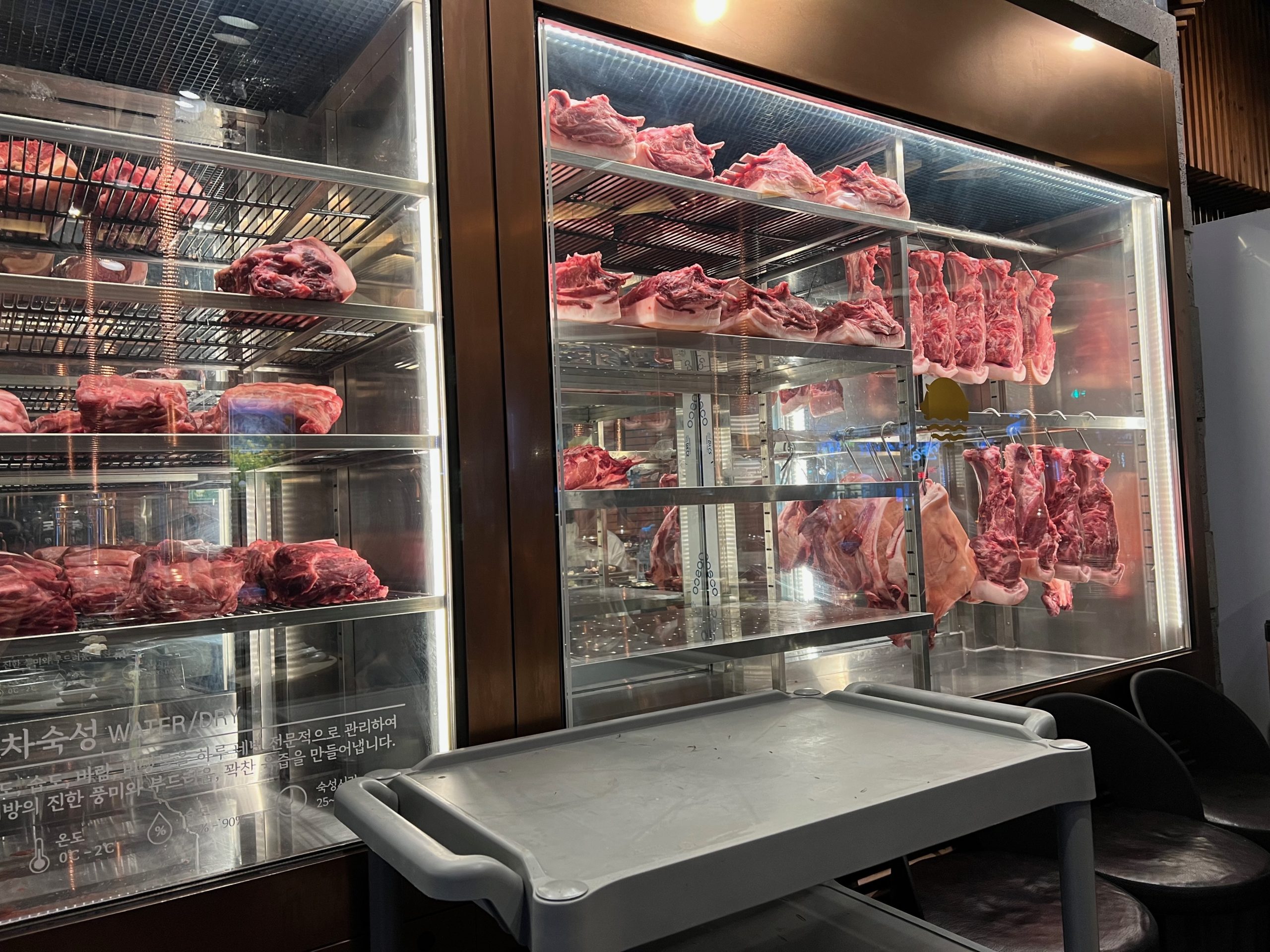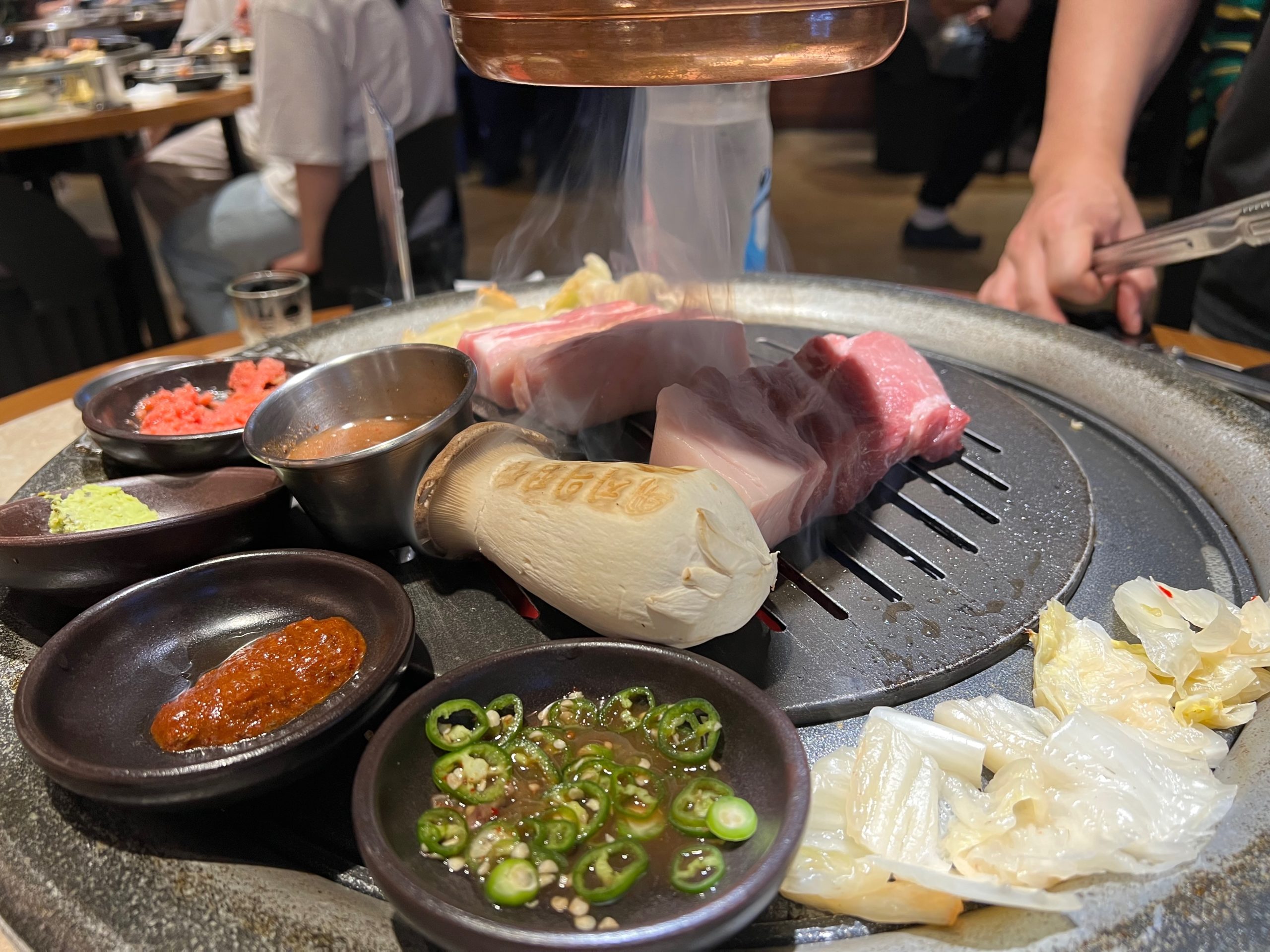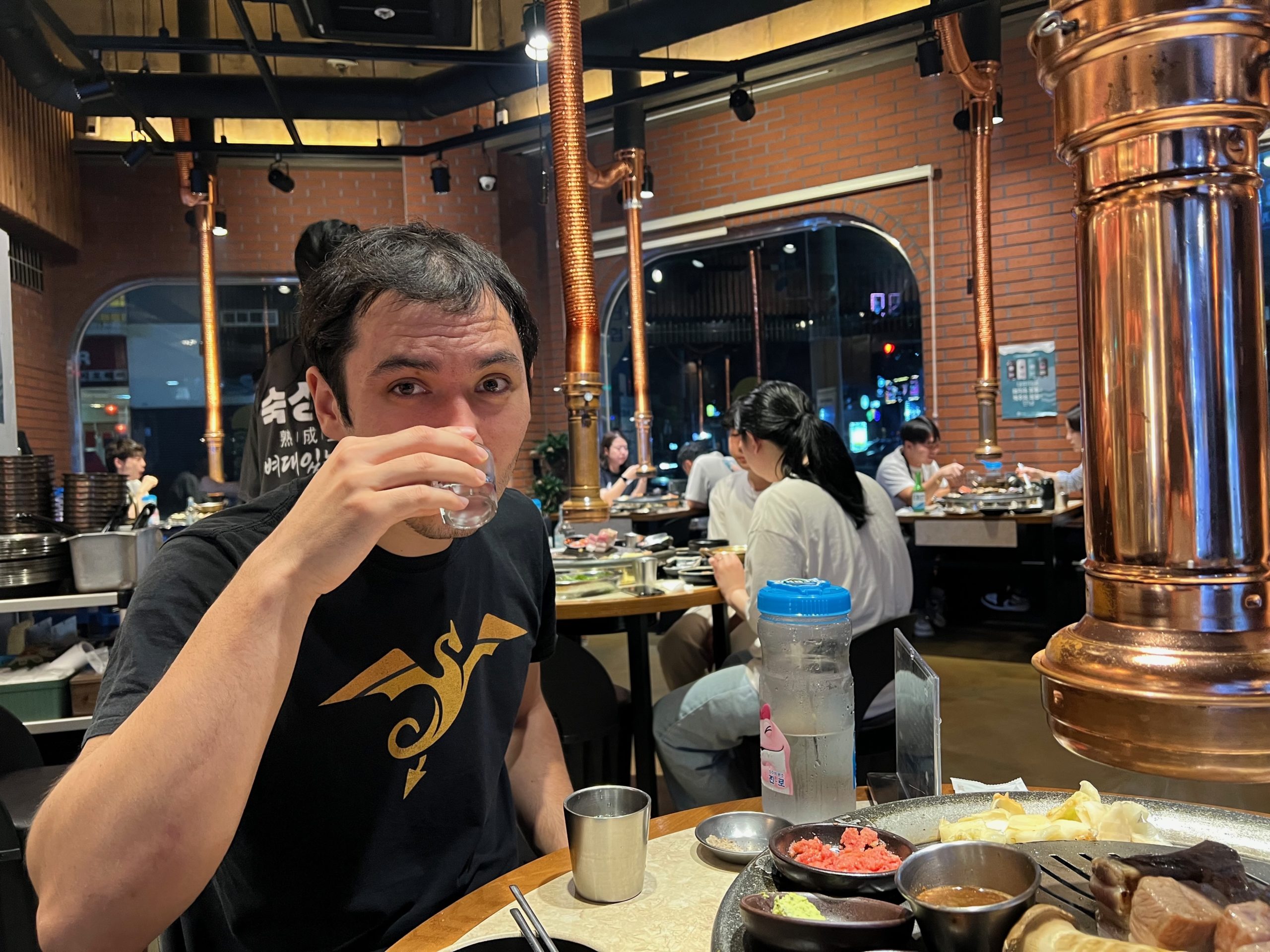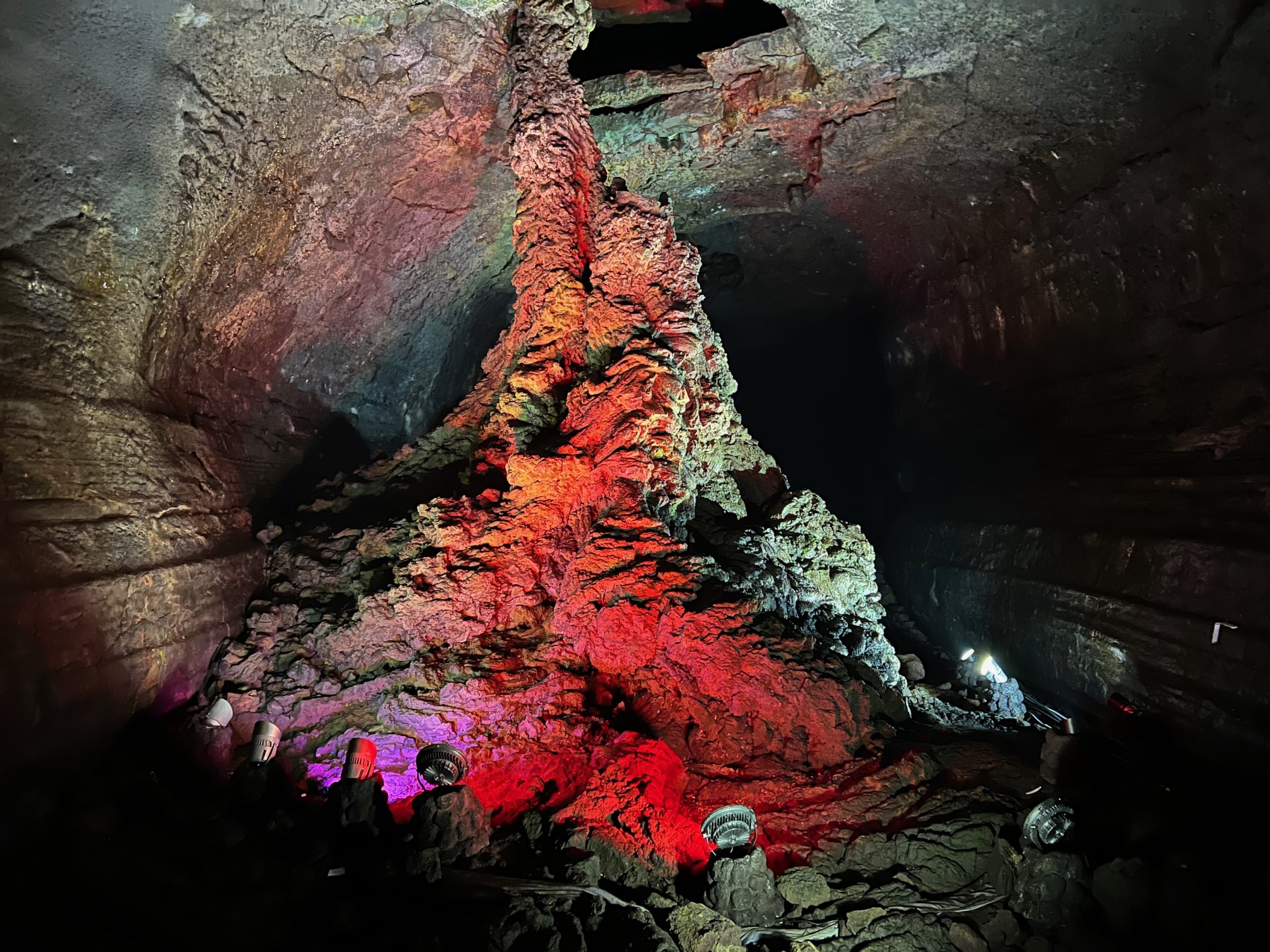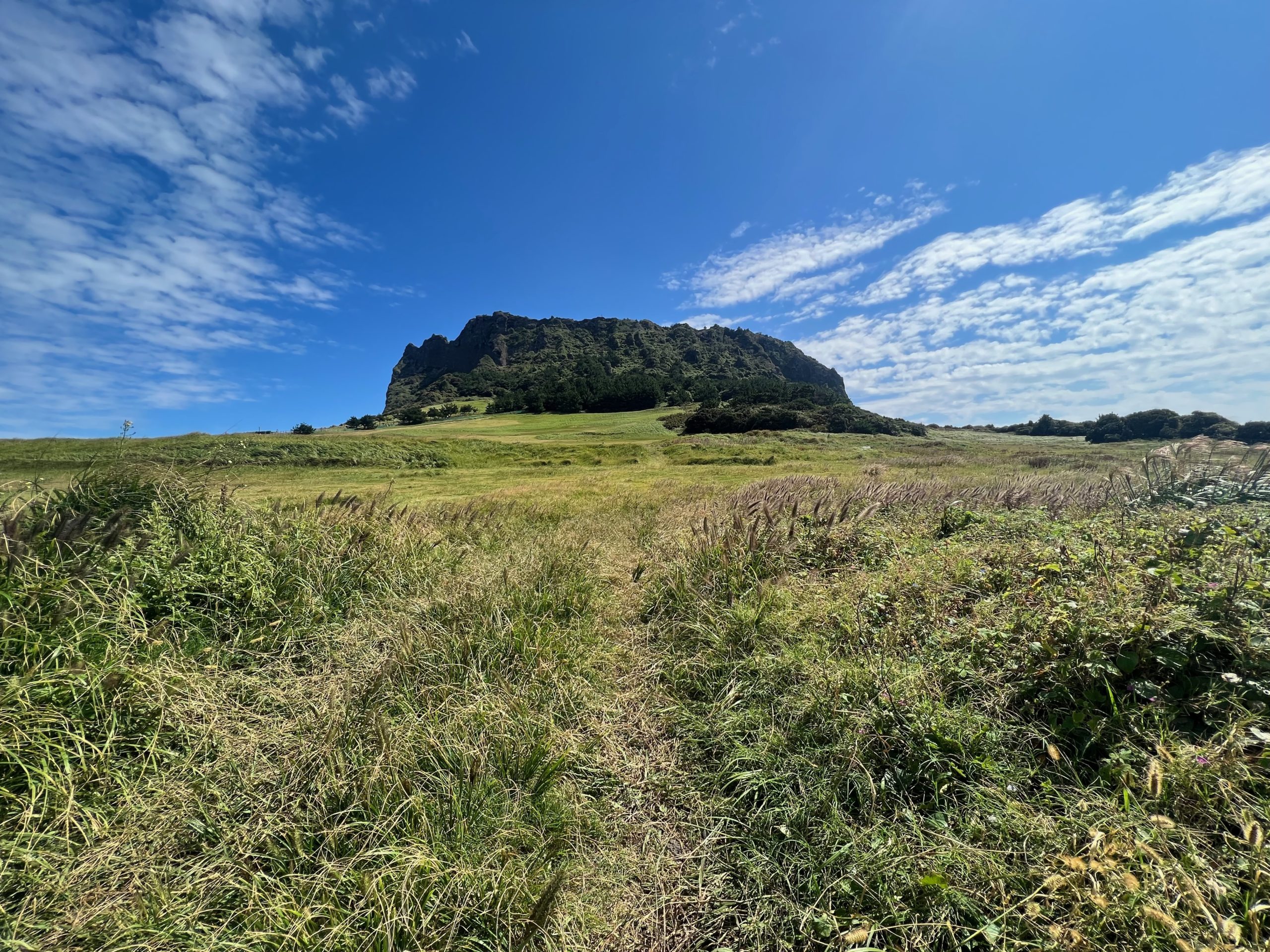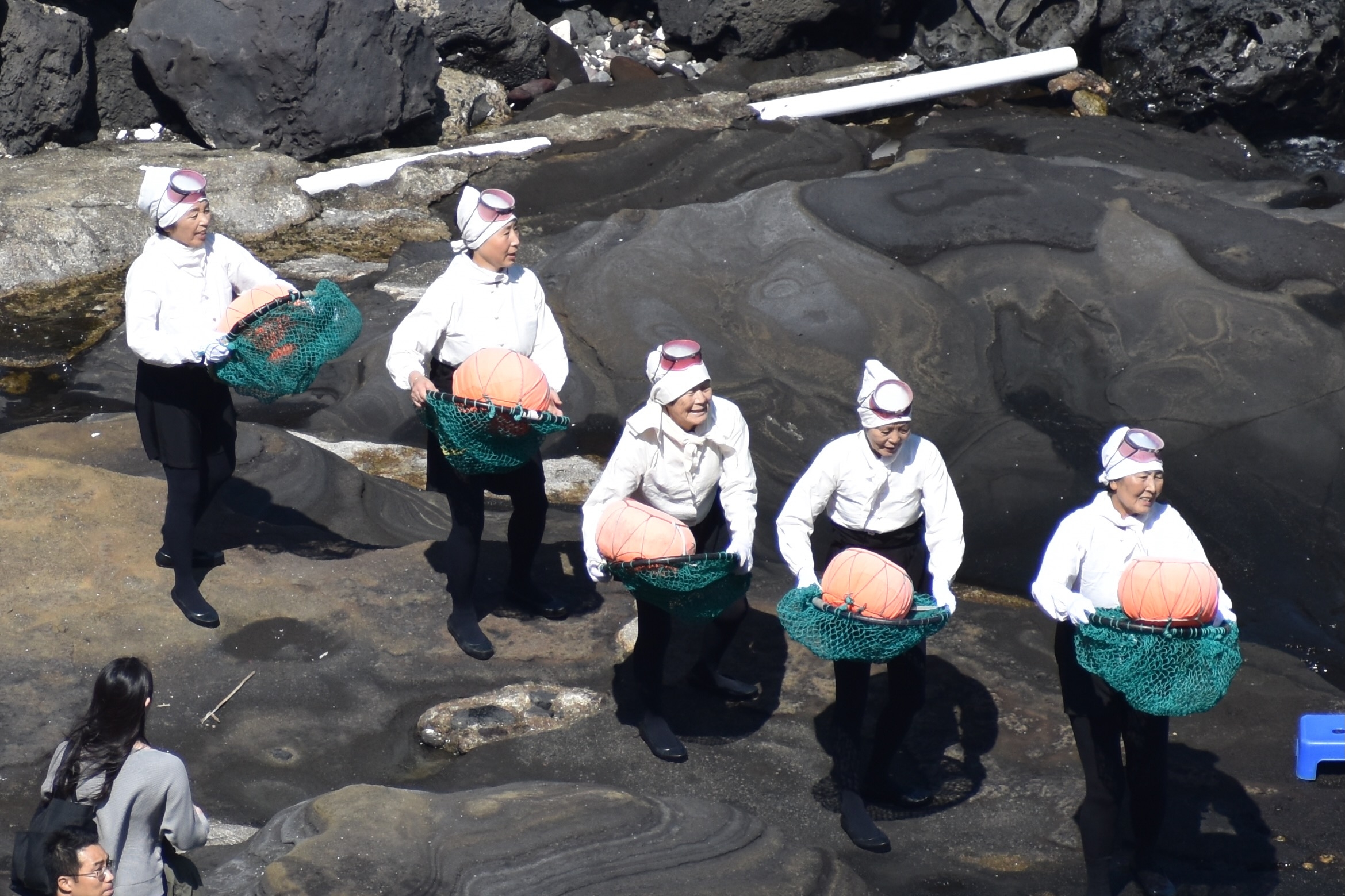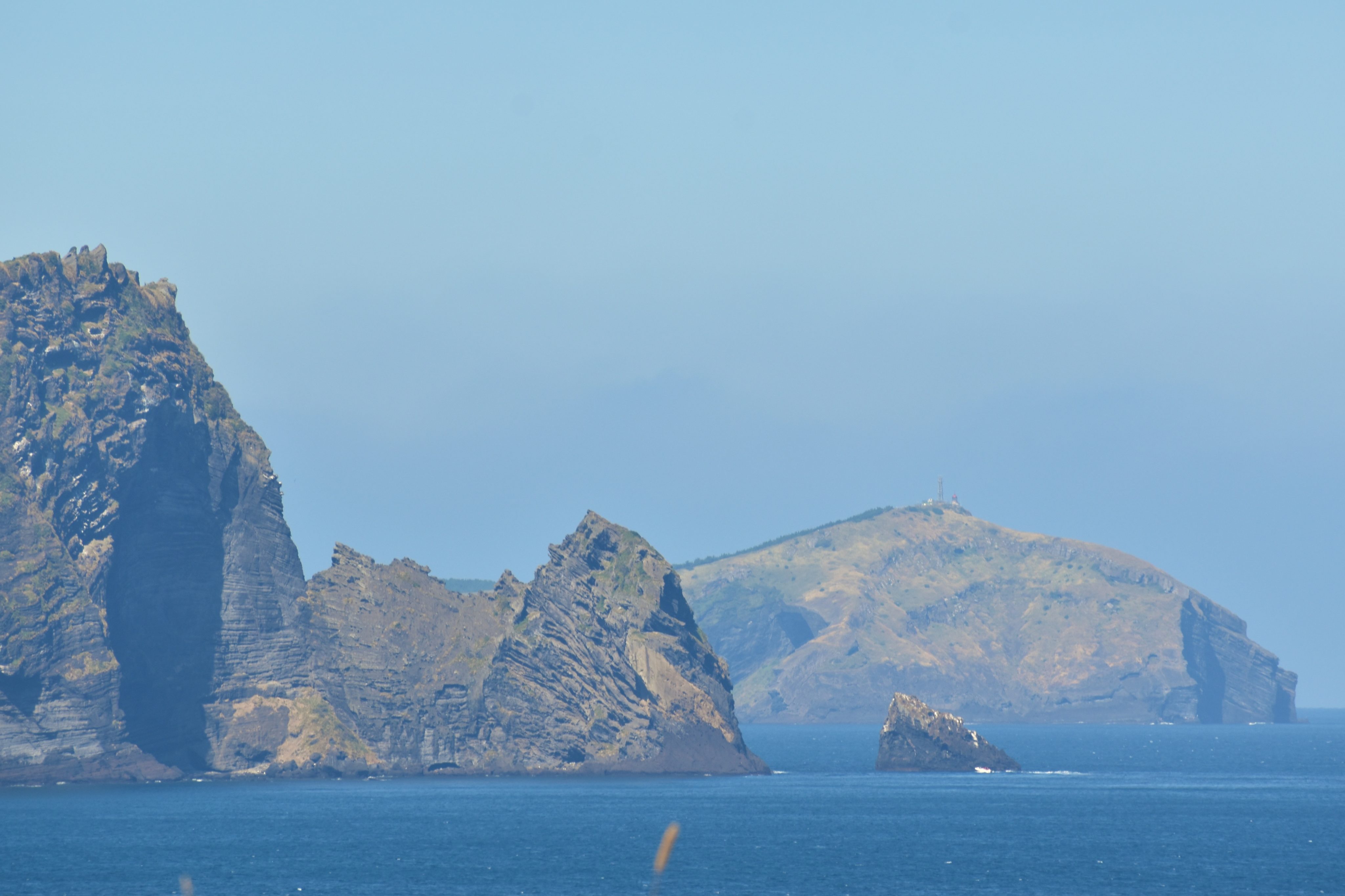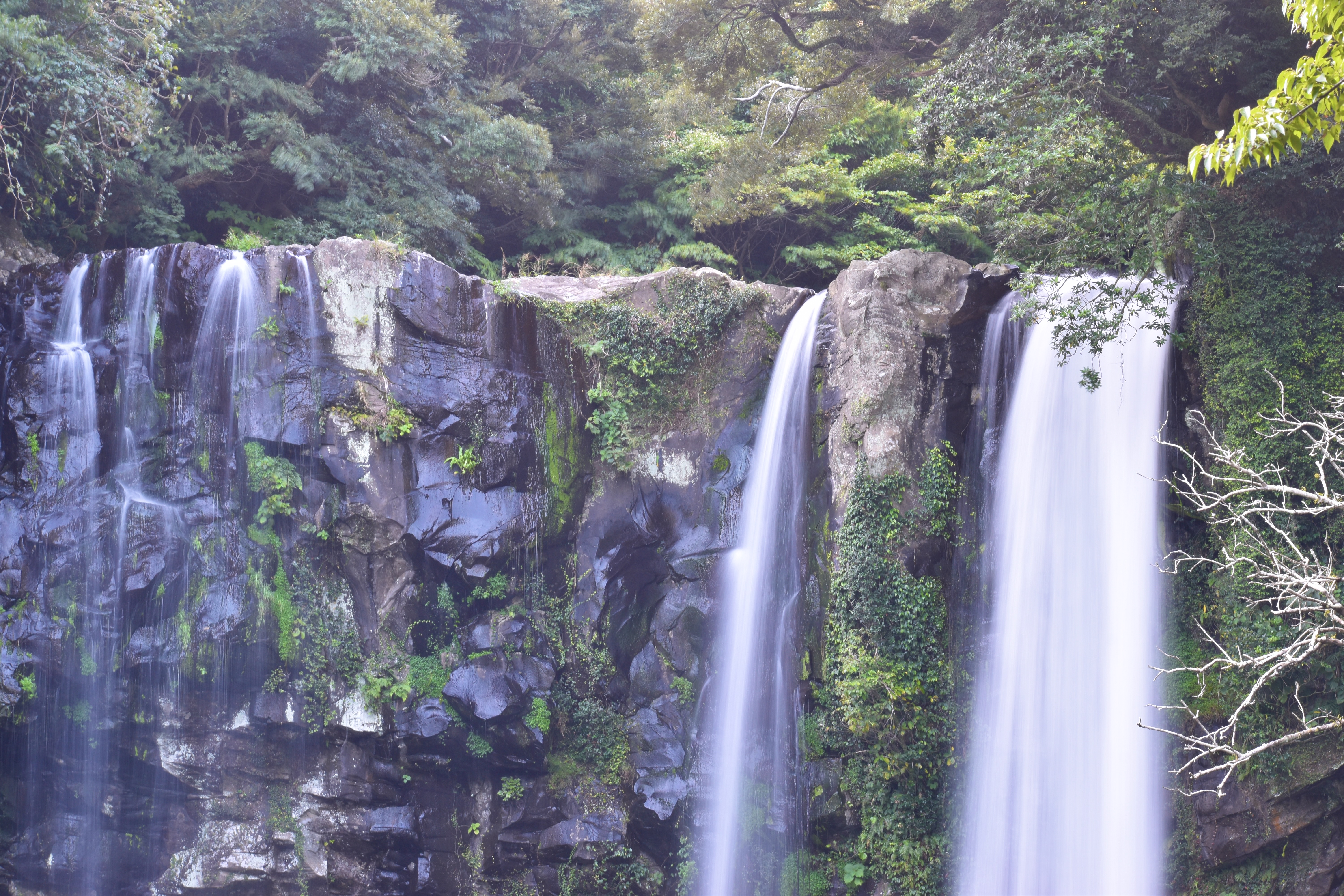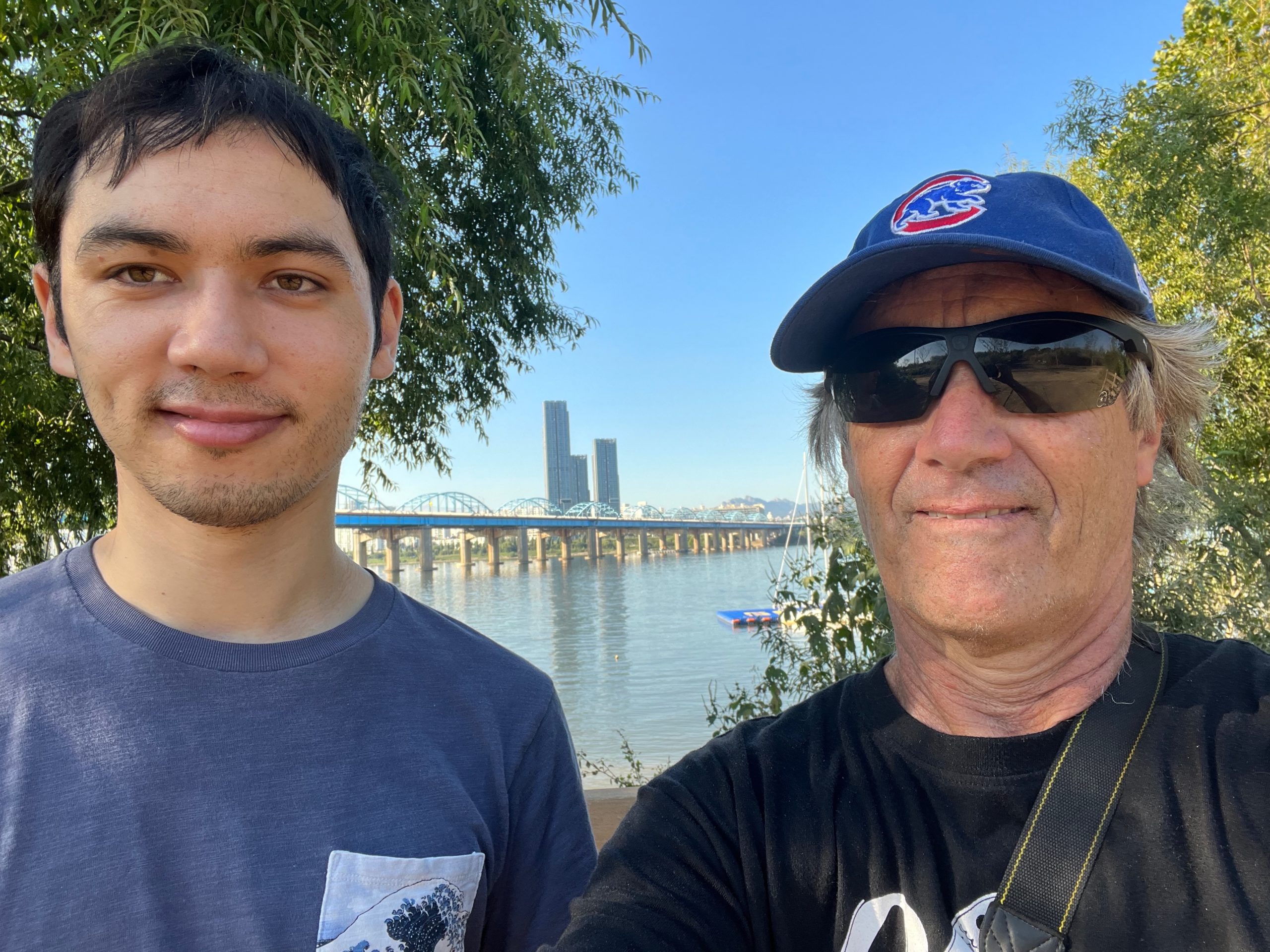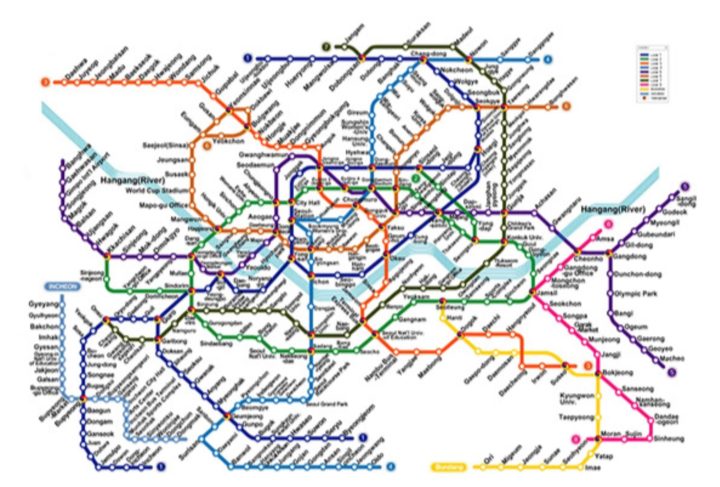Day 1 Hanoi
Welcome to the chaos of Hanoi. The humidity and heat hang in the air like a wet blanket.

Welcome to the sidewalks: tube houses ten feet wide and six stories tall, scooter parking lots, pedestrian walkways, dining areas, shops, and places where people live out their days and work. I’m told the narrow tube houses arose because taxes were based on the storefront size. Post-trip research supports this, but the architecture lived on because the property is expensive and population density is high. It was and is cheaper to build up than buy more land.
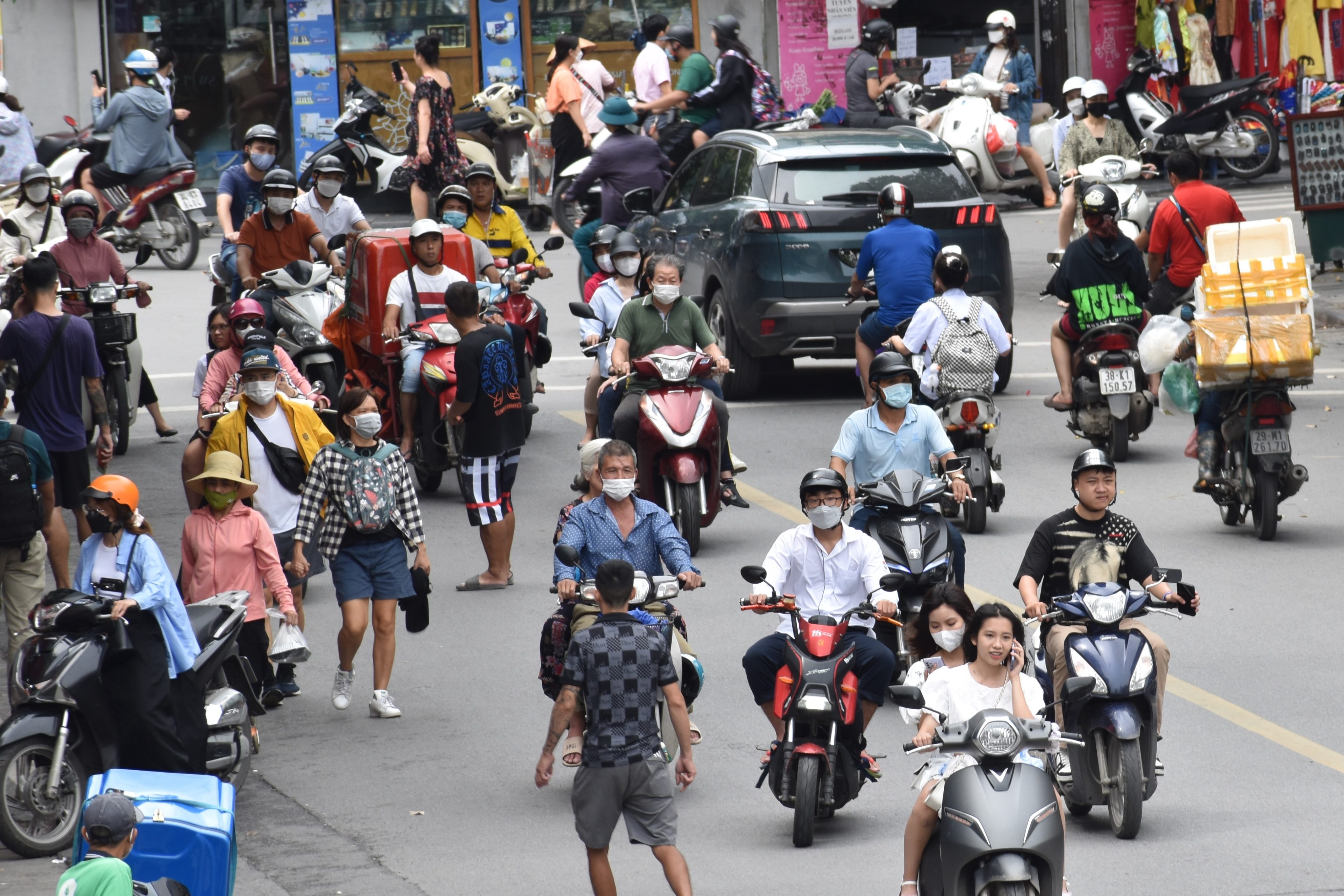
Welcome to the streets: scooter traffic, pedestrian walkways, bicycle paths, cart-pushers, car traffic, and places to sell things. The boundary between the road and the sidewalk has nothing to do with the curb. The streets are alive with the sounds of drivers honking at one another and the smells of food grilling on sidewalk barbecues. Intersections are mesmerizing, watching traffic weave its cross-hatched patterns without incident. The indoctrination to Hanoi is crossing a street without getting hit. It is an act of faith and strength, and the weak don’t survive.

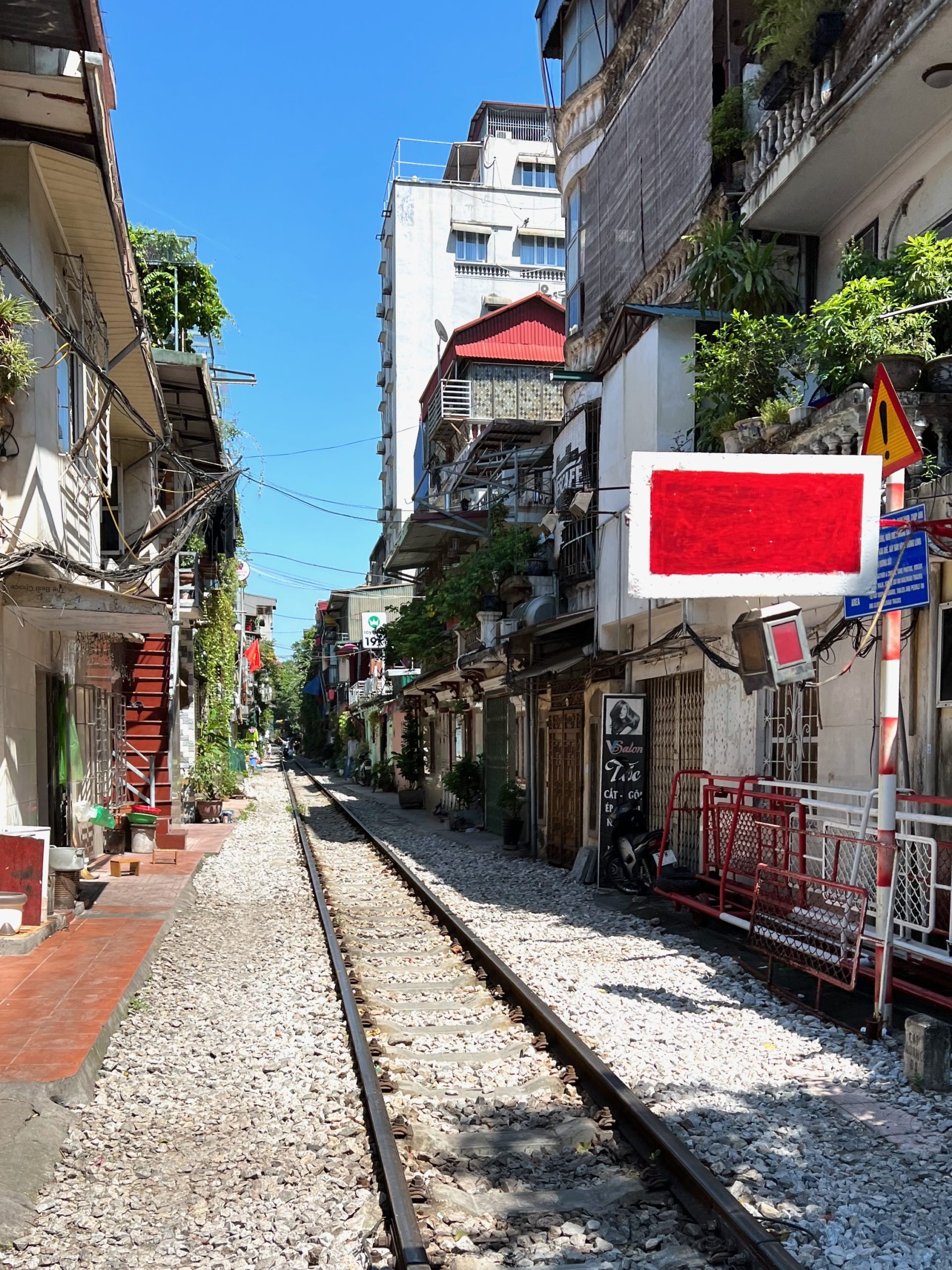
My indoctrination continued with a military jeep tour of the city. Our (Guy and myself) guides were Tring and Huyen, who both have excellent English language command. The famous Hanoi railway that runs within inches of houses was not operating because of an incident of nearly hitting tourists. We stopped by a bridge reported having been built by Eiffel, the same architect that built the Eiffel Tower. It looks like an Eiffel Tower laid on its side. We passed by the mausoleum of Ho Chi Minh. Before going on display in Hanoi, his body survived seven years in a freezer in Russia.
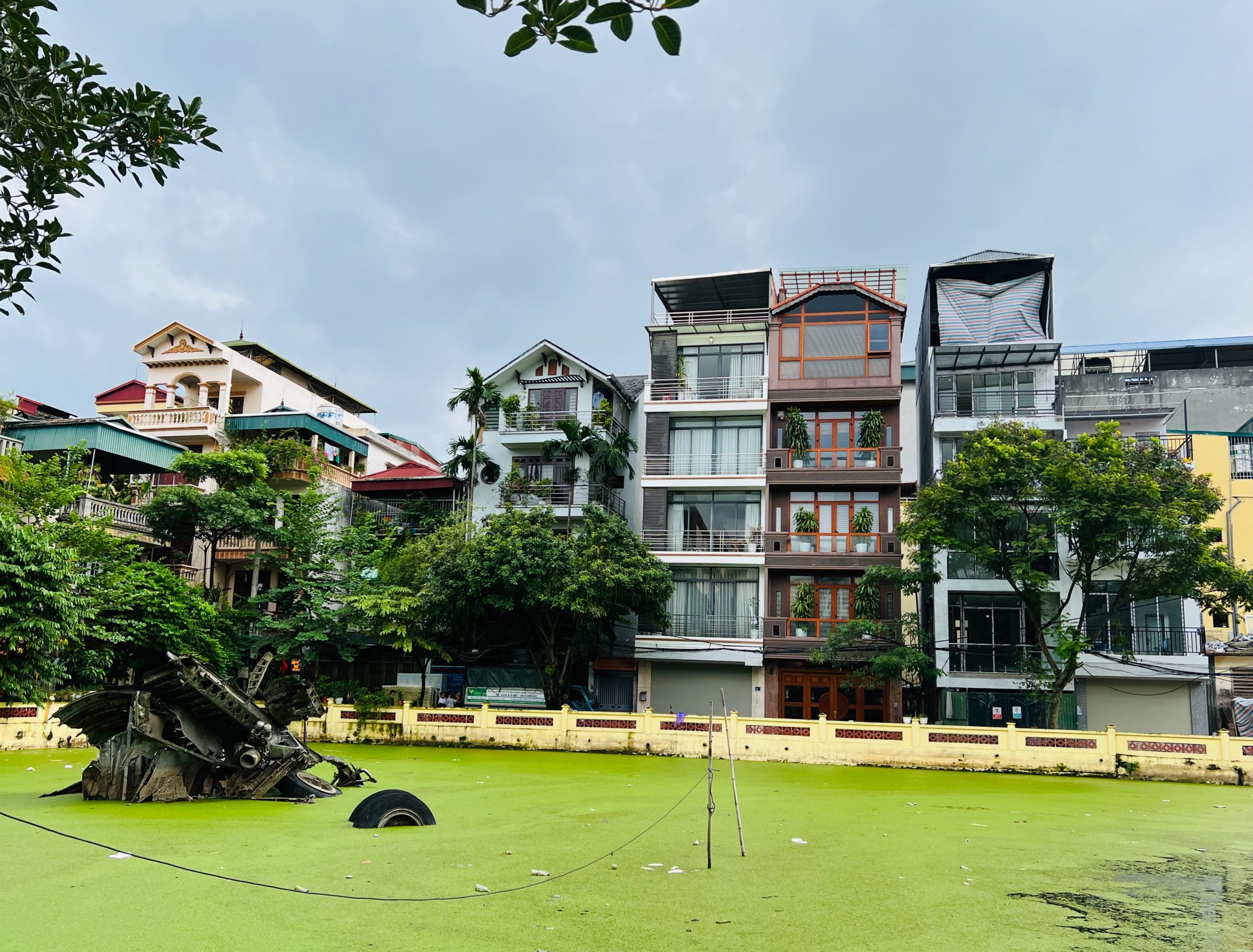
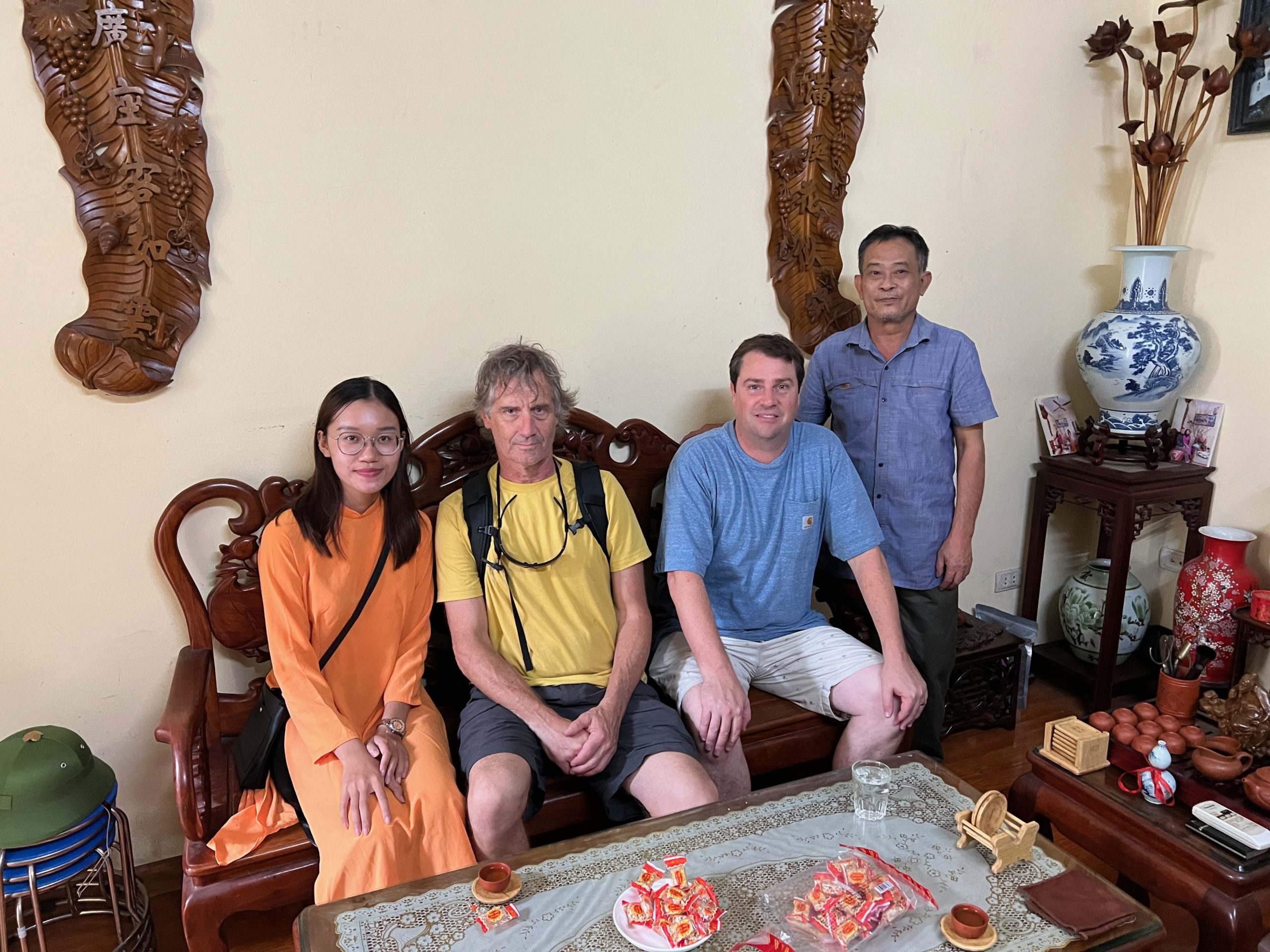
We visited with a Vietnam war survivor, Duc, living in a building complex fronted by a downed B-52 left as a historical marker in a pool. He was born in 1960, the same year I was born. His house was decorated with urns and multiple-framed folk art prints, and he served us astringent green tea and peanut butter brittle. The conversation turned very intense in the tearful retelling of his memories of the war. He has memories of John McCain’s capture. I’m not sure of the translation, but the emotion was unmistakable. My memories of the Vietnam war are through second-hand stories and television reports: “a guy next to me was turned off like a light bulb,” the images of the helicopter lifting off the embassy during the evacuation, the reports of the Mai Lai massacre (they knew that only one man was convicted), and Nixon’s illegal carpet bombings of Cambodia. Duc’s message is that war is a lose-lose proposition. I like the symbolism of the B52 sheet metal that he has incorporated into his garden, literally picking up the pieces, building with them, and moving on.
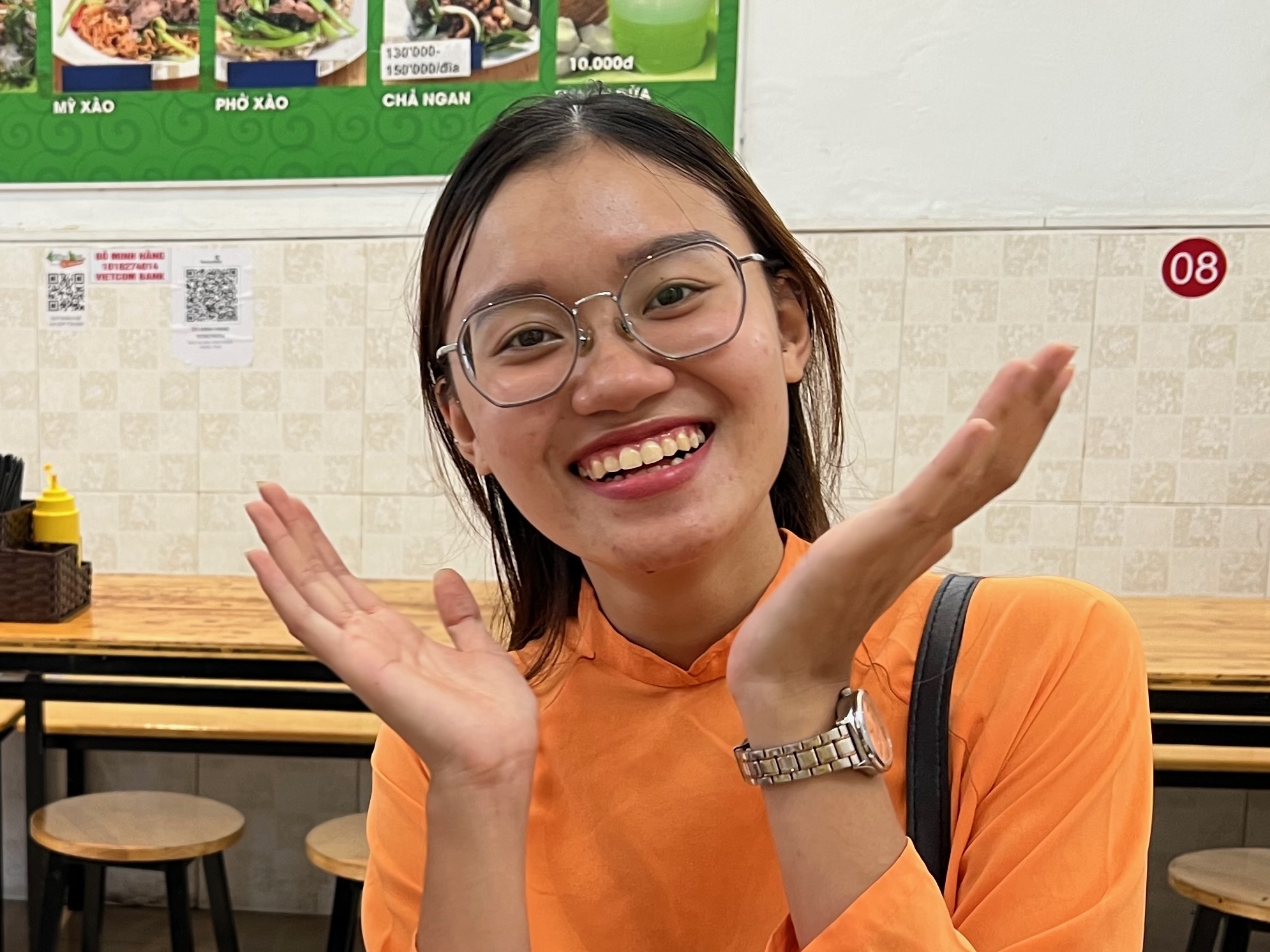
On the rest of the long ride, I learned from Huyen that :
* The people’s religion is respect for ancestors and local shrines.
* Water, energy, and communications are state-operated.
* The state provides public health and education but is augmented by private versions, sometimes in the same building.
* The trash all goes to a giant landfill outside Hanoi.
* She studied German; her favorite series is “Never Have I Ever.”
* She is young enough (22) to never have lived in an occupied Vietnam.
* The youth are angry at inflation, which, while understandable, is not as bad as being angry at someone dropping bombs on your head.
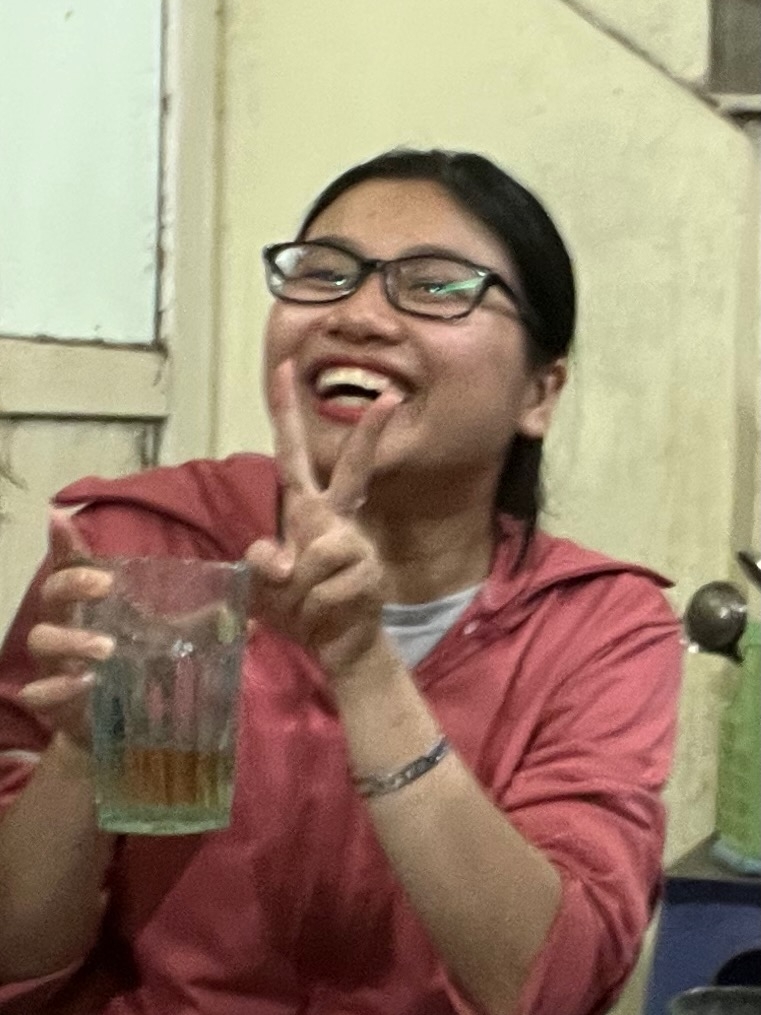
Later that night, Guy had us on a brew tour. Our guide was Lan, an effervescent young lady that smiled for the entire four-hour excursion. She is absolutely adorable. She is five feet nothing tall and led us, and two other big guys, fearlessly about the city. She says she has no fear of walking around by herself at night. What is it with American cities? The night was my introduction to the sidewalk cafe, with its red plastic kindergarten seats, short tables, piss holes in crumbling cement closets, and street food. I can’t say I care much for fizzy, 3.5% beer, craft, or otherwise, but maybe it’s what keeps the streets safe from tipsy drivers in the chaos.
Day 2 Ninh Binh
The bus for Ninh Binh was leaving at 7 a.m., about two hours before I was planning on getting up. We spent over five hours on a bus for three hours of activity.
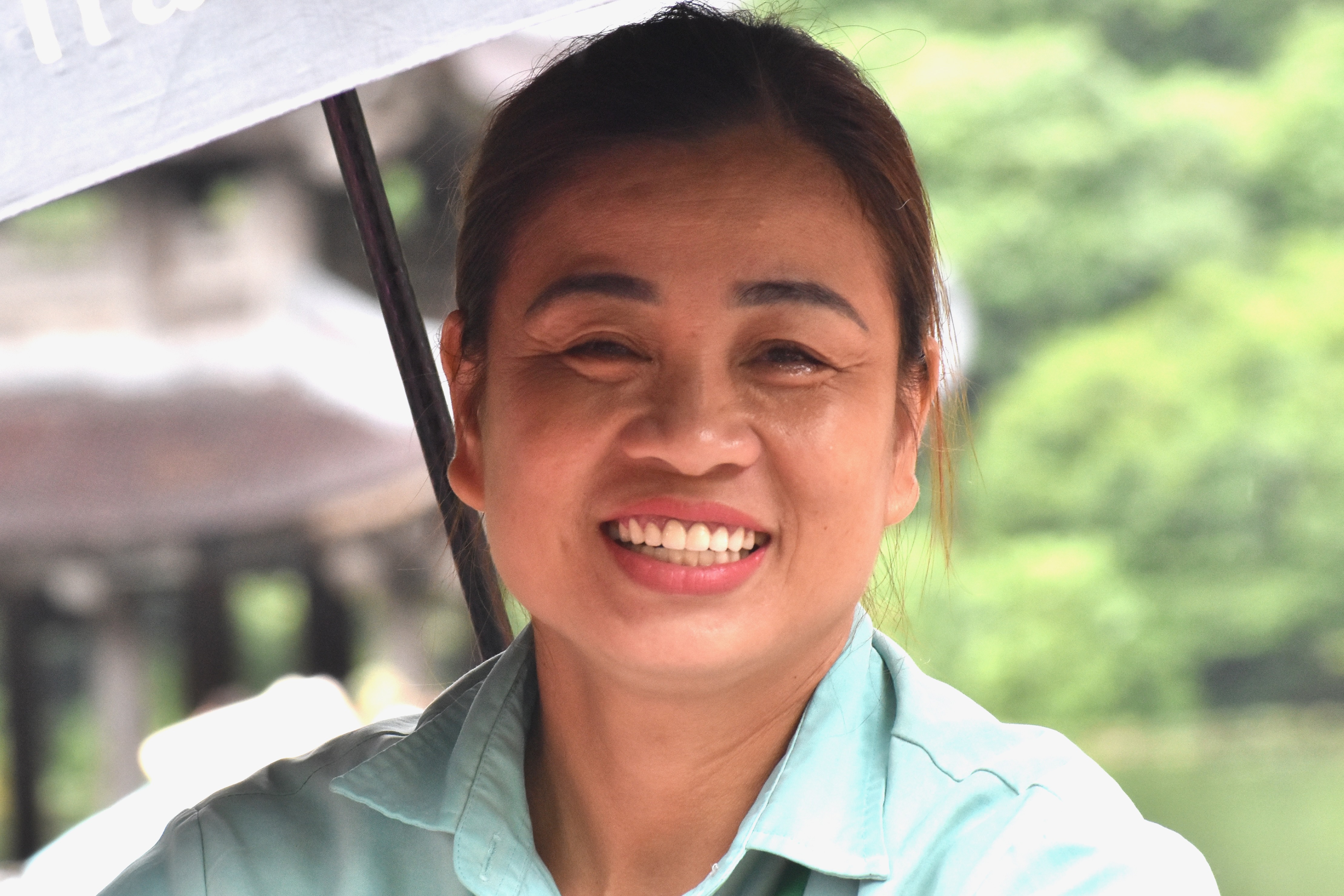
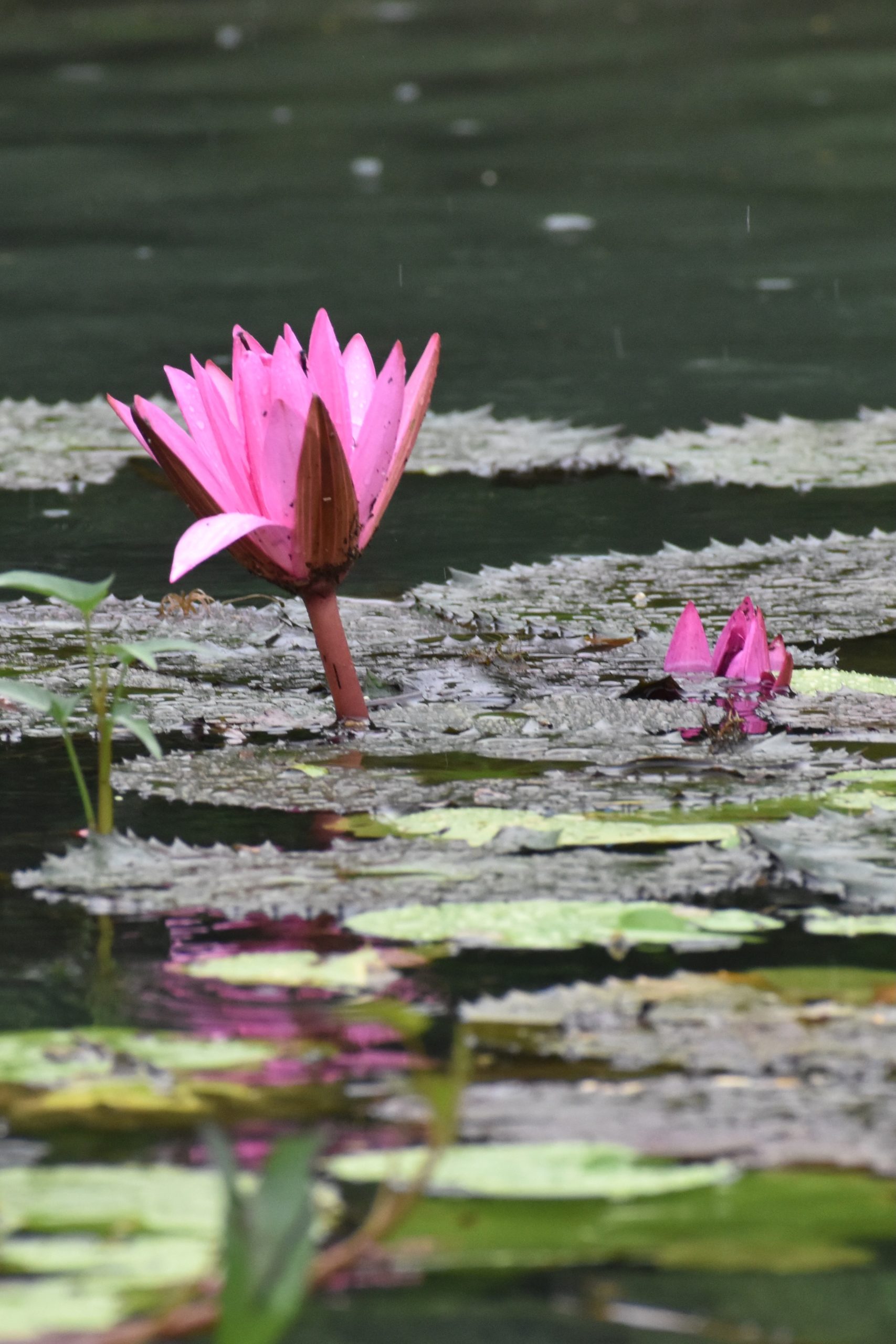
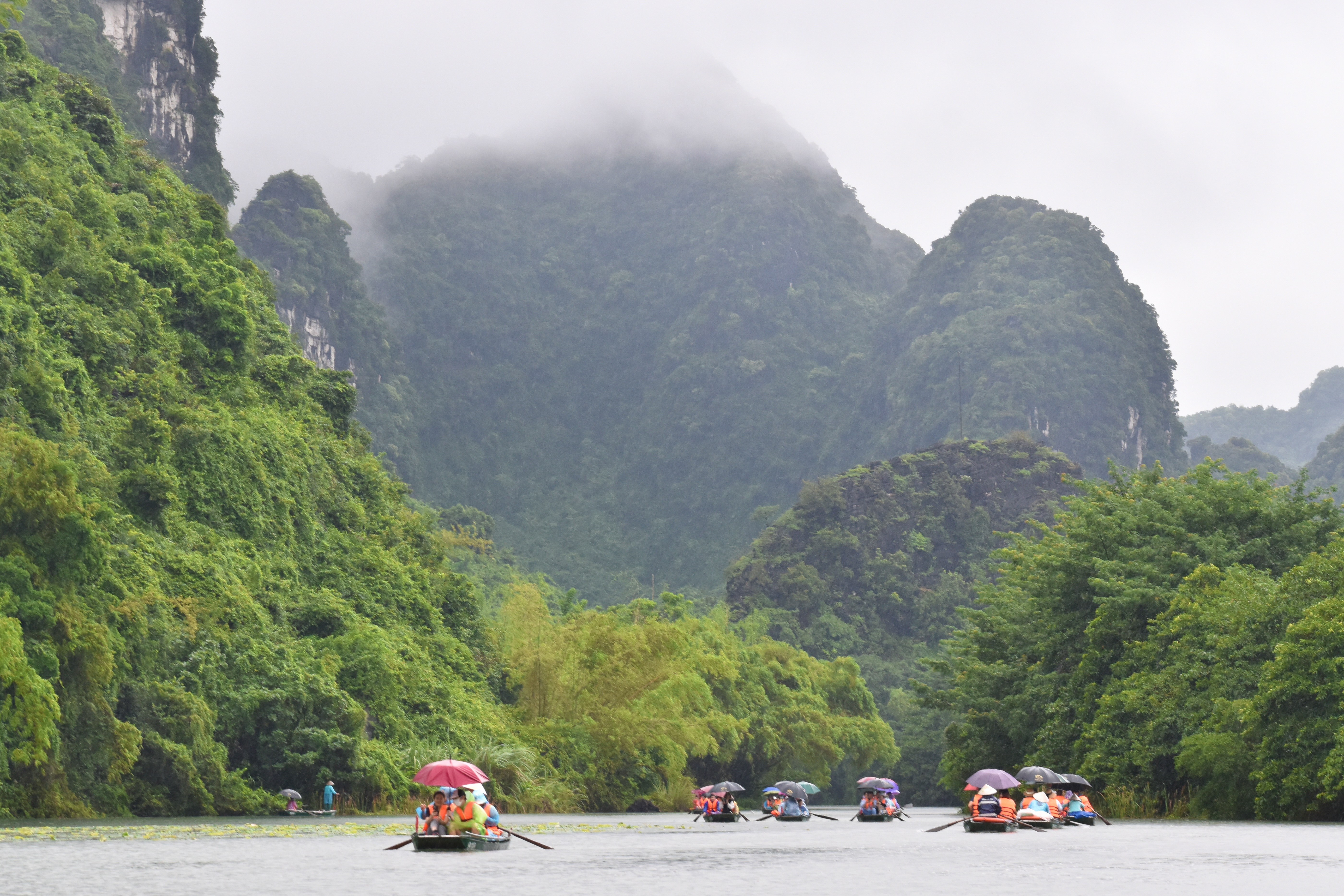
Trang An in Ninh Binh province was our introduction to the fascinating karst landscape of Northern Vietnam. We took a river ride down the Sao Khe River on Vietnamese woman-powered row boats. Unlike other row boats, the rowers face forward. It helps with the steering and lets them watch their passengers. Once I learned I could paddle, I laid into it for most of the trip, mainly for exercise but also to help our rower. I had heard that the daily two-hour rows take their toll on women’s bodies. They chew on some type of intoxicating leaf to ease their pain. The penalty for drug use and trafficking in Vietnam is death.
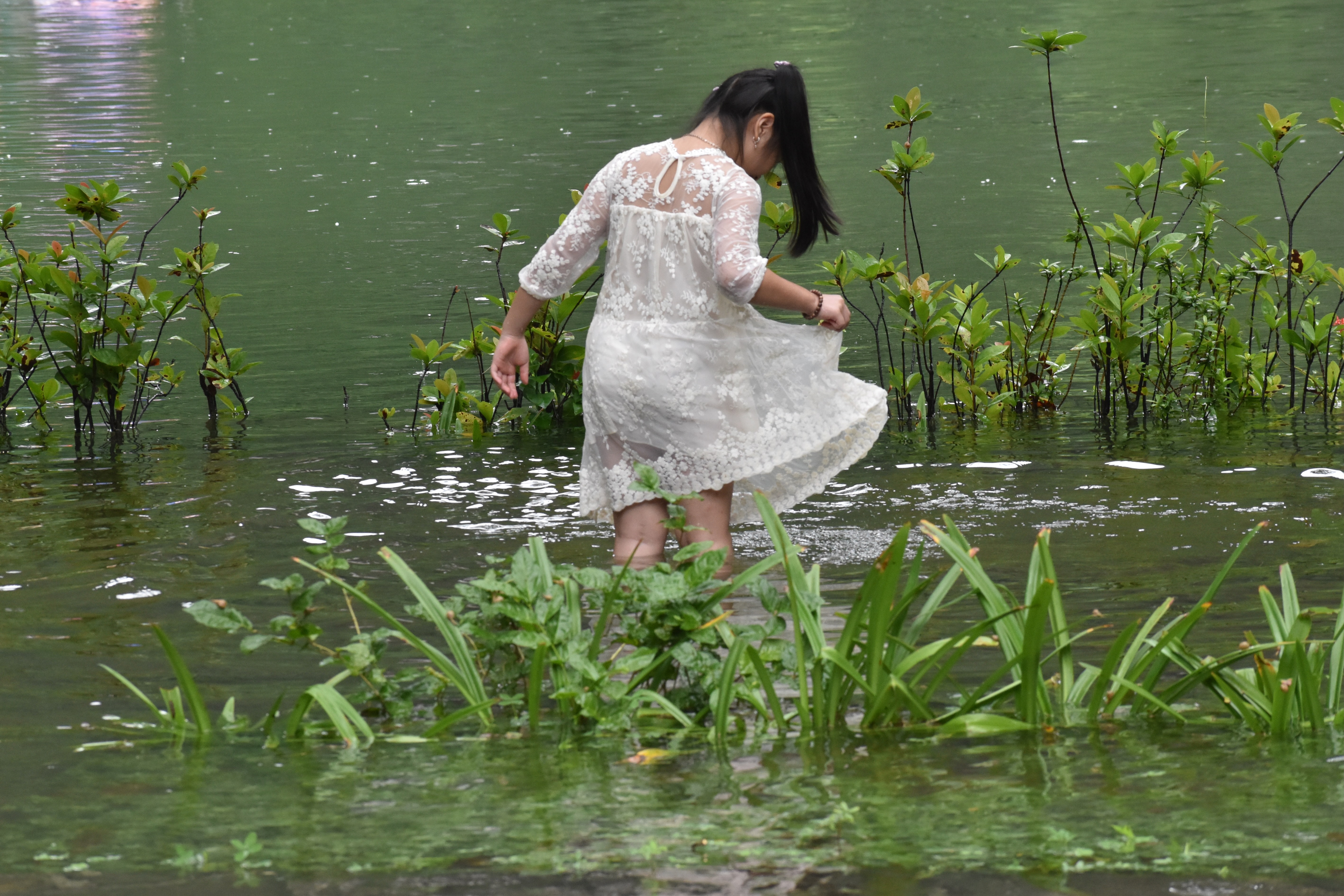
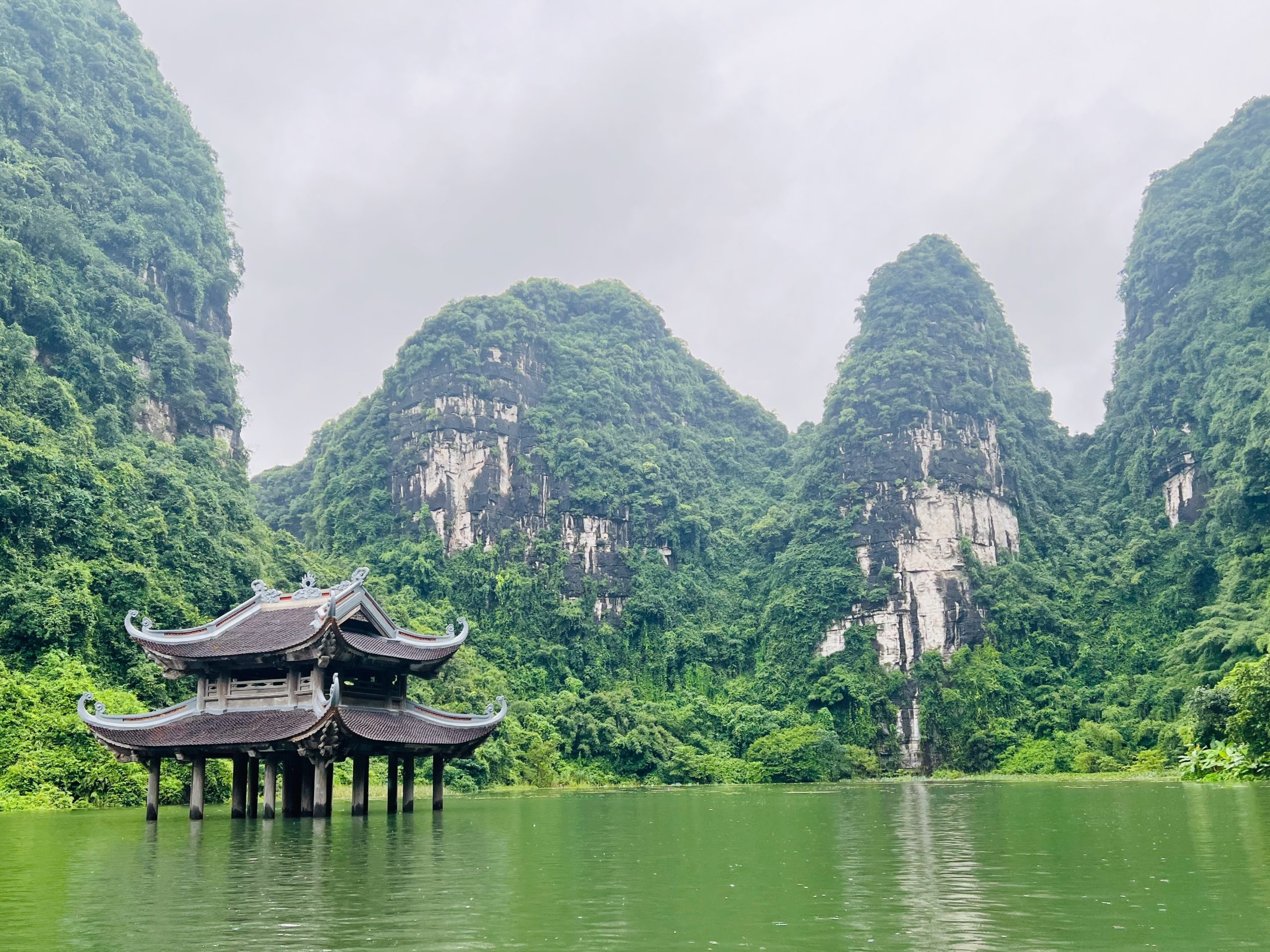
We powered our way through the imposing karst landscape shrouded in rain clouds, visiting temples along the way. High water prevented entrance to the caves and flooded the temple grounds. The platform of the water temple was completely underwater.
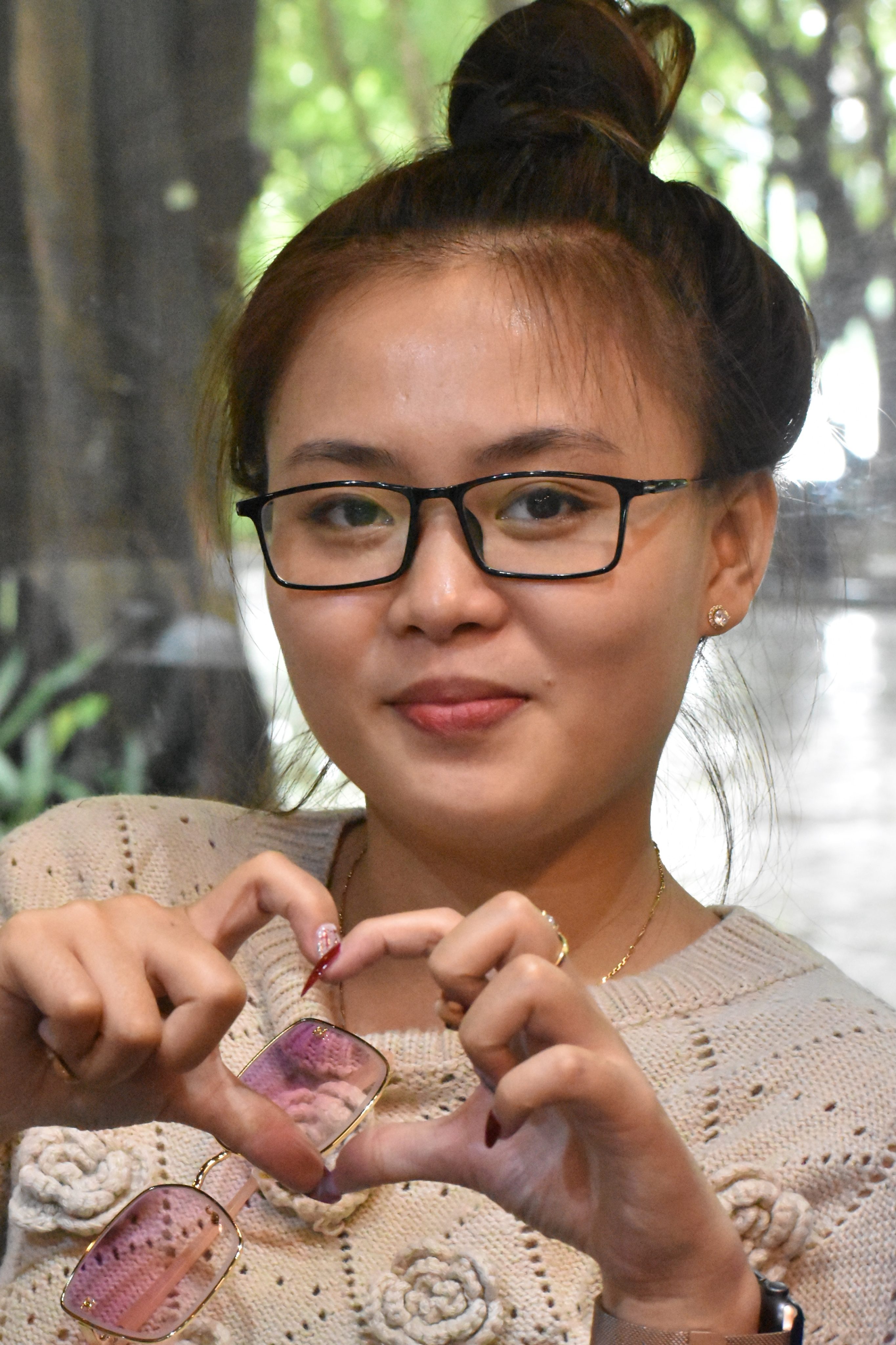
After the ride, our tour group dined in the restaurant. In the spirit of trying new things, I sample goat blood sauce. I’m not sure if because I knew what it was or not, but I didn’t like the texture or the taste. Blood of any kind is off my menu.
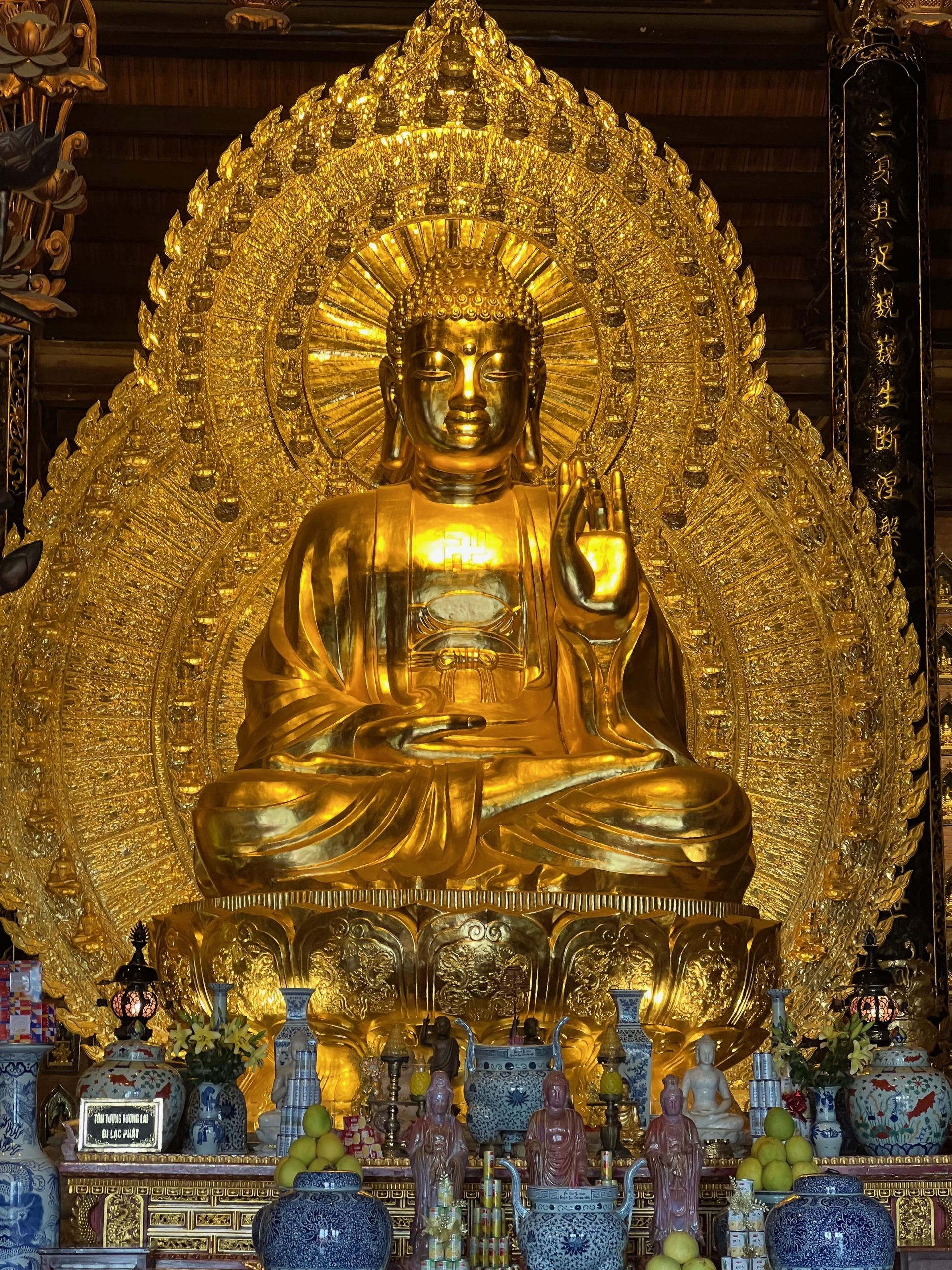
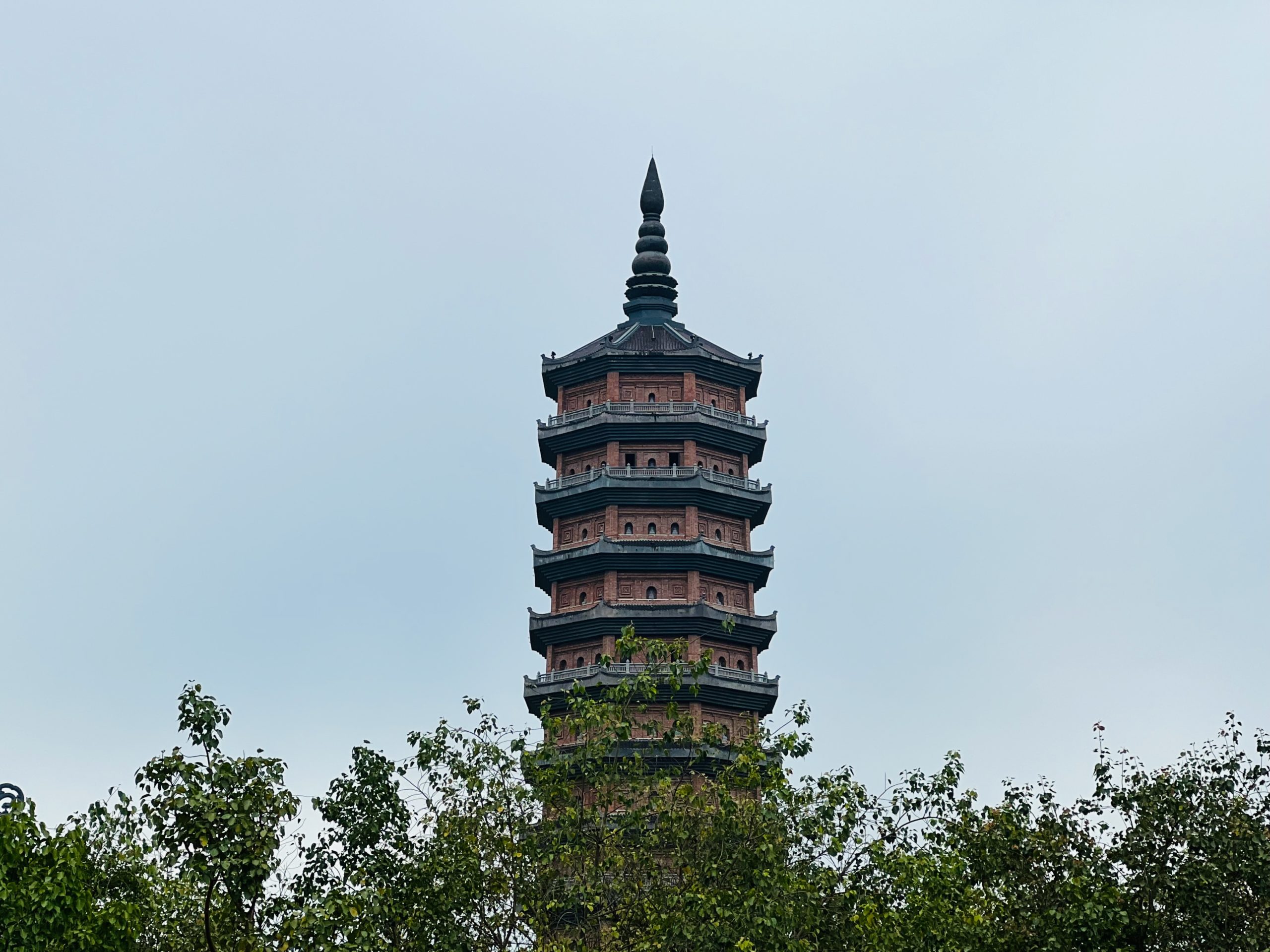
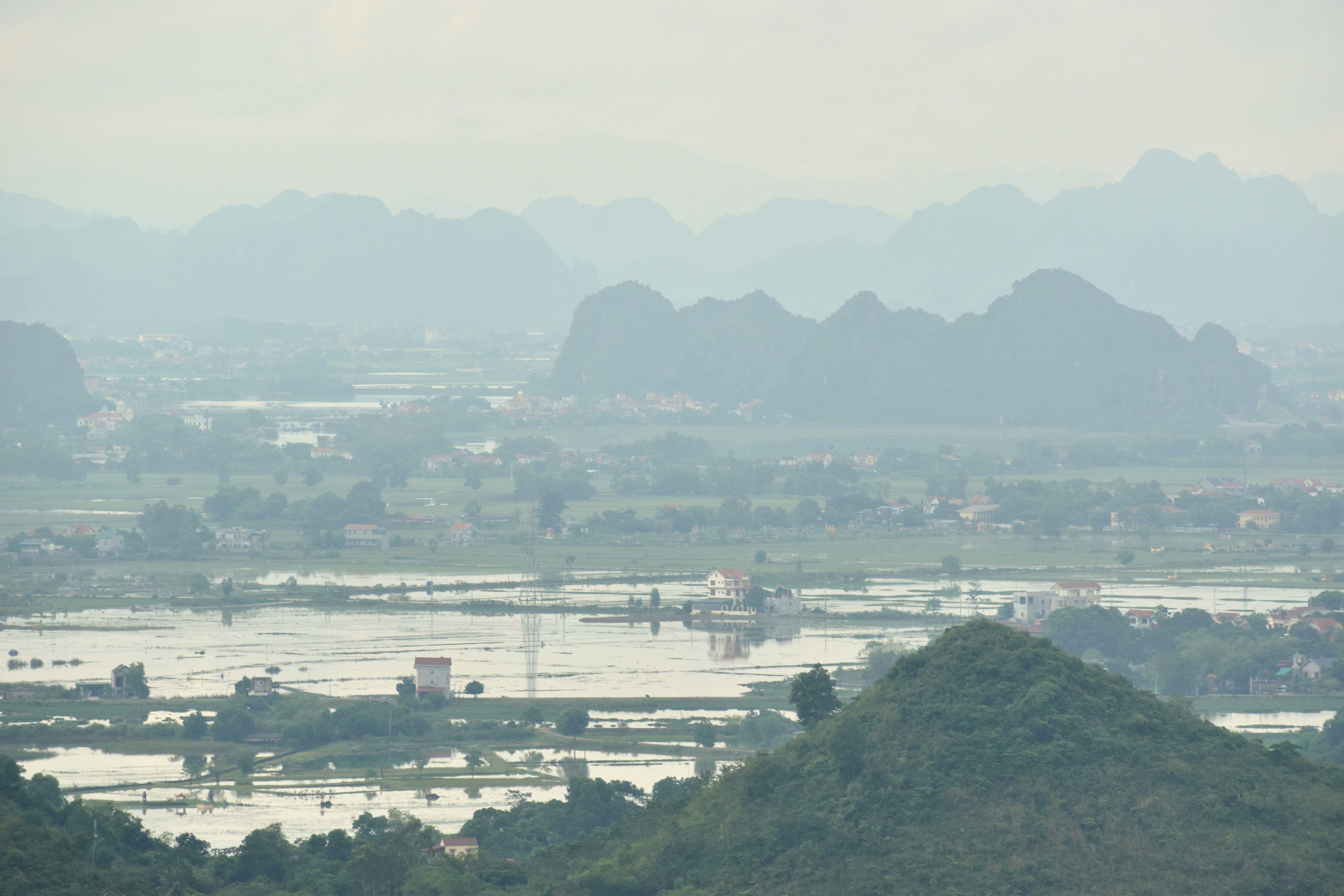
Running out of time, we had an abbreviated tour of the Buddhist Bai Dinh Pagoda complex, offering incense to giant gold-colored Buddhas and admiring the view of the surrounding Ninh Binh flood plains from the top of the Bao Thap Tower. When I asked how old the place was, the guide told me it was built in the early 2000s. It surprised me, expecting the answer of centuries, if not millennia, old. Post-trip research suggests there is an old temple and a new one, so maybe the guide misinterpreted the question narrowly, thinking I was referring to just the temple at which we were standing.
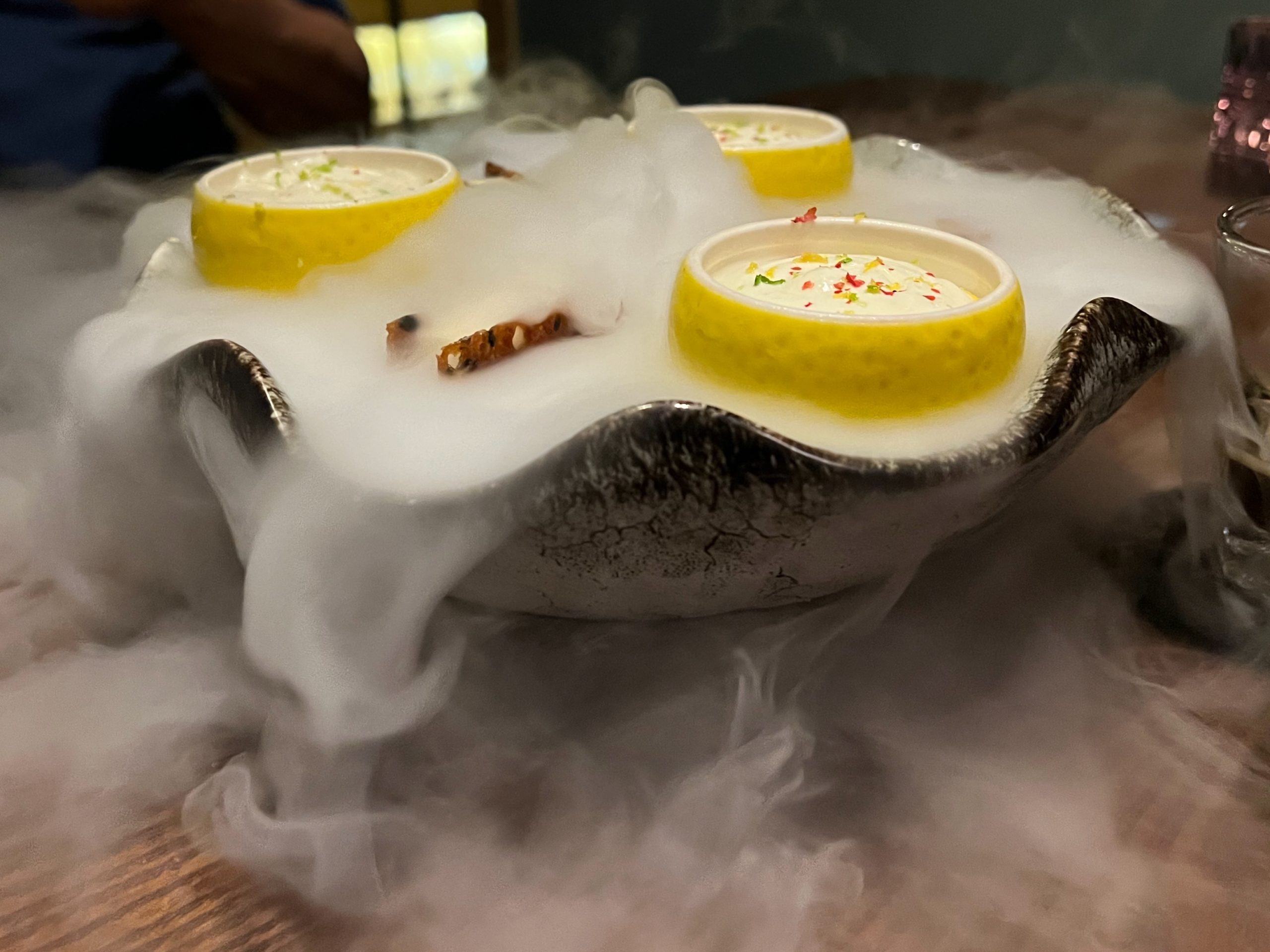
After the long and tedious two-and-a-half-hour trip back to Hanoi, Guy took us to an expensive 20-course tasting menu at TUNG (Twisted, Unique, Natural, Gastronomic) restaurant. It’s not my style: overeating food makes me feel dirty, and being served too little makes me feel cheated, so it’s a no-win scenario. The portions were small, and I didn’t throw in the towel until dessert. It was a bit overwhelming, and I only remember the foie gras because that is something I had written about in a book. Duck liver is another thing I will never order again. The wine was pleasing, each course was interesting, and the presentation was thoughtful. But would you ski for a minute, jump on a surfboard at a wave machine, skydive in a wind machine, hike up a trail for a tenth of a mile and say you had the experience?
Day 3 Ha Giang Loop Day 1 Hanoi
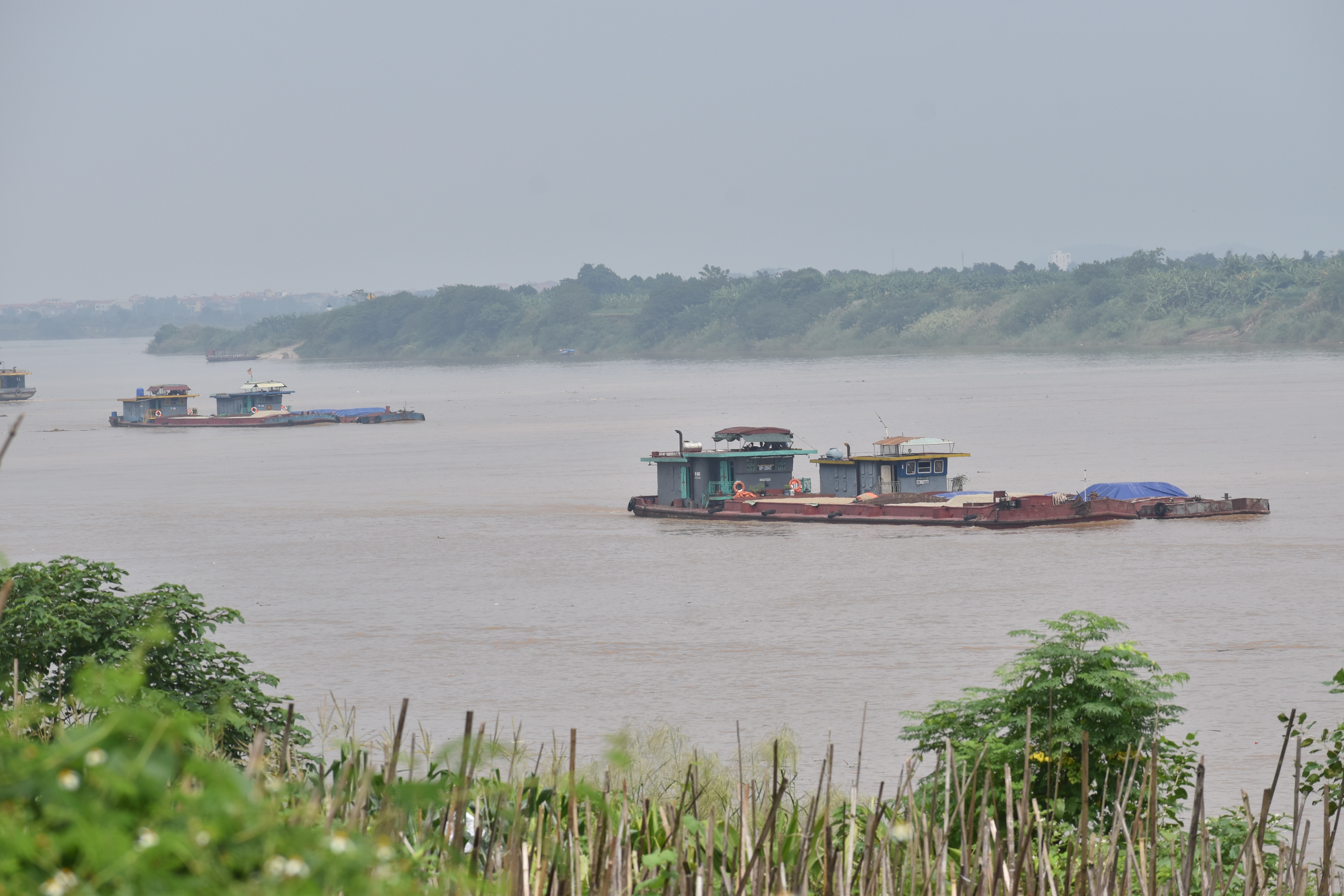
On what would have been the first day of our transit of the Ha Giang Loop, while waiting for the delayed arrival of Chris and Hetal, I rode with Hoan, our guide, the leader of our trip for the next eight days, to Ba Vi National Park to the west of Hanoi. On the fifteen-minute walk from the hotel to the motorcycle shop, it felt like I was wearing the humidity like a winter coat in a heated car, so I rode without my motorcycle jacket, violating my ATGATT (All the Gear, All the Time) training. On the way out of the city, I only briefly negotiated the insanity of Hanoi traffic before Hoan led to a lightly traveled road that followed the red river.
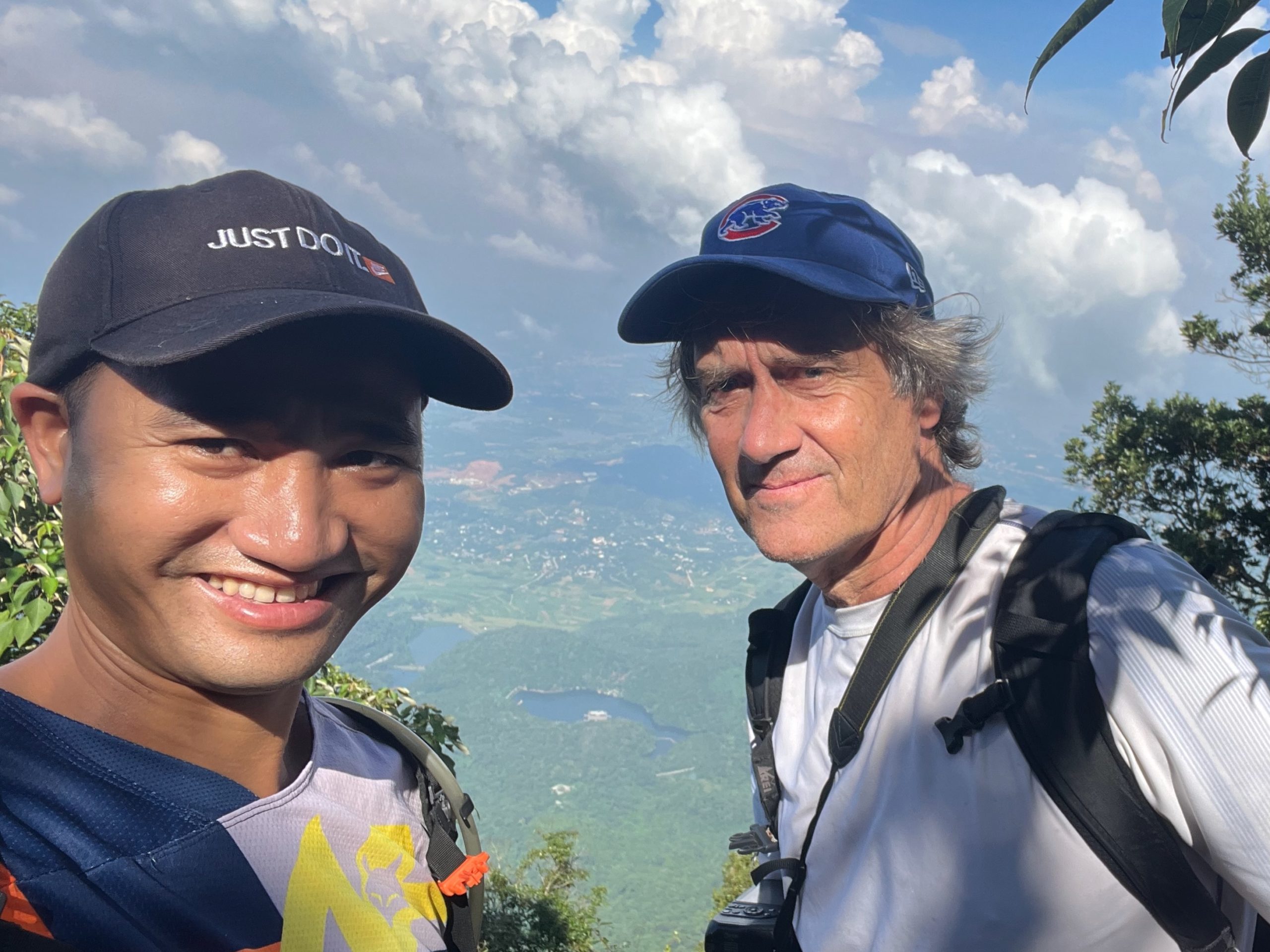
We stopped at a restaurant where an expressionless young lady named Emily served us. I figured Hoan probably had some regular stops where he knew people and maybe even raked in a little commission for the effort. I asked Hoan about tipping, and he told me if I left a tip, that person would remember me for life. So I left a small tip, and as we were suiting up, a beaming Emily came out of the restaurant to see us off and thank us, still holding the dong (Vietnamese currency) in her hand. Her face had brightened from blank to supernova so she might remember me for at least a few days. The tip was worth every dong, unlike most, which feel like a tax. At each of the following stops, we met another Emily. I figured maybe the name Emily was a job requirement, but what I learned is that it is just a way of addressing a person, usually younger and female, em being the word for sister.
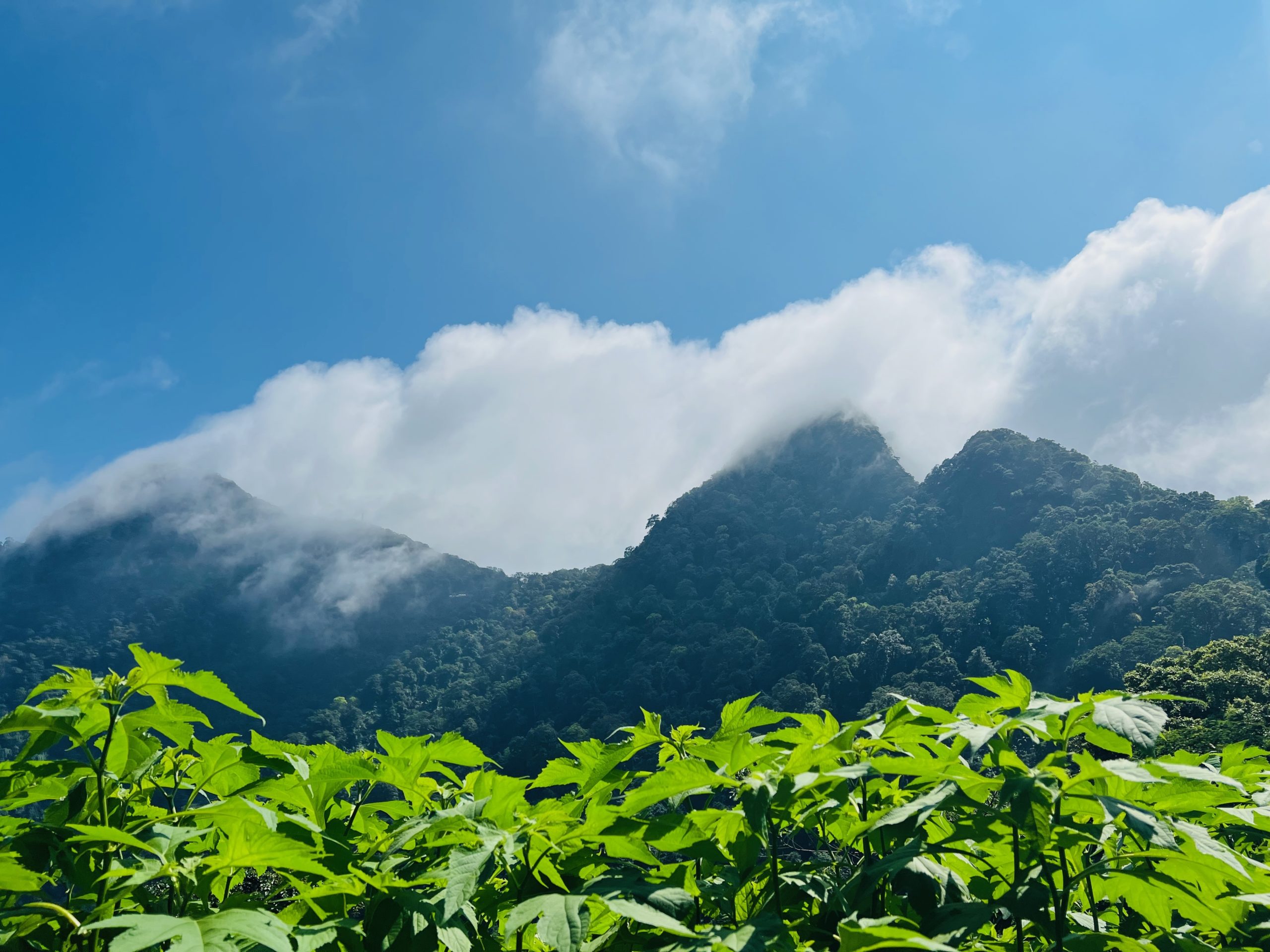
We rode up the mountain on curving and usually wet roads to a saddle between the summits. I made Hoan hike up the 1200 stairs to the top of the taller twin peaks to admire the Buddhist temple and the view.
On the way back, we stopped for a half hour to sit out a downpour.
Hoan wanted to make it back before rush hour to avoid the traffic, but delayed by the rain and the hike, we hit rush hour traffic dead on. I can only describe that experience as a two-hour bike walk and balancing act, trying not to hit the person in front of me and not step on the toes of the people on either side of me. A scooter, bus, or car immediately filled the slightest gap in front of me. Traffic signals are mere suggestions and not rules. While Hoan explained that honking is their way of saying hello, clearly, there is a set of drivers that bully their way through traffic, laying on the horn and riding inches off the back tire of the vehicle in front of them. It took us about two hours to go that last ten kilometers.
Comparing the five-hour bus ride to and from Ninh Binh against the eight hours of riding on the motorcycle to and from Ba Vi was the difference between impatient boredom and exhausted exhilaration.
Day 4 Ha Giang Loop Day 2 Hanoi to Vinh Linh Family Homestay
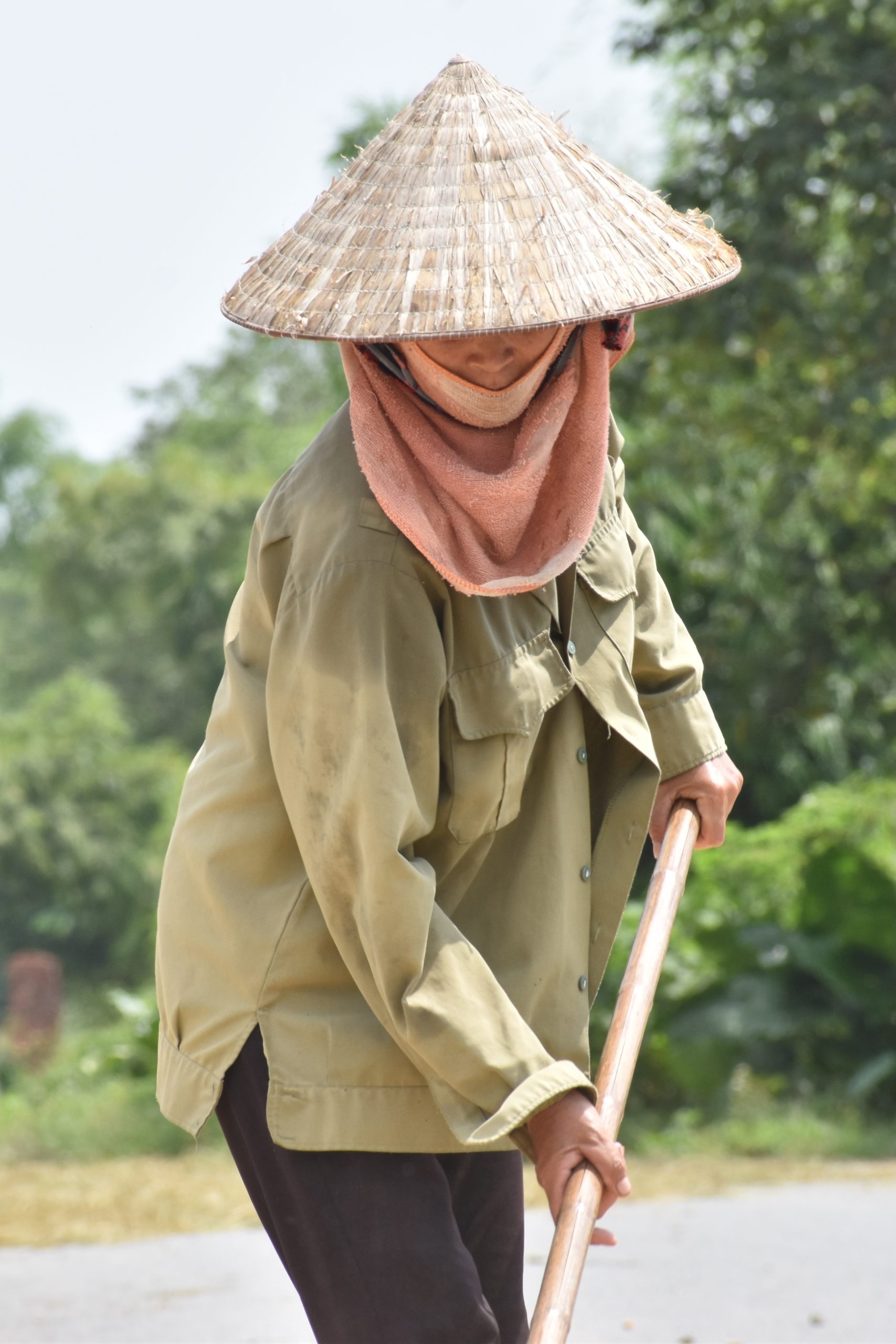
On the following day, with the full complement of our motorcycle gang now assembled, we headed north out of Hanoi to Yen Binh. Because of the one-day delay, we had to make up time. The drive out of Hanoi followed the Red River. Hoan took us down side roads to the main highway. Farmers use the streets to dry rice on tarps, spreading and turning the seeds with wooden rakes. We had to drive through drying hay completely covering the road. The day’s lesson was that no road is too large for agriculture nor too small for a truck.
It’s always interesting to see what people will carry on a scooter or how many people can fit. A typical configuration would be kid, dad, kid, and mom all squeezing together on one bike. The craziest carry-on of the day was the guy carrying torpedo-sized propane tanks. I couldn’t help but wonder what his hazard duty pay was.
A typical “restaurant” stop was a sidewalk cafe with traditional red plastic foot-high chairs and a low table to match. We quickly fell into a routine of ordering a 333, Hanoi, or Saigon beer, drinking the 3.5% beers more like water than alcohol, along with our multi-course lunch of rice, wraps, tofu, soup, boiled chicken (not a fan), and the specialties of the house.
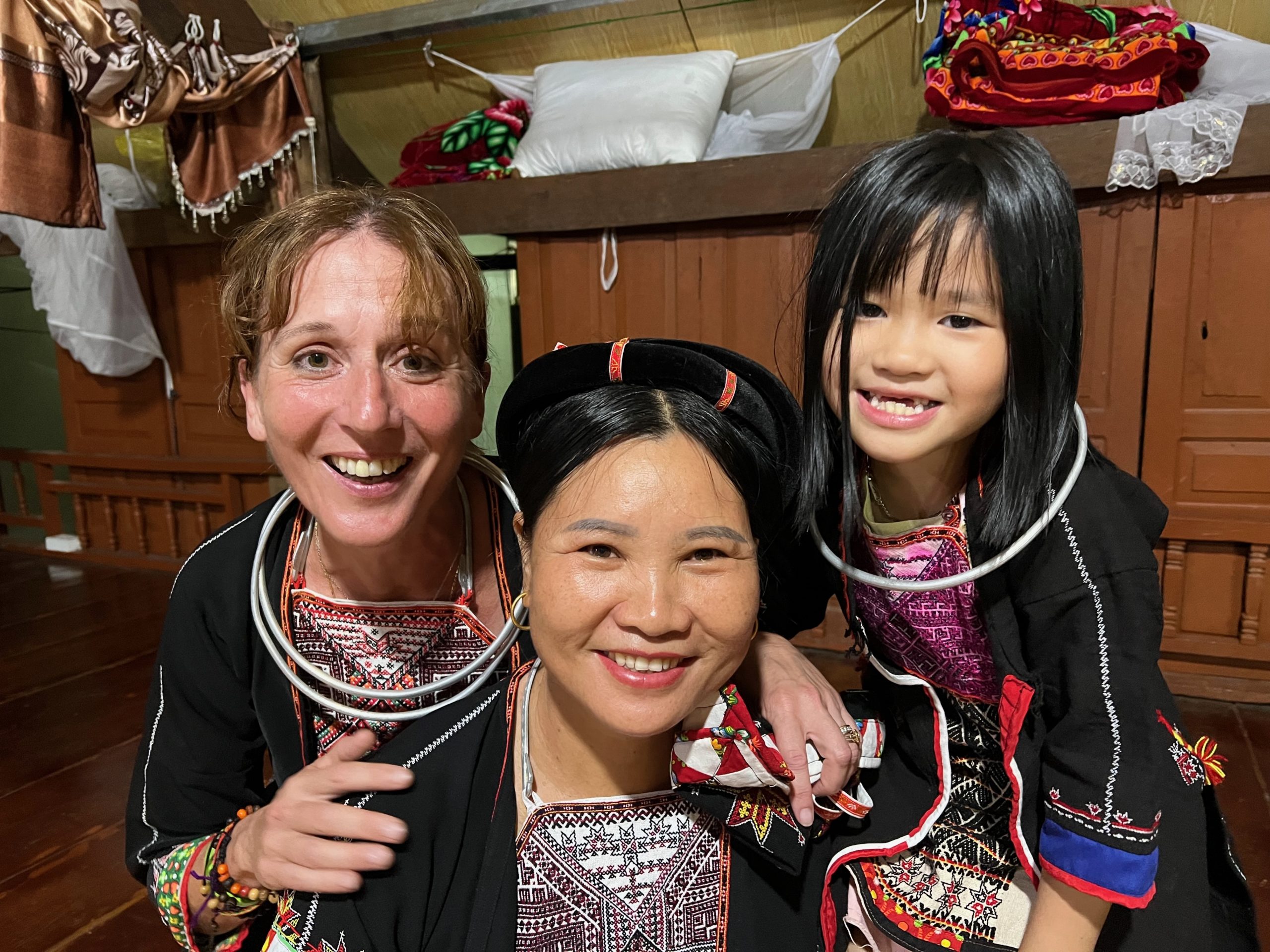
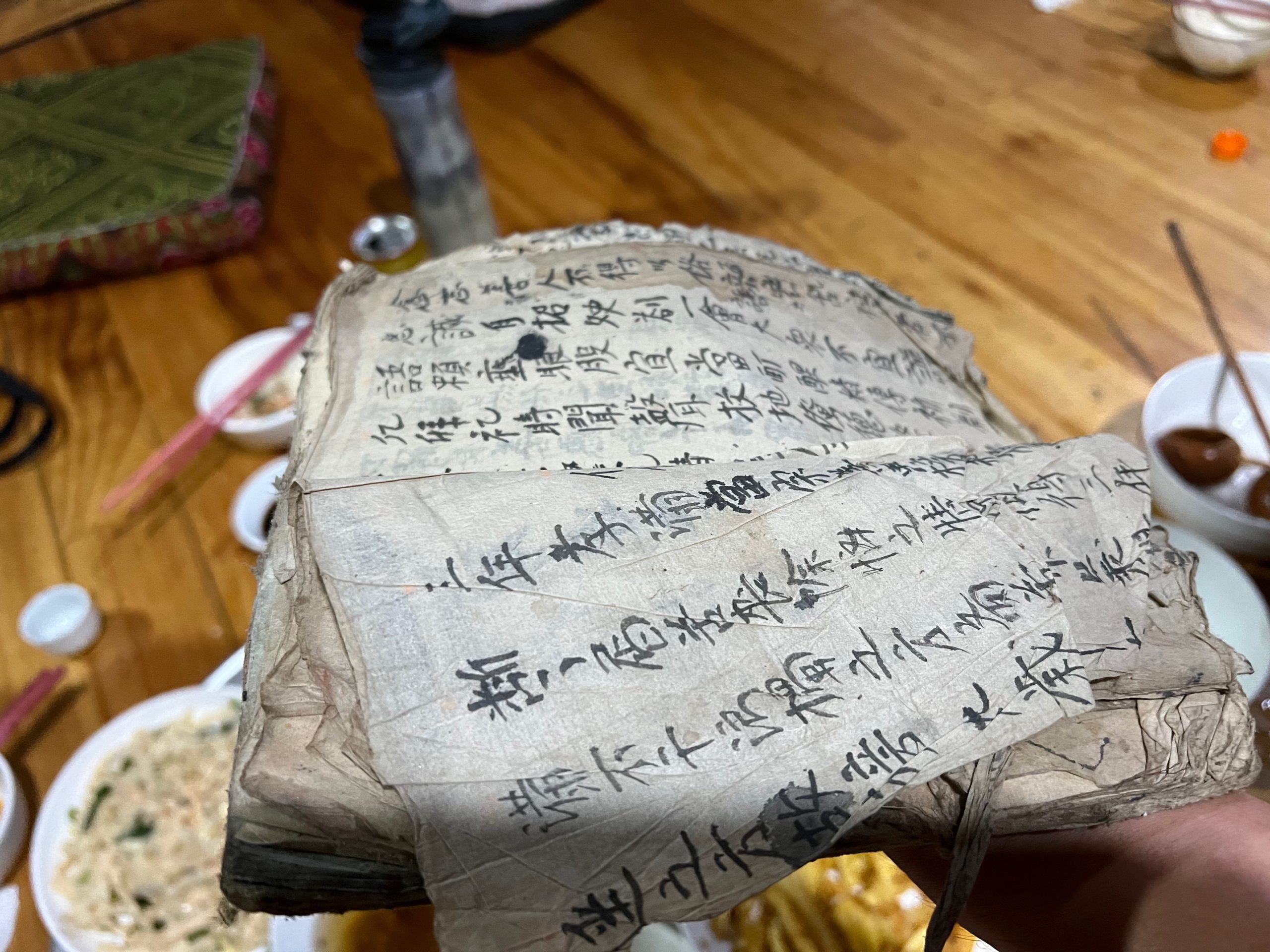
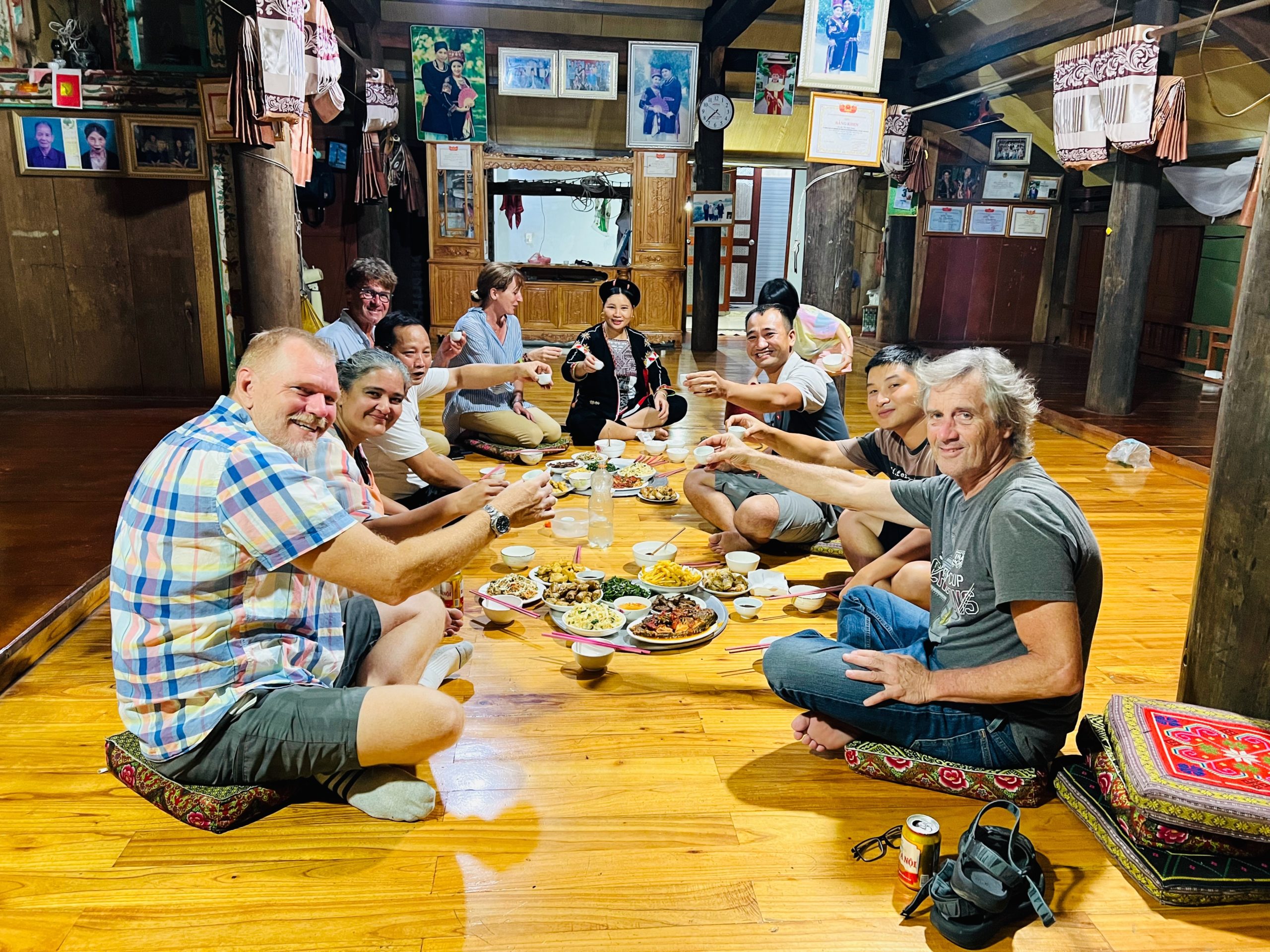
With daylight fading, we ended up at Vu Linh’s family homestay (Hoan’s family homestay), working our way around the workers, blocking the dirt road to the house with a hay shredder. Hoan invited us to dinner with family, including daughter, wife, mother, and father, serving us a multi-course buffet. Dad tried to drink us into the ground toasting each shot with Howmedo’s (Thank you in the local language) with the local homemade rice wine. Mom, daughter, and French lady dressed in traditional garb. Hoan shared his father’s writing of local customs, which is impenetrable in the local language. I love the homestay concept. It’s a beautiful venue for having an intimate and unpretentious encounter with a Vietnamese family.*
Day 5 Ha Giang Loop Day 3 Vinh Linh Family Homestay to Hi Giang City
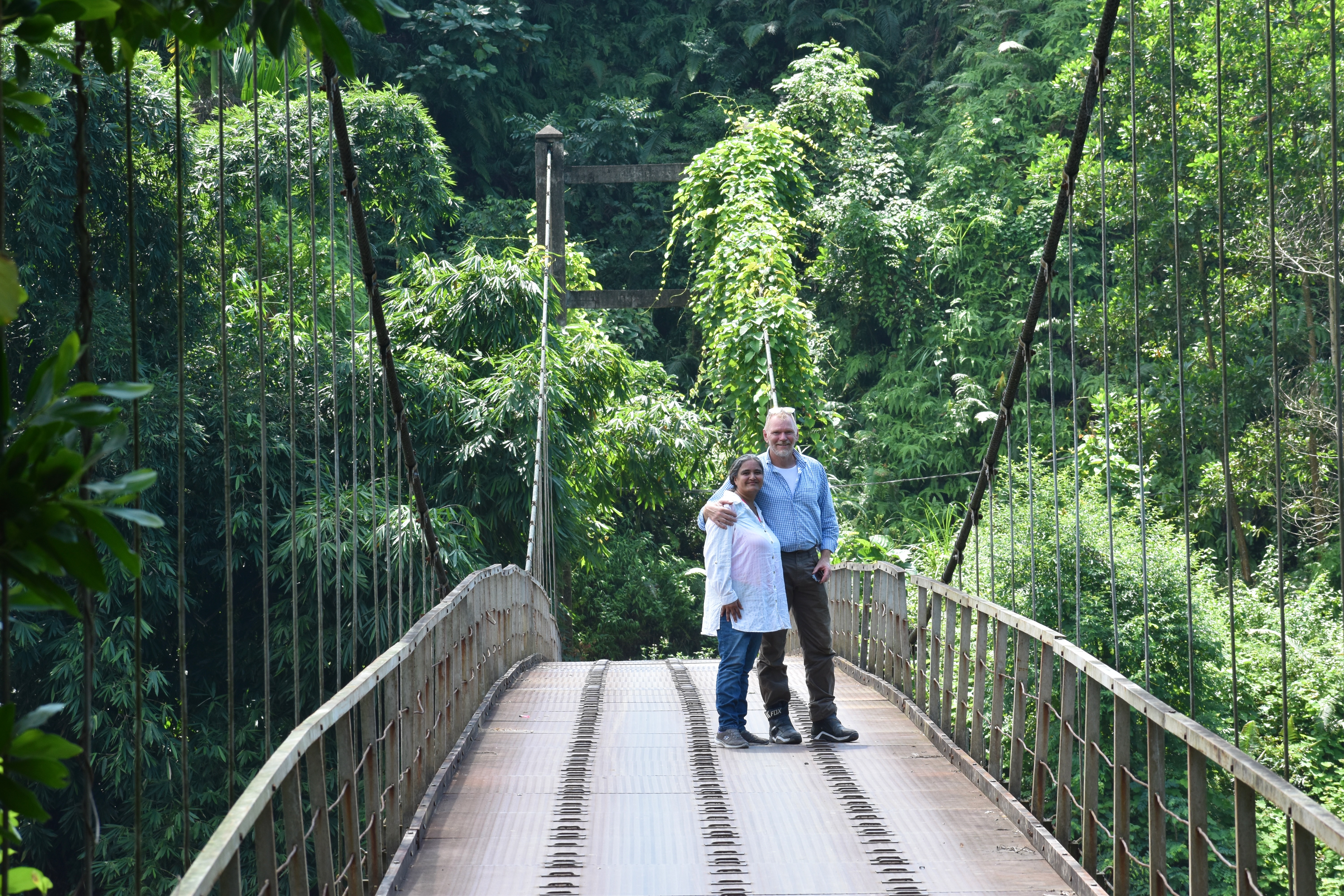
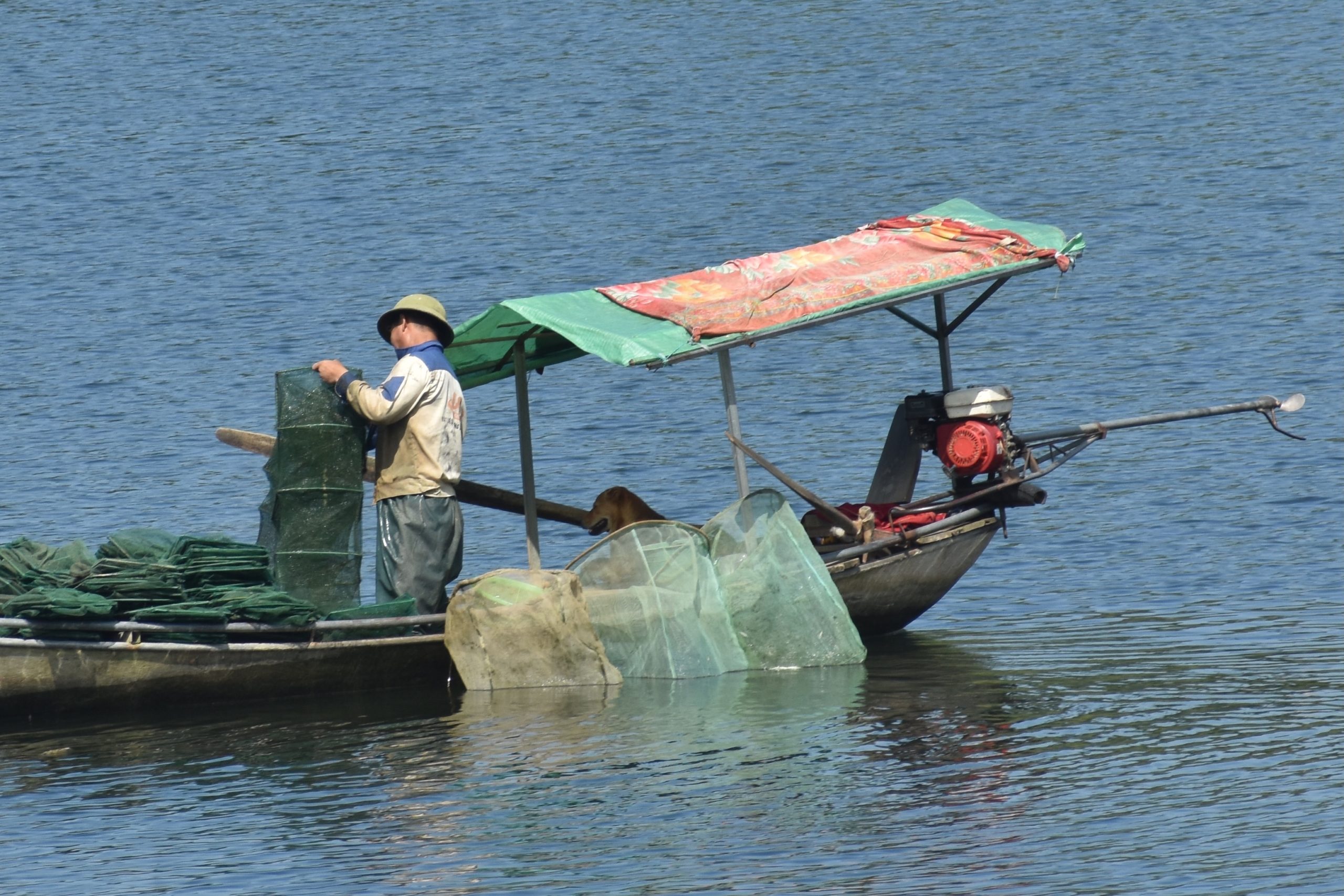
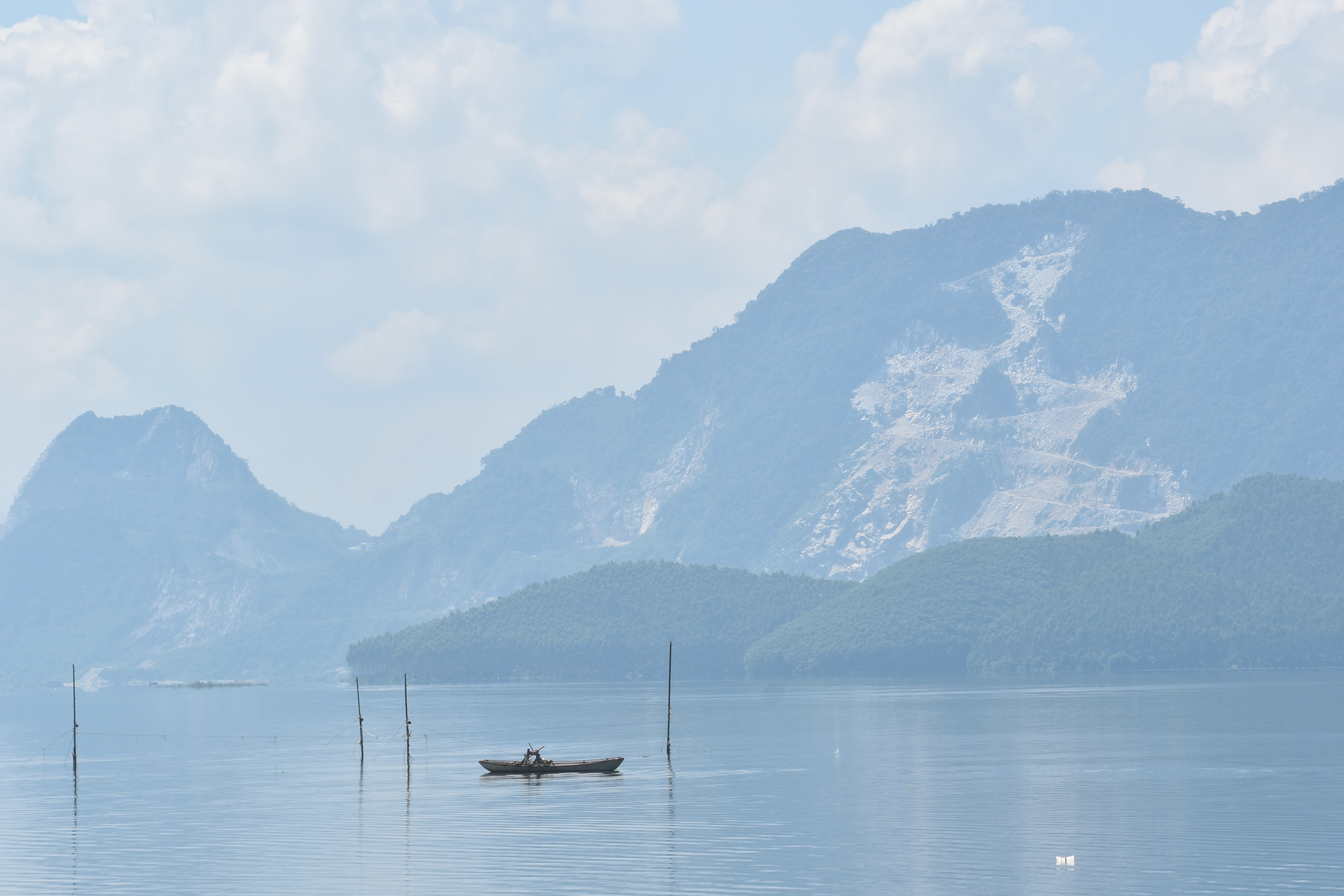
In the morning, we headed north to the city of Ha Giang, following scooter trails around the eastern perimeter of Thác Bà Lake, crossing narrow bridges, viewing the placid lake with its mountainous backdrop, and driving through agricultural obstacles of drying rice and hay covered roads. The hay covered the entire road for short stretches, leaving no choice but to drive right through it. A man dragging thirty feet of rebar was the strangest cargo of the day.
Leaving the lake and the flat terrain, we rode the busier main highway to take us into Ha Giang. I had one flat tire obtained inbound to the city. I’m not exactly sure where it went flat, but I was riding on a nearly deflated tire when we pulled up to the hotel. My attention on the way in was distracted by another problem. A biting insect managed to land and sting me through my kevlar riding jeans, leaving a welt about four inches in diameter.
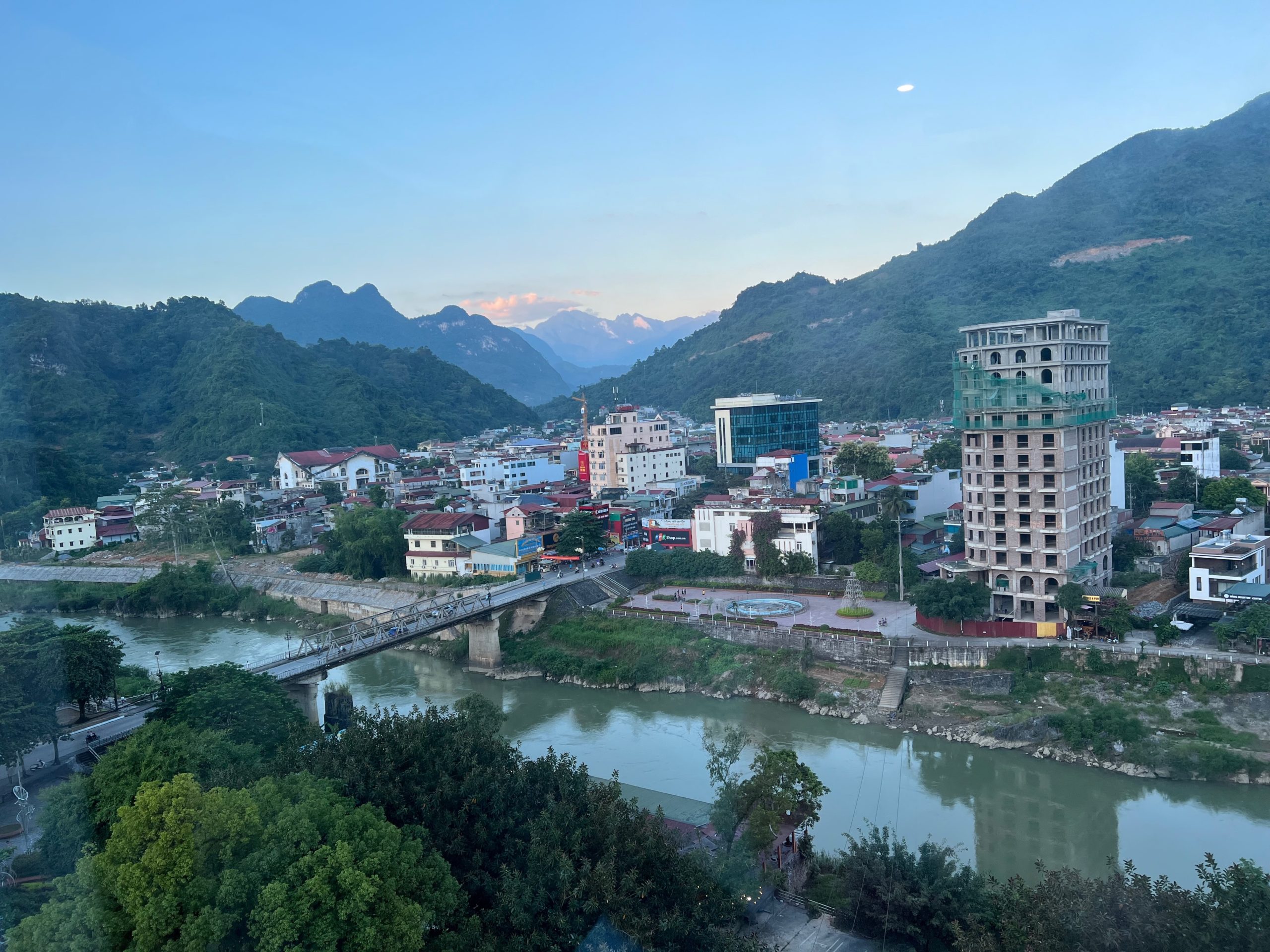
We stayed at Khách sạn Yên Biên Luxury catching up to the non-motorbike contingent of our tour, giving me a nice view of the city from my eighteenth-floor room. As the name suggests, it is an actual hotel, not a homestay. Taking a respite from the Vietnamese cuisine, we convened for pizza and beer at a place called “Pizza Here.”
Day 6 Ha Giang Loop Day 4 Ha Giang City to Phố Cổ
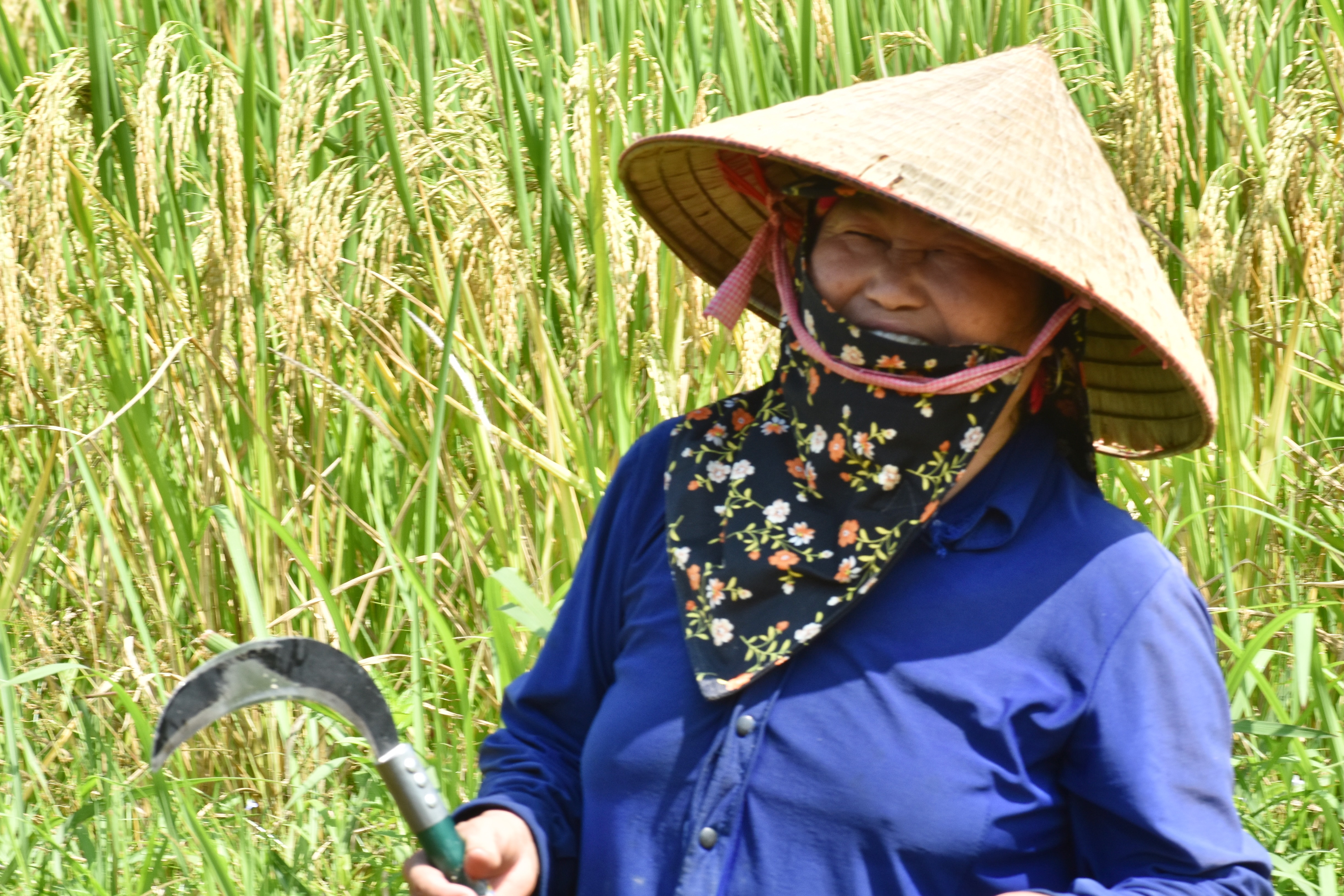
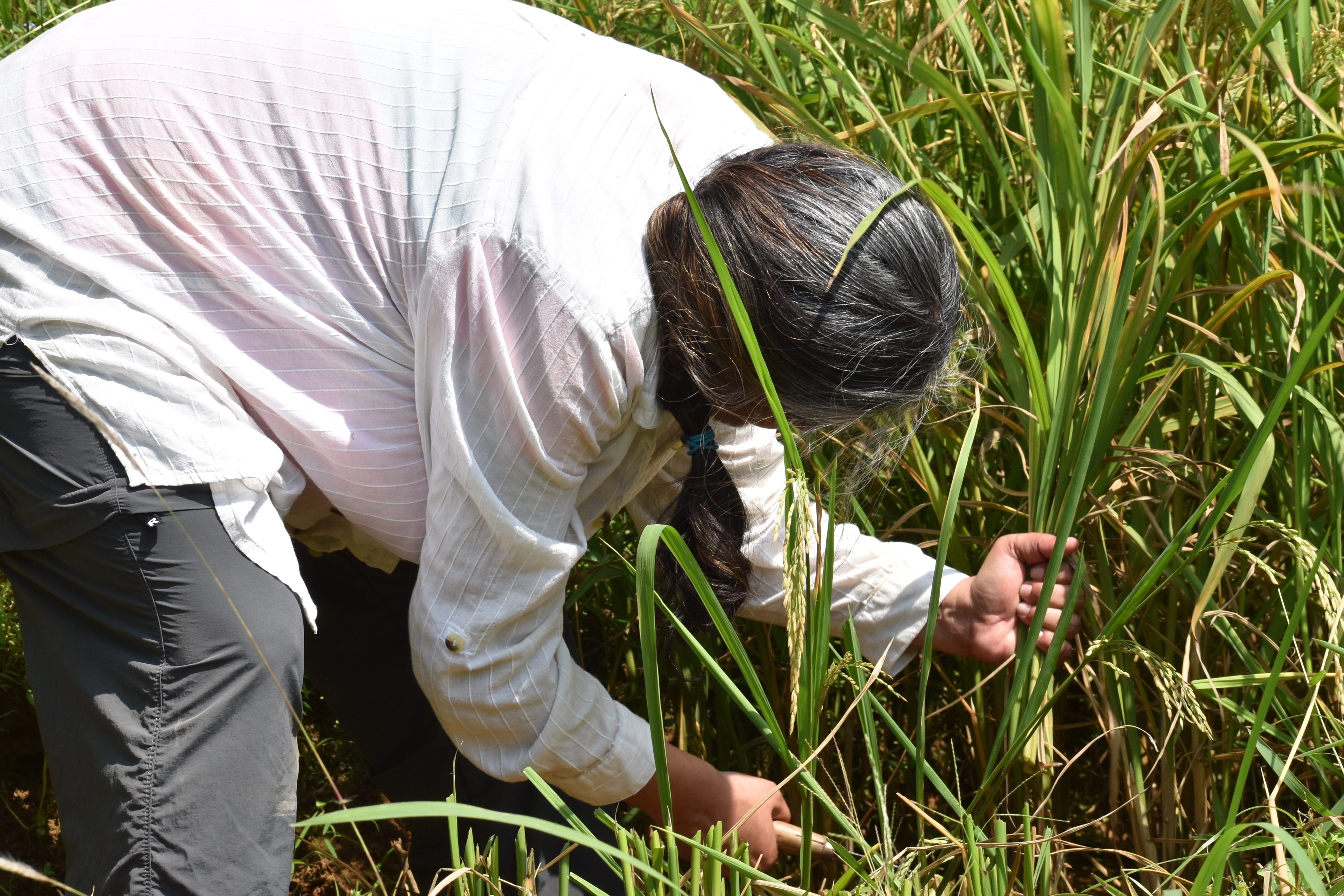
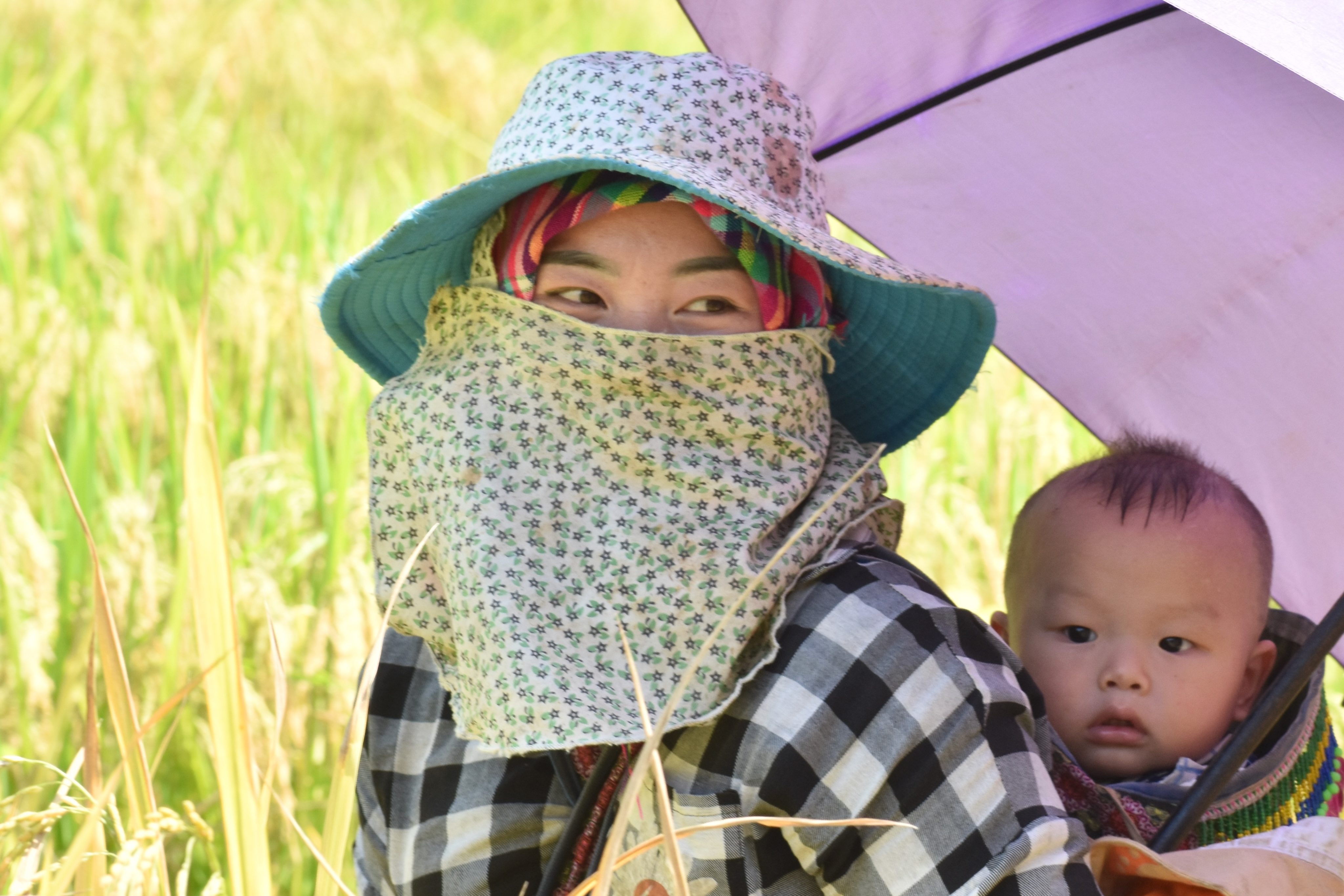
Because the flat was a rim flat, Hoan couldn’t fix the tire. He traded out the spare bike on the back of the support truck. We crossed over the river in the town, then rode out into mountain country and karst formations. On the rural road, I stopped to photograph a woman harvesting rice with her baby on her back, protected from the sun by a purple umbrella, and her mom. Hoan engaged her, and I learned the proper technique for slicing and clumping rice stalks: cut low at an angle, putting three or four handfuls together. Of course, doing that a couple of times is a lot different than cutting down the whole field.
Hoan advised us not to pay or tip the lady, explaining that it is not good to make it an expectation. I agree. Once such an experience becomes transactional, then I think it becomes significantly less authentic. Is it genuine culture when you sell it? When does the product become what the consumer wants it to be rather than what it is? Commoditizing culture is an essay for another time.
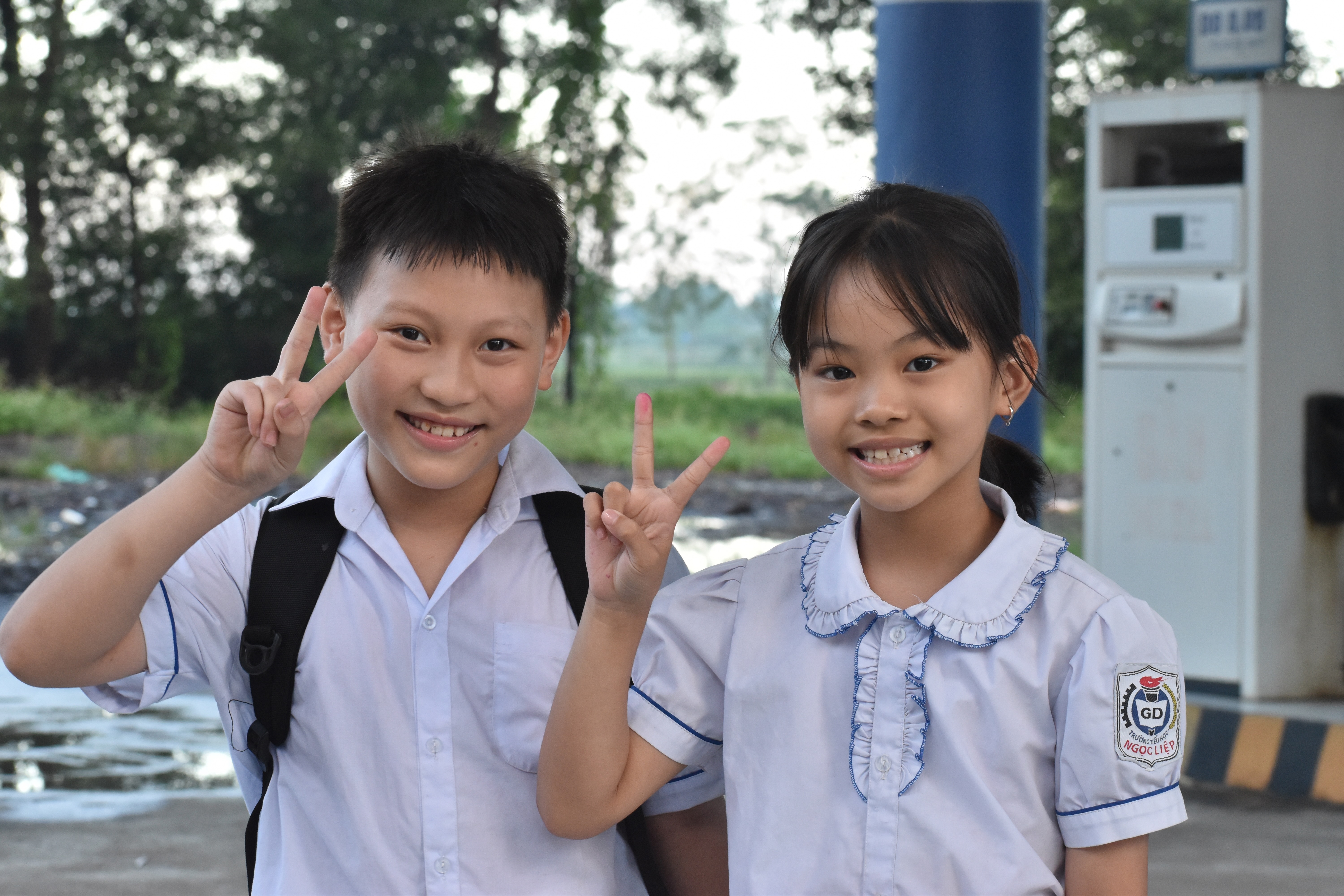
While I am on the subject, kids would wave to us as we rode through tiny villages. Some would reach out their hands for a slap. During the trip, I received the finger six times. One little girl with a big grin gave me the finger. Her finger followed me as I passed her. Given the big smile, I don’t think she understood what she was doing, but someone told her to do it. Other faces had scowls and disdain written on them. It was a tiny minority. I can understand why someone would not be excited about foreigners racing through their town on noisy bikes, stirring up the dust, the dogs, and the roosters.
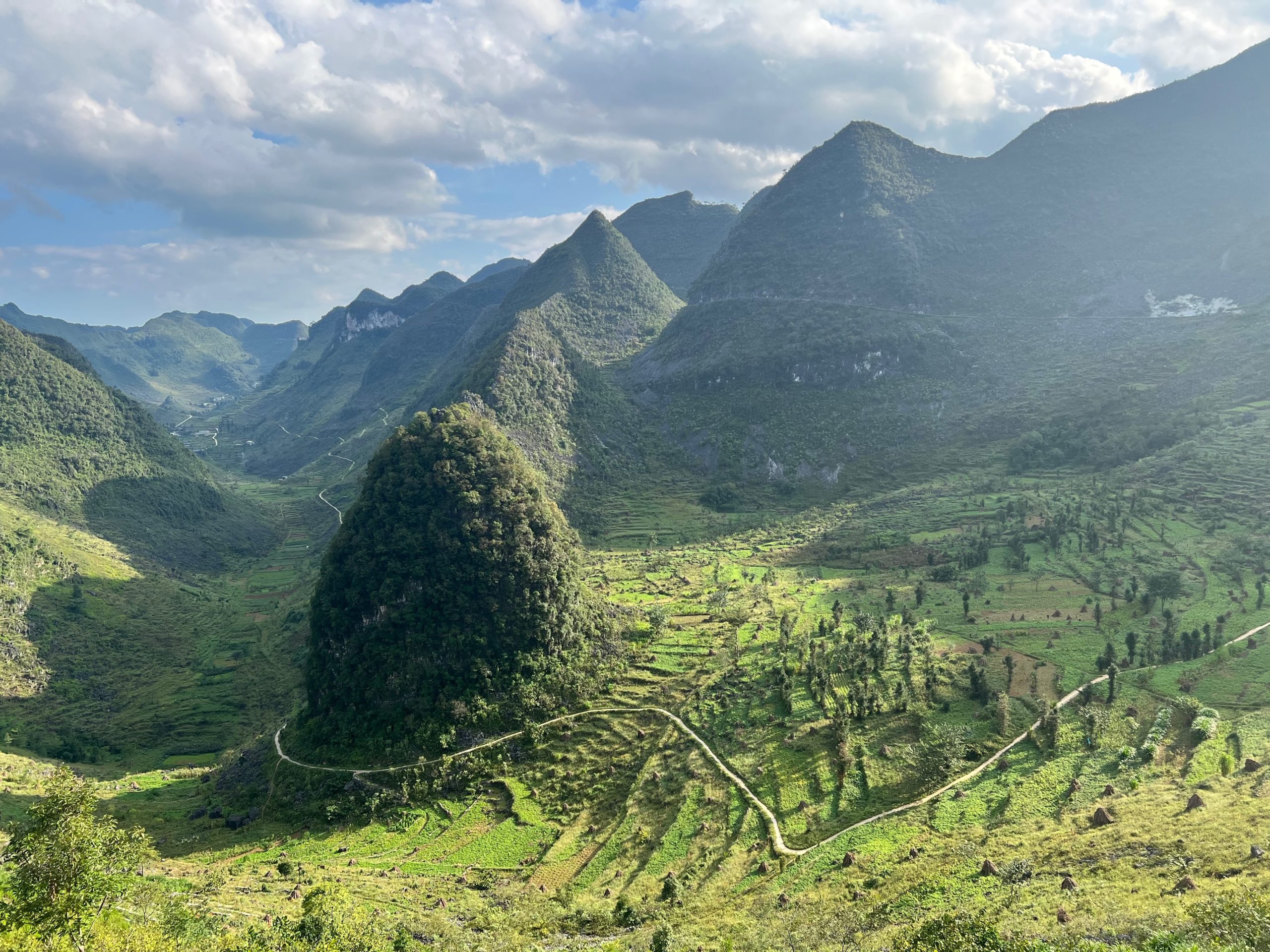
From here, the ride headed into the picturesque karst mountains. We stopped for a bathroom break at a spot with an overlook of a Hmong village, people working their gardens and yards. We drove to an incredible overlook of a verdant u-shaped valley split by a ridge terminating into a karst cone. On this narrow, mountain-hugging road, a woman passed me on a scooter, keeping my ego in check. Hetal bypassed this section of the motorcycle ride to go straight to Dong Van. Unfortunately, the driver got lost. She ended up visiting the Nho Que river early but arrived at the homestay much later.

Phố Cổ is built right up the base of the karst mountains. They even use the wall of one as a billboard to advertise the town. I wondered how many advertisements would adorn the mountain if something like this existed in America. All the karsts would probably be named after companies. Our homestay was right across the street from a square with outdoor restaurants and a few storefronts from the karaoke bar. Vietnam will never be the same. As Chris says, you can never unhear that sound.
Day 7 Ha Giang Loop Day 5 Phố Cổ to Coa Bang
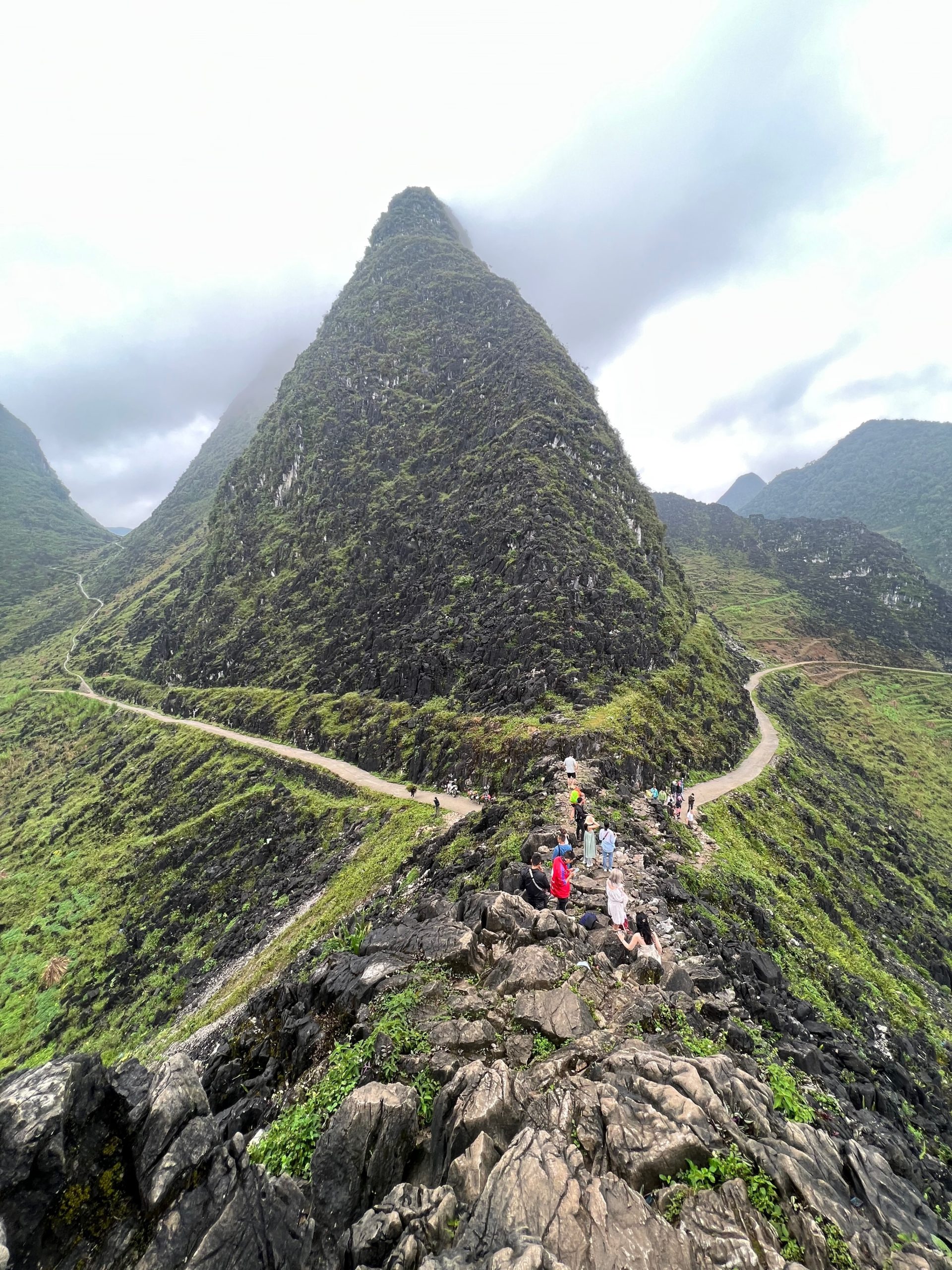
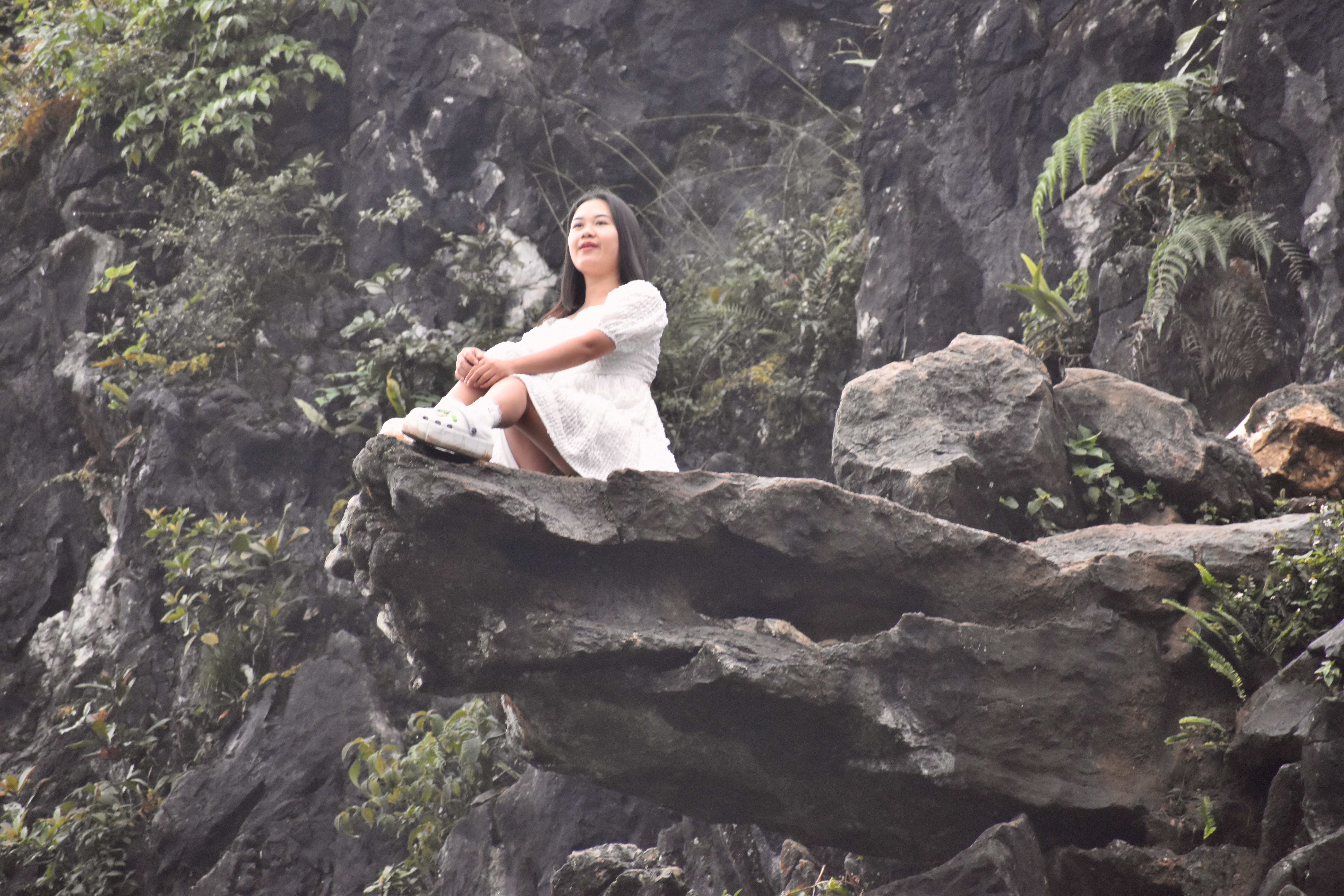
Rain. Slick conditions. And heading up the mountain passes on ribbon-thin roads. We stopped at a pass between two karst coneheads for a view. The brave climb the conehead. The courageous step out onto an unprotected black rock tongue. The crazy do it in white clogs and an evening dress.
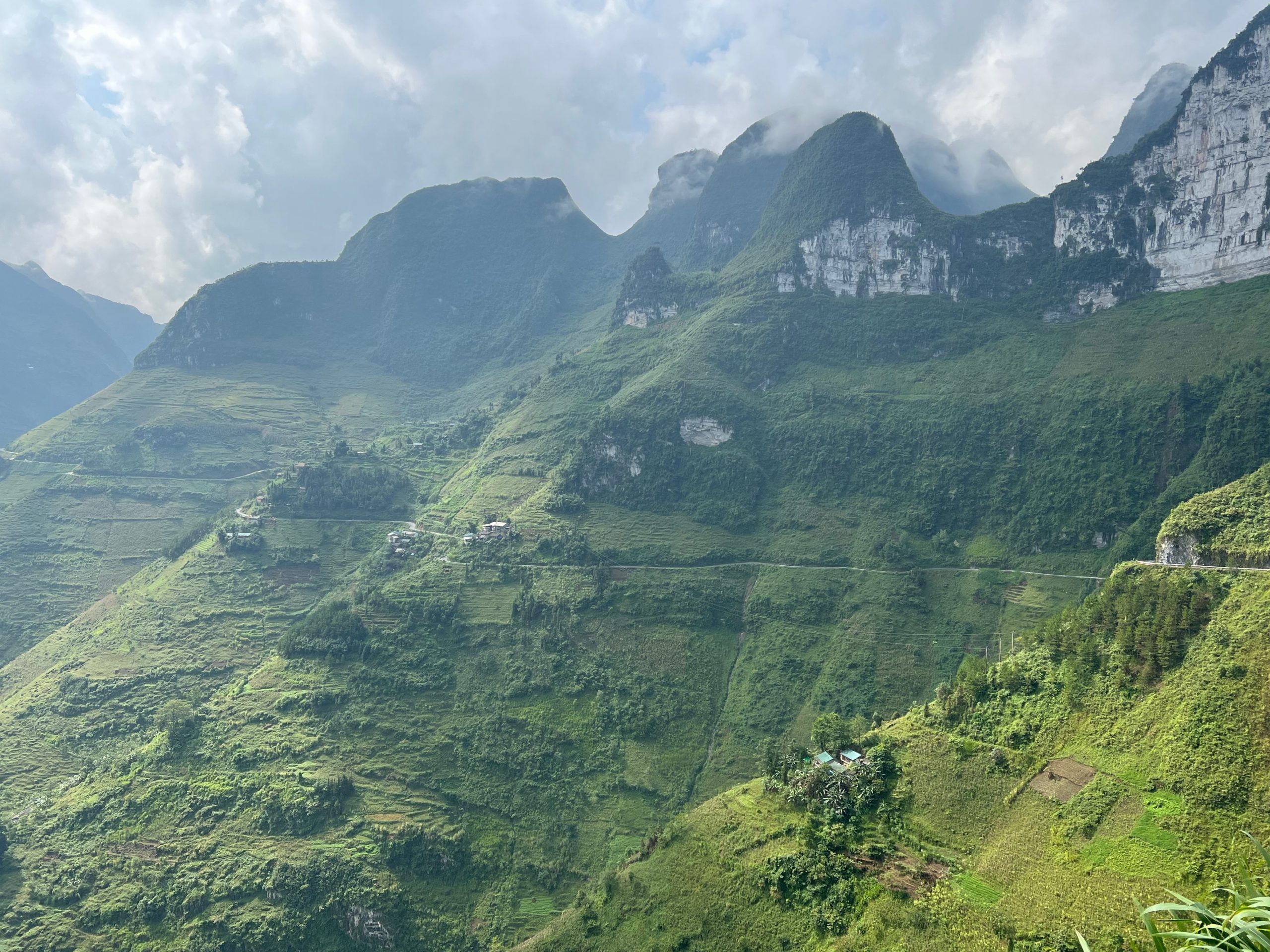
We continued down this path, my back tires sliding on the hairpin turns onto a paved path, maybe two feet in width, until we reached my point of fear. I don’t have the skill to negotiate ninety-degree downhill turns on a slick path. So Huan, Chris, and I walked the bike down the thirty foot with me not on it.
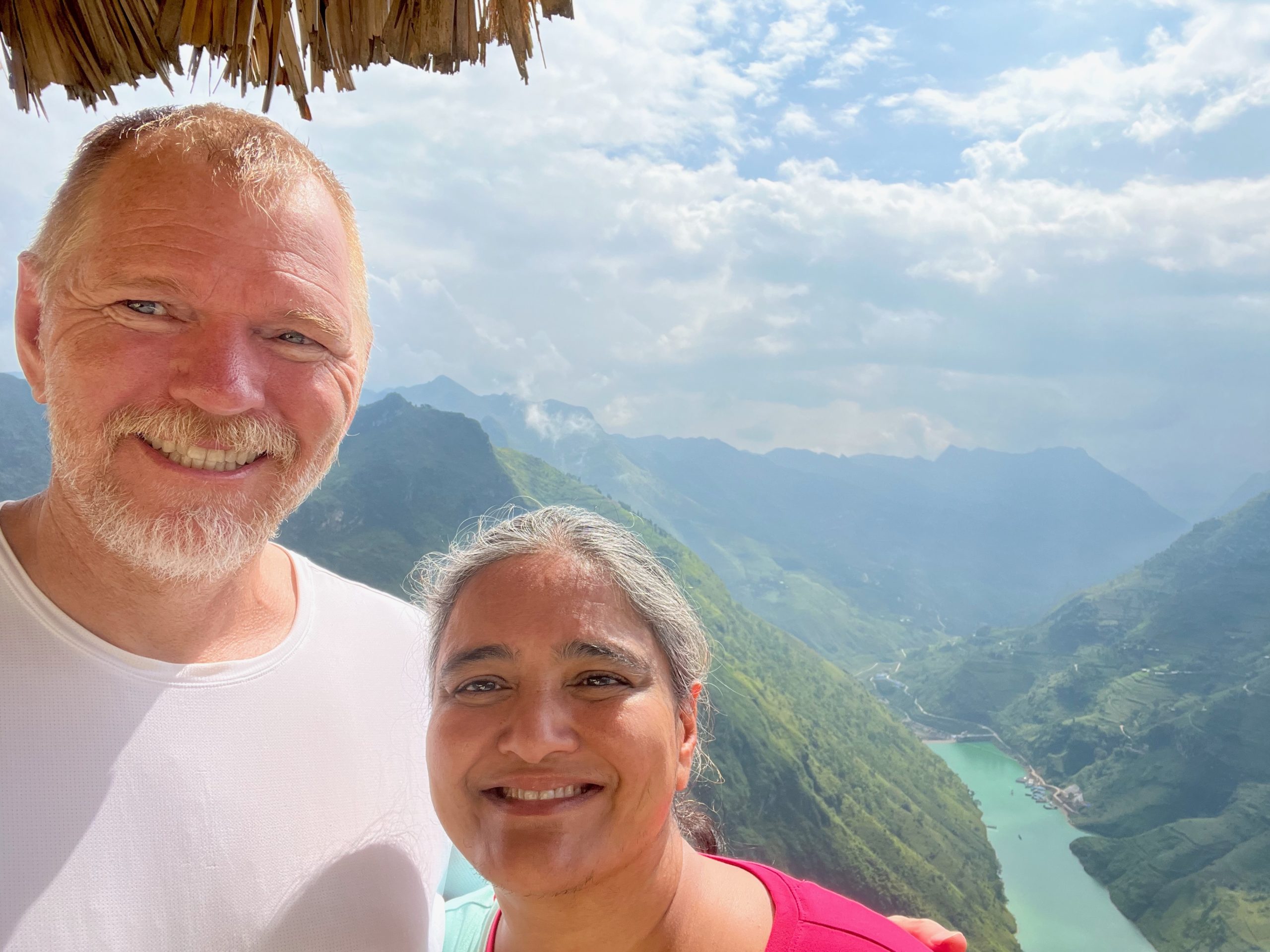
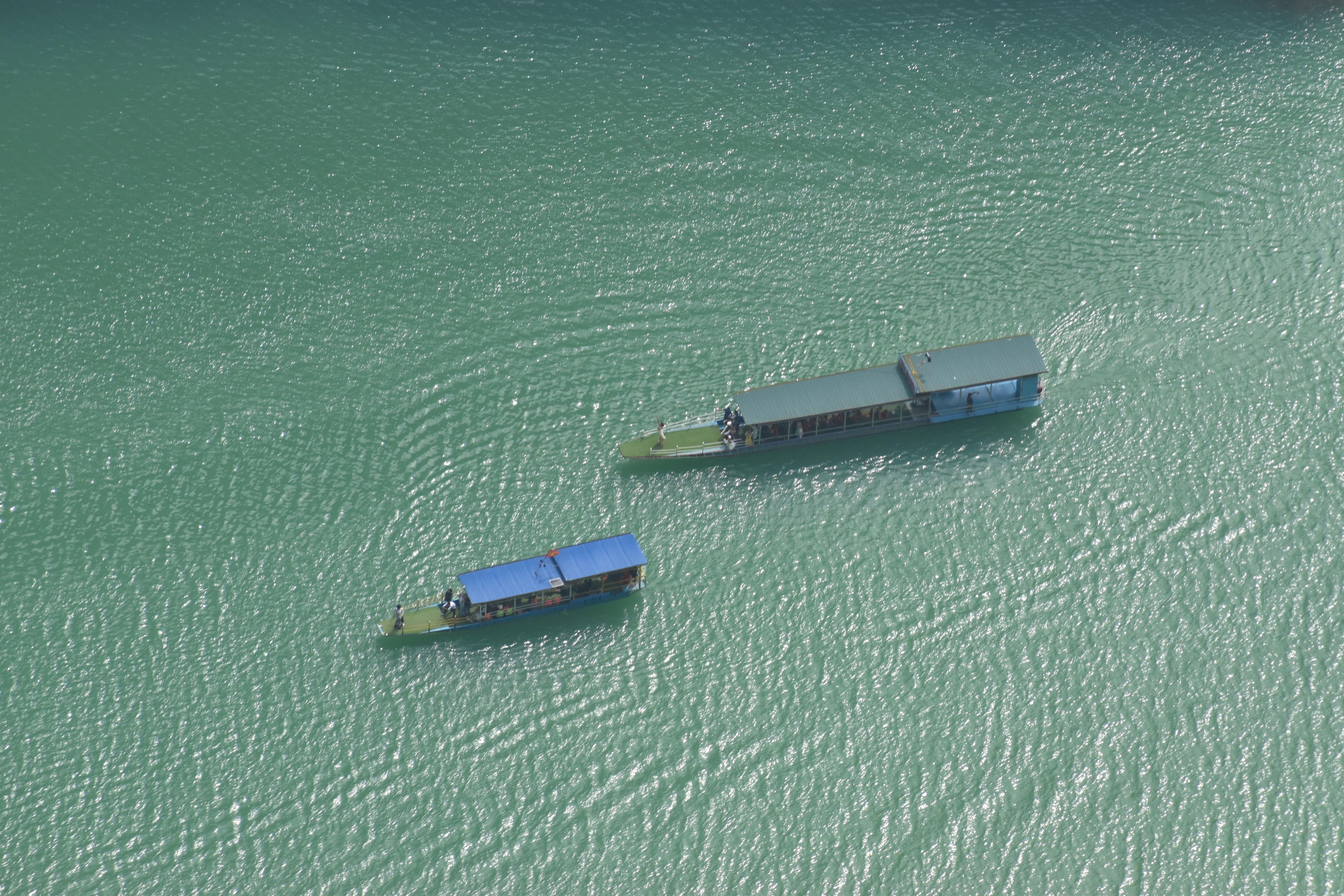
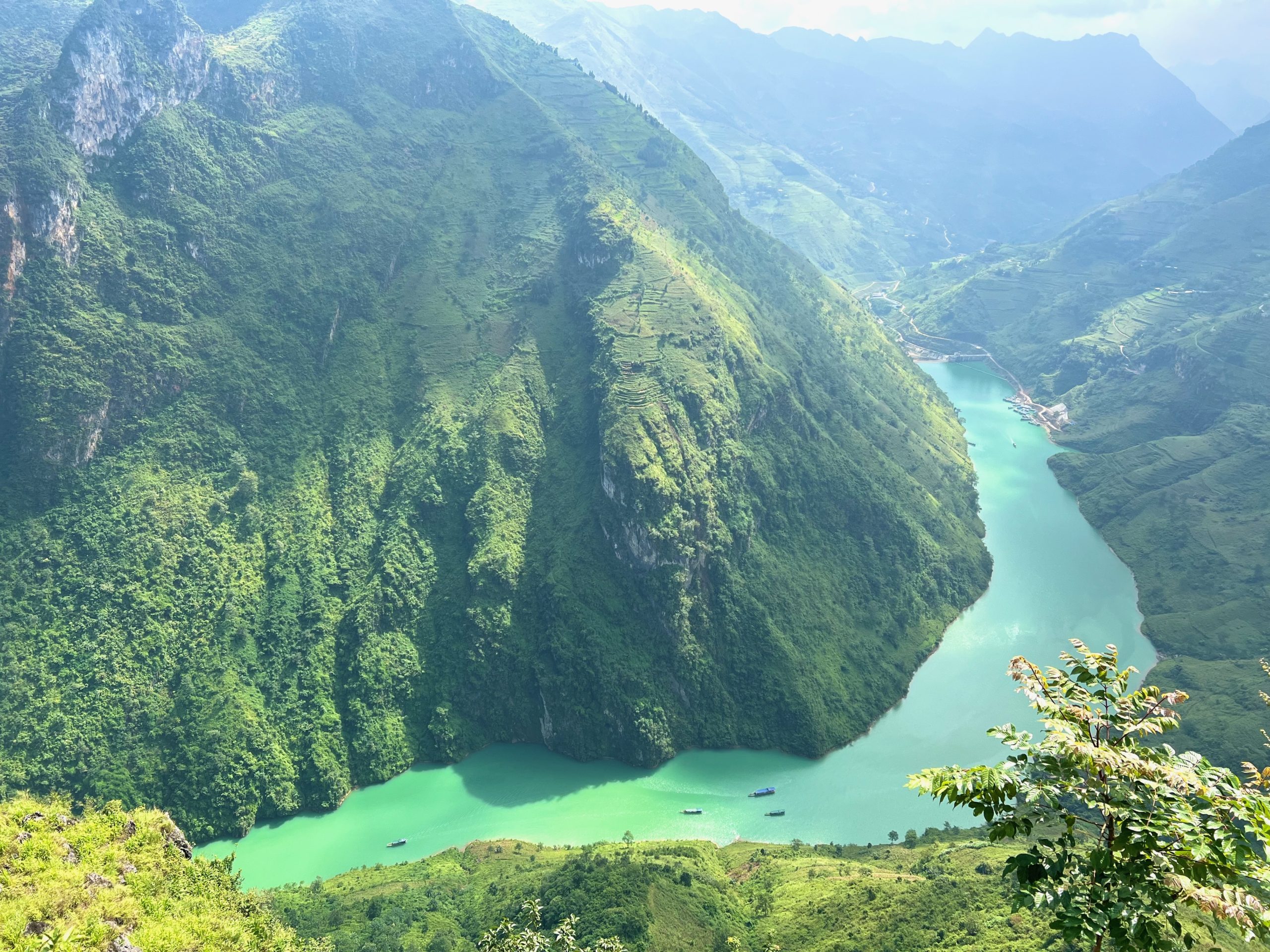
The scenery took a turn for the spectacular at the overlook of the Nho Que river. The river is aquamarine and does a near-horseshoe bend around a karst formation. Sadly, we didn’t have the time to get on one of the boats to see the spectacular gorge from the bottom up.
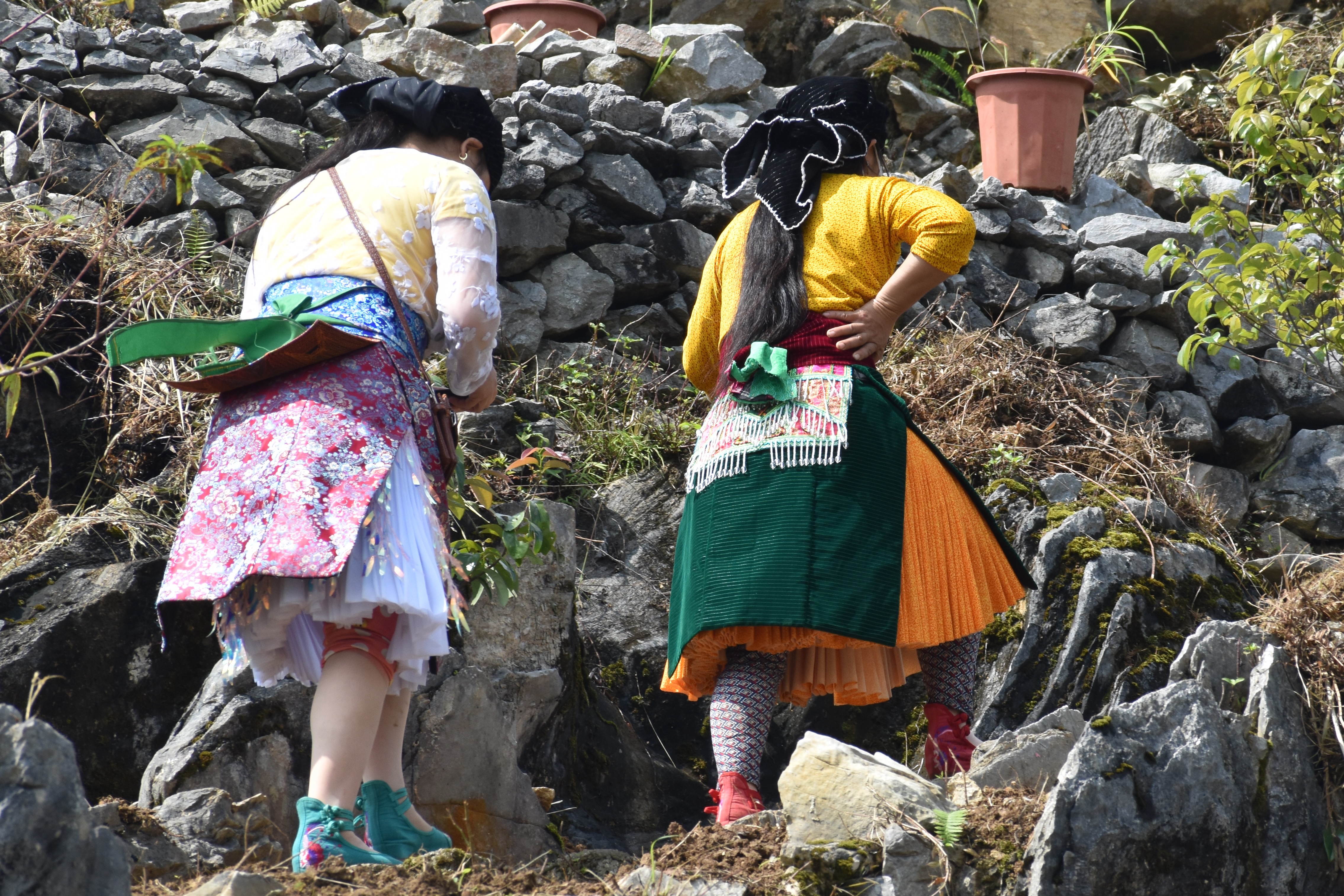
Hmong women sold organics outside the Panorama bar at the overlook. Someone told me the Hmong refused to move to cities at the demands of the Chinese and Vietnamese governments. The story sounds inspirational, but I haven’t been able to verify it. There are Hmong in Wisconsin. A diaspora.
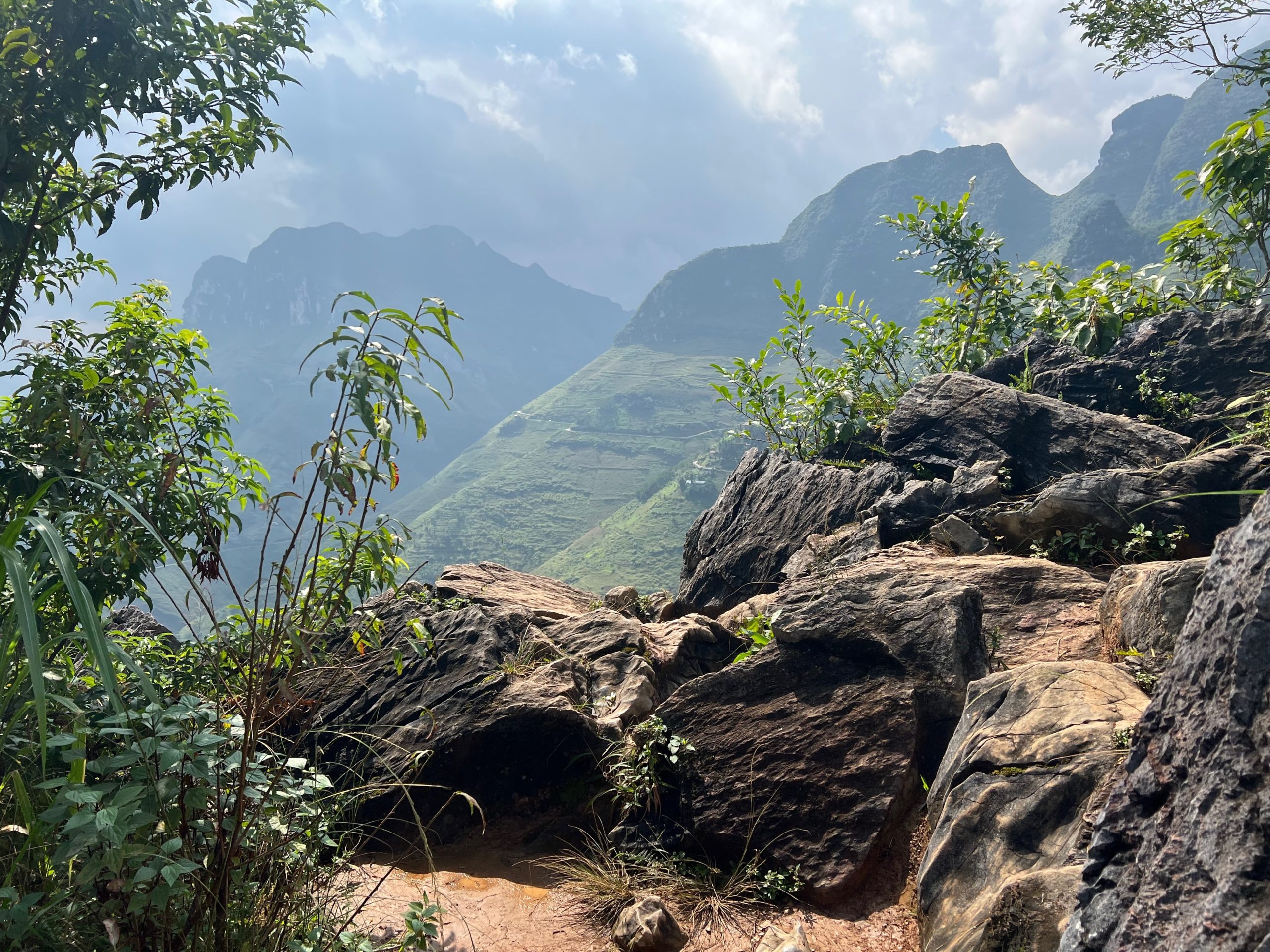
We completed the day with a ride to the Pac Bo Homestay in Cao Bang. For dinner, we sampled fried bees and bamboo, an unusual combo.
Day 8 Ha Giang Loop Day 6 – Cao Bang to Ban Gioc Waterfalls
In the morning, the woman proprietor tried to refund us money because we didn’t eat all the bee and bamboo, and the dinner roll was rock hard. We never complained, but actions speak louder than words. The place doesn’t receive many Western visitors, and she wanted us to have a reasonable opinion of the home. I’ve never heard of such an action before, so I have an excellent opinion of her business ethic.
The weather took a turn for the worse with a promise of rain. I watched a touring Vietnamese girl in pumps and hip-flexor high shorts double up on her scooter with a transparent rain jacket. NTGNTT (None of the gear, none of the time).
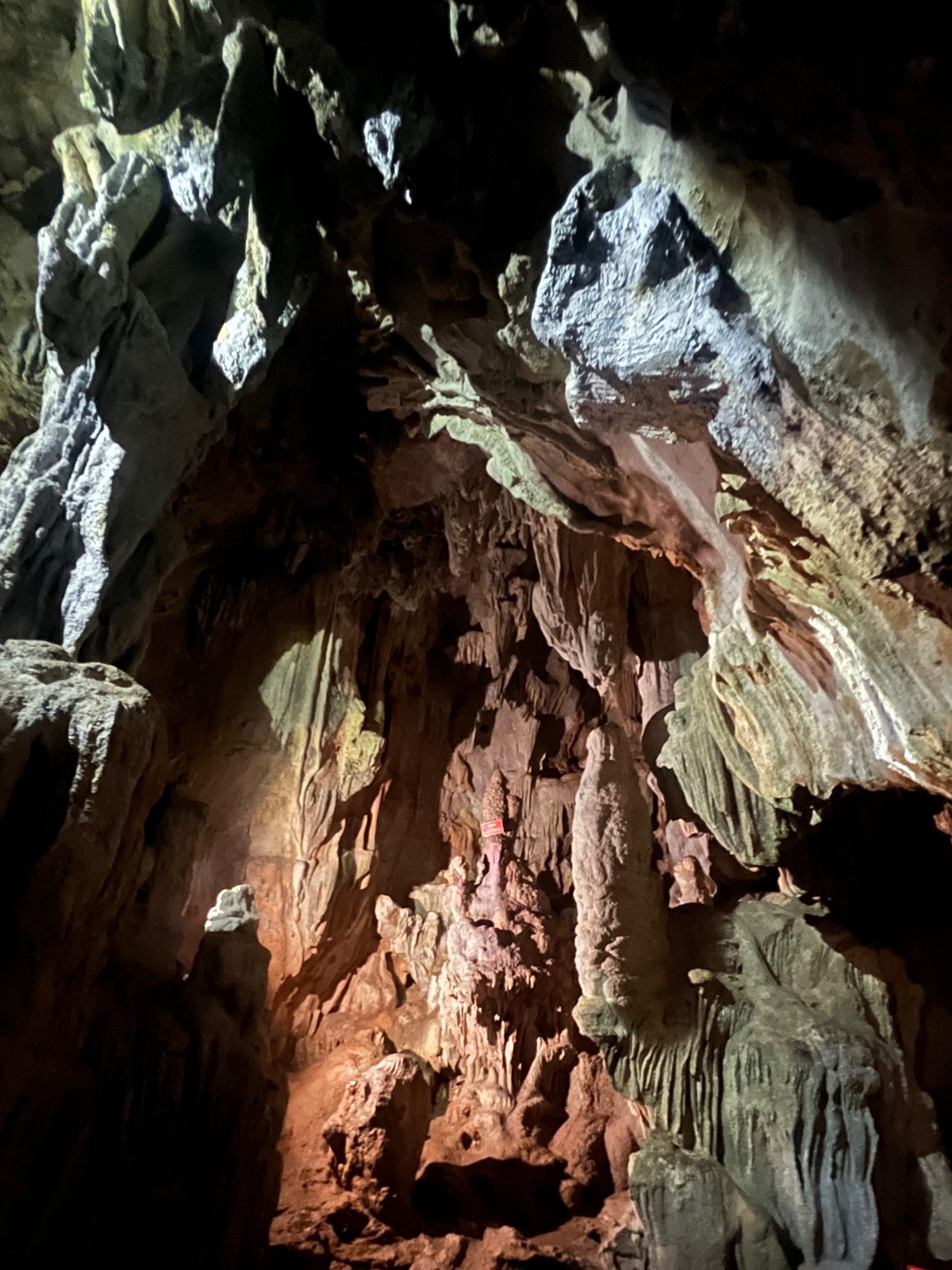
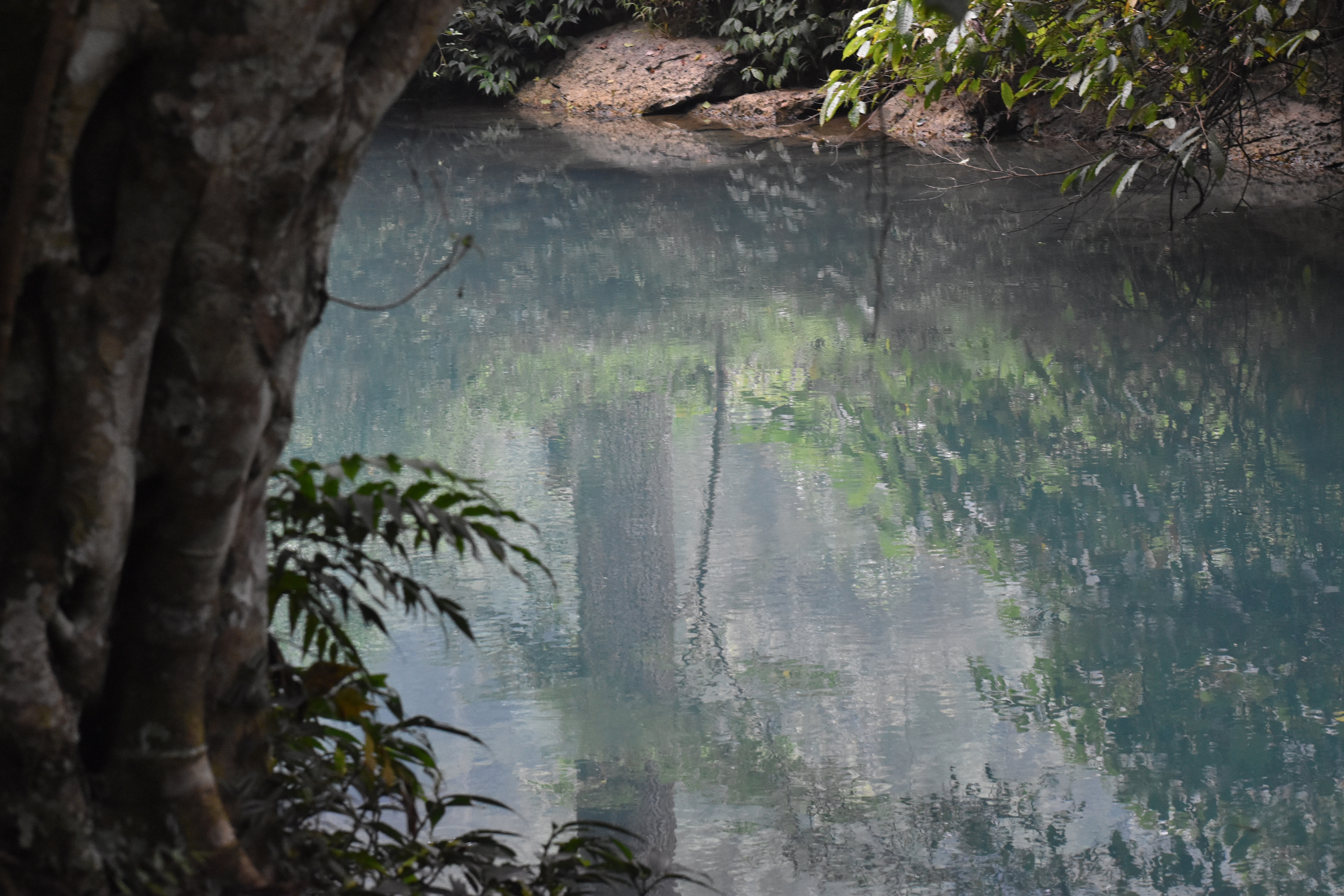
To start the morning, we visited the Ho Chi Minh memorial park. With limited time, we bypassed the museum attractions and only took a short river walk to the cave where Ho Chi Minh reportedly hid and worked at a cave office and desk. While waiting on the stairs to the cave entrance, as about thirty Vietnamese men paraded by, I learned that the preferred shoe of men is the black leather penny loafer.
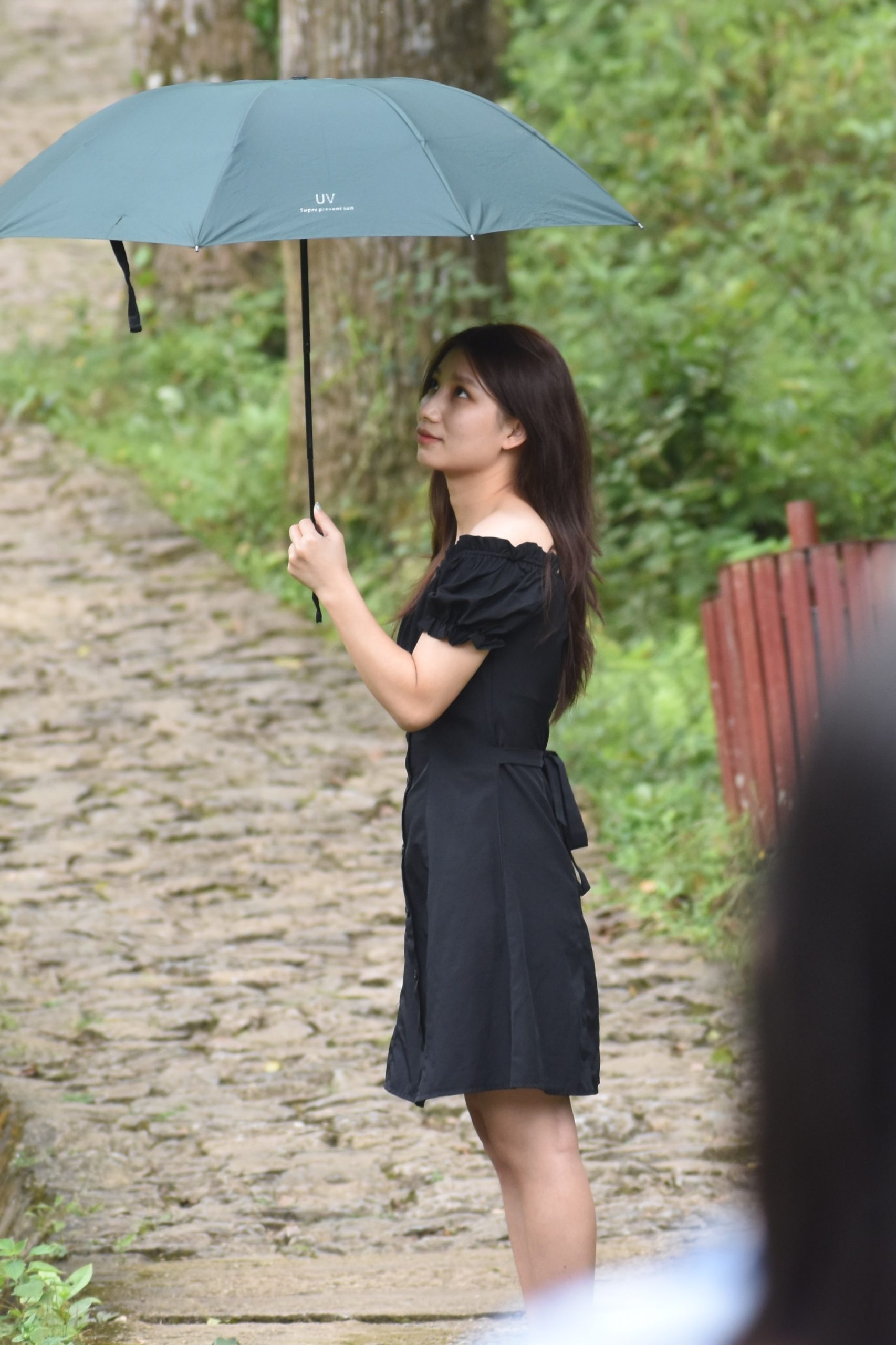
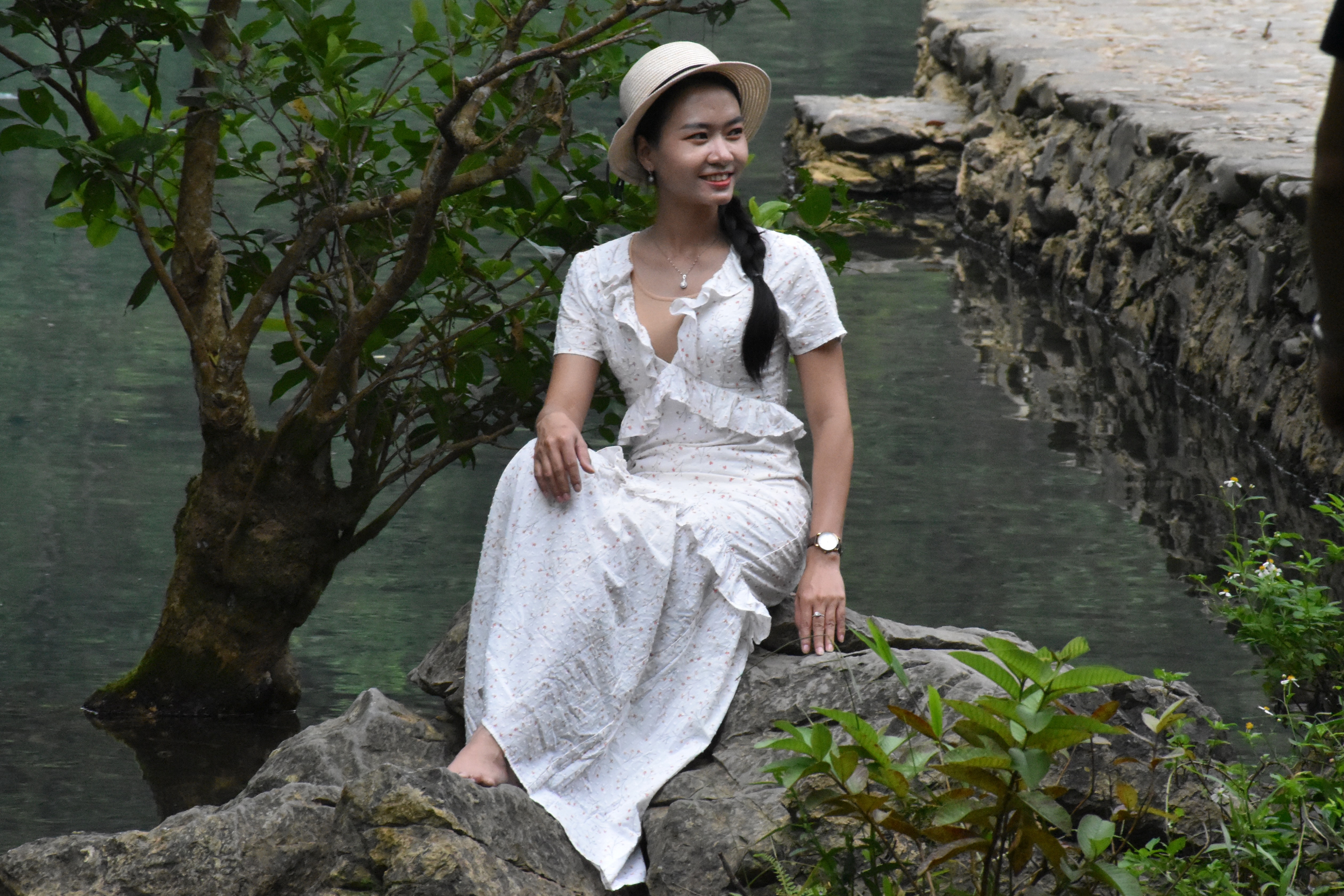
Young women come to this spot to enhance their beauty in the idyllic setting of the river, posing on the rocks with the river and thick trees as a backdrop. We watched a young artist parade all her friends, Ferris Buehler Chicago Art Institute style, down the river bank. Another posed La Grande Jatte style with an umbrella, a pointillist painting also found at the Art Institute.
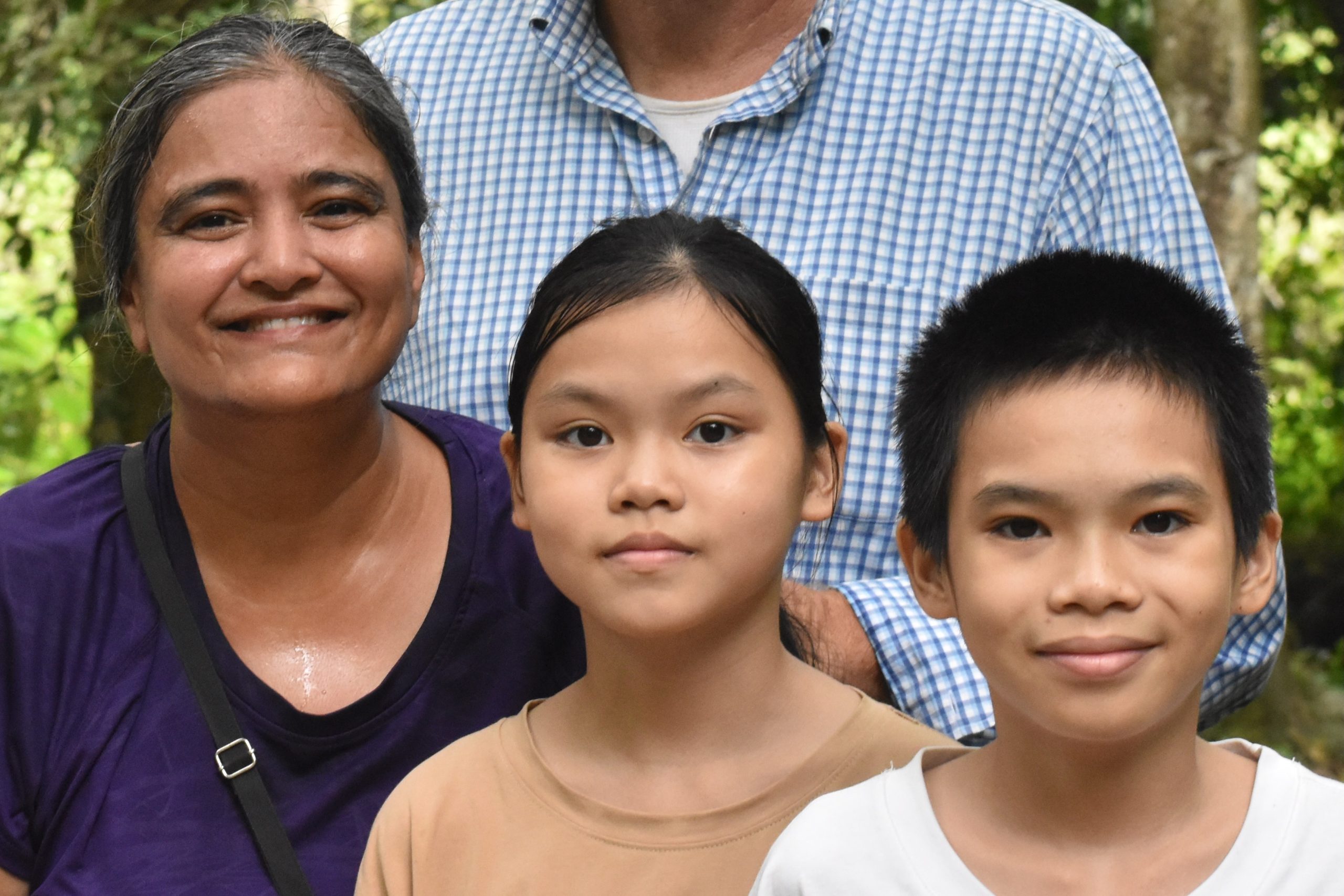
Hetal made friends with two charming and well-educated English-speaking Vietnamese kids from Hanoi. Many people said “Ha-lo” as they passed, but that is about as far as they go with the English language.
From the park, we rode in the rain for two solid hours, splashing through orange rivulets crossing the road and avoiding mud orange water buffalo. The rain and splashing soaked my socks and gloves, but otherwise, the rain gear did its job.
We came to Ban Gioc the back way, down a dirt road paralleling the barbed-wire border. When we arrived, the authorities locked down the town for a fall festival. Only official cars were allowed in and out. So we had to backtrack to the front of the town. We found a very distraught Hetal, having sat with the driver and truck outside the barricade in a questionable spot with suspicious police wanting to know why they were there. Finally, we devised a plan to park the bikes and walk in.
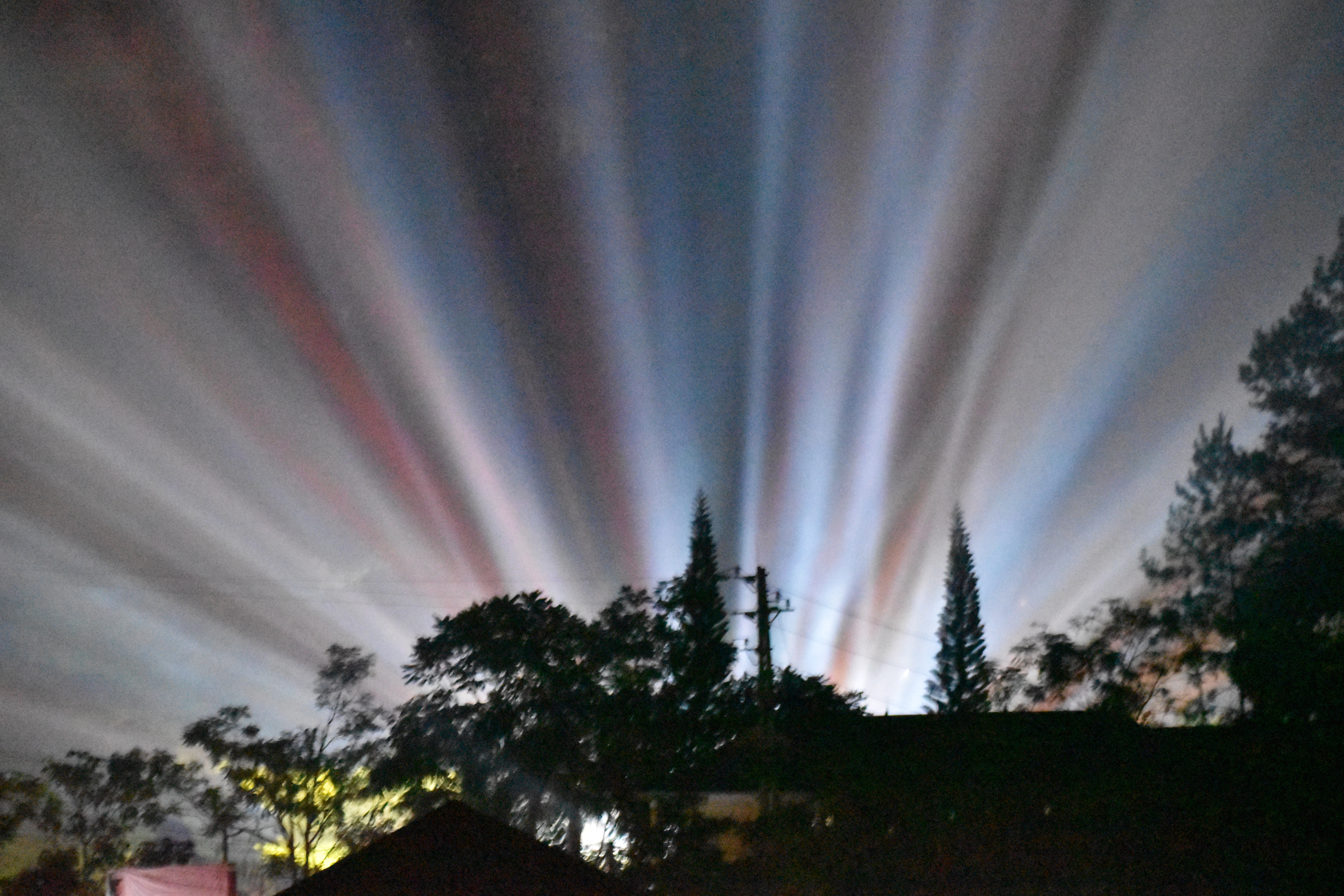
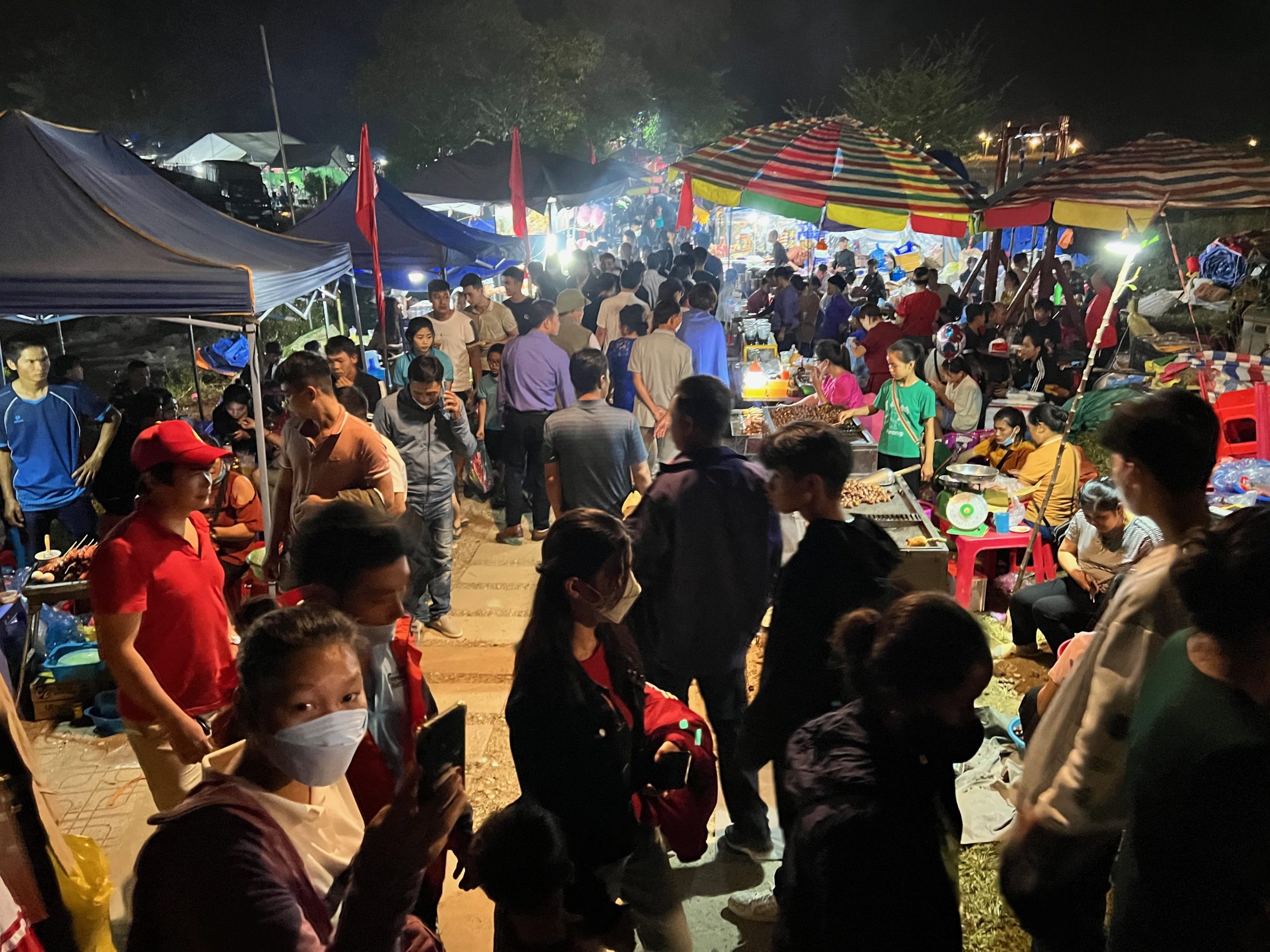
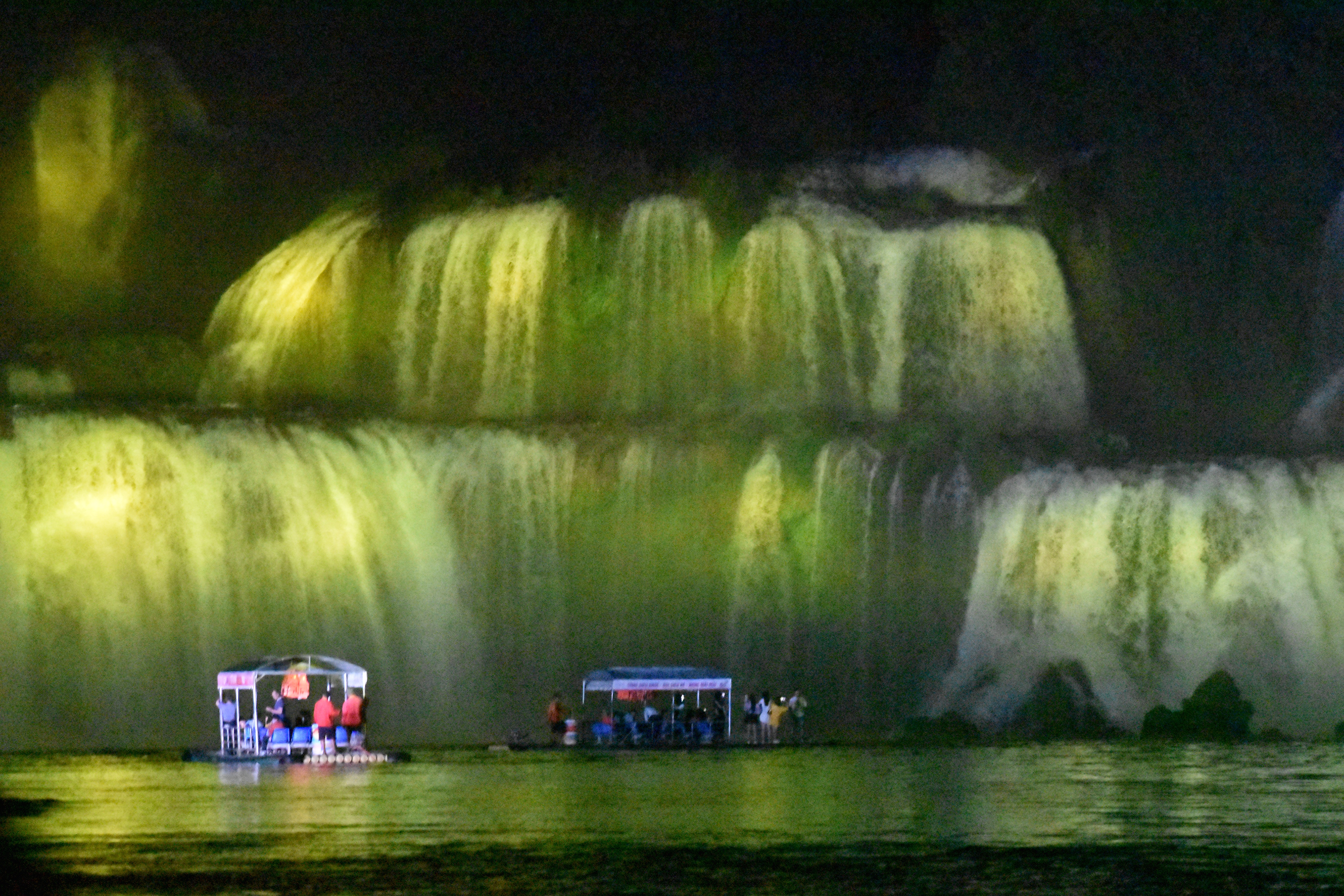
We checked into our hotel at Ban Gioc with enough time to walk down to the festival at the waterfall. We shared the view and celebration with five to ten thousand of our closest friends, still somehow managing to take a boat ride right up to the waterfalls, illuminated by a changing color palette of lights. After the boat ride, we ordered sausage and meat on a stick from a sidewalk vendor before retreating to the hotel for dinner and later drinks with our late-arriving companions.
Day 9 Ha Giang Loop Day 7 – Ban Gioc Waterfalls to Ba Be National Park
Rushed in the morning to meet a riverboat deadline, we took a no-nonsense ride to Ba Be NP. The conditions were sloppy and wet but without the previous day’s downpour. We saw one truck in a ditch, but the driver appeared to be squatting on the side of the road, talking into his cell phone, uninjured.
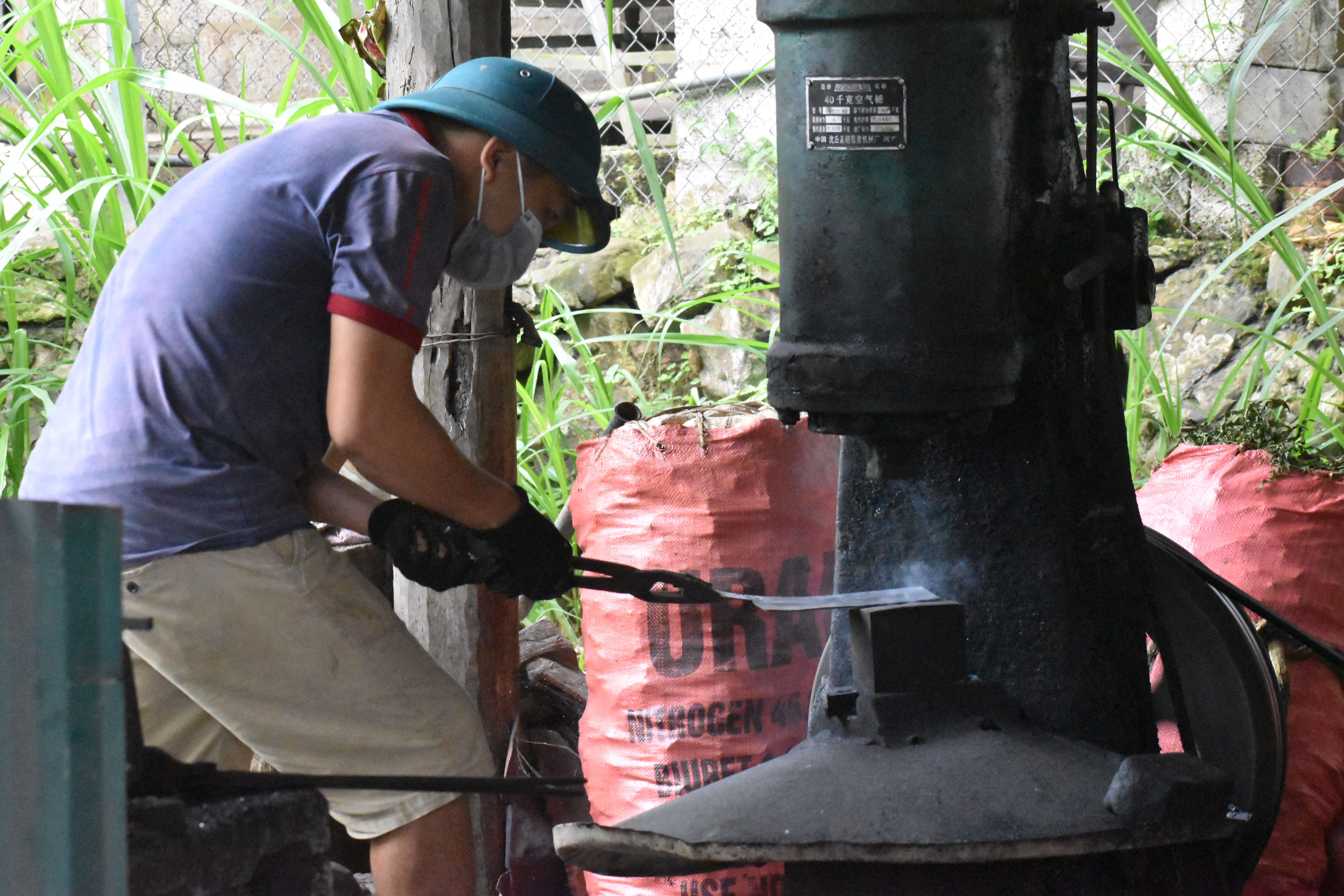
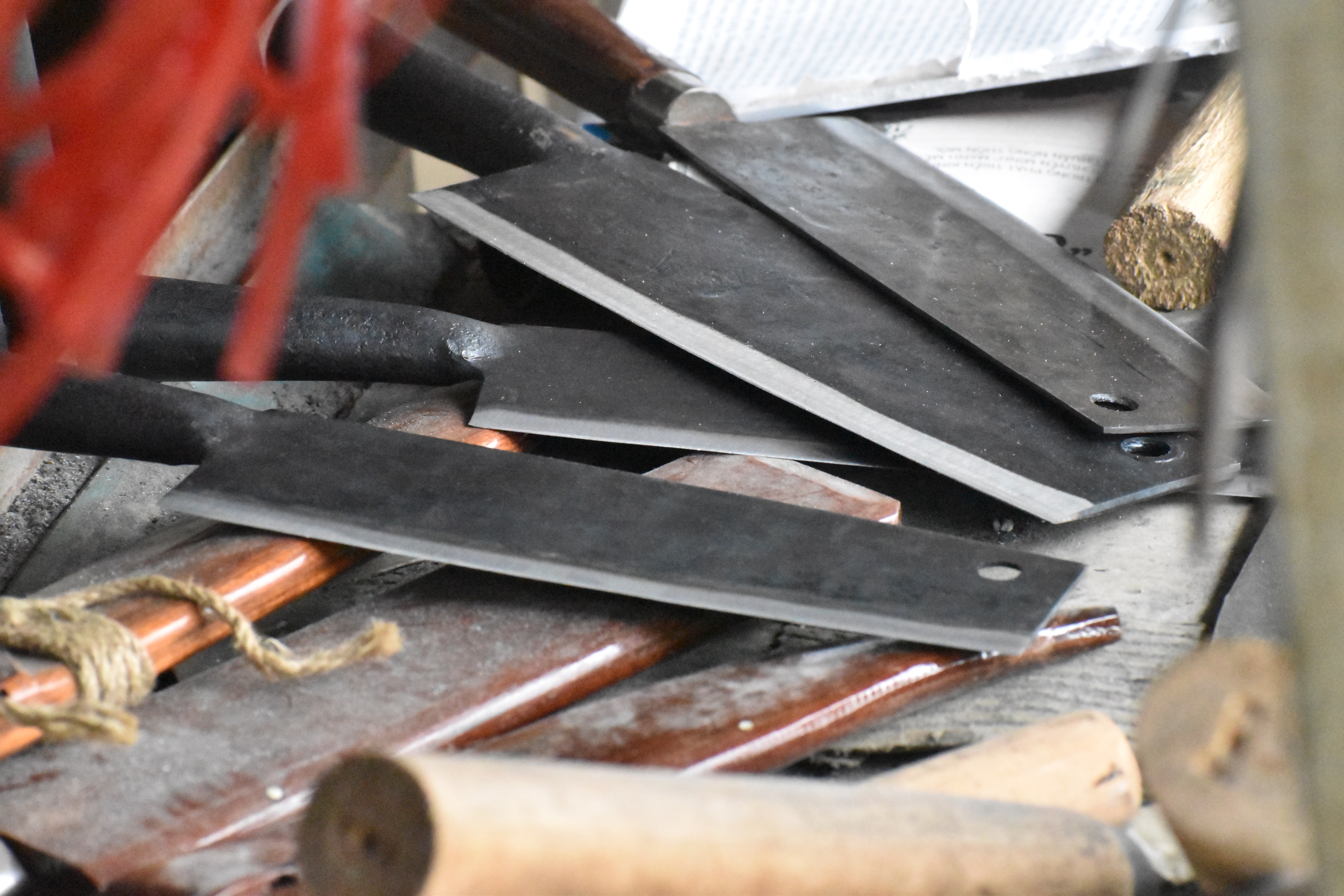
We made a brief stop at a knife shop. We watched the men work to make the knives while Hoan bought one for his wife. Talk about digging your own grave.
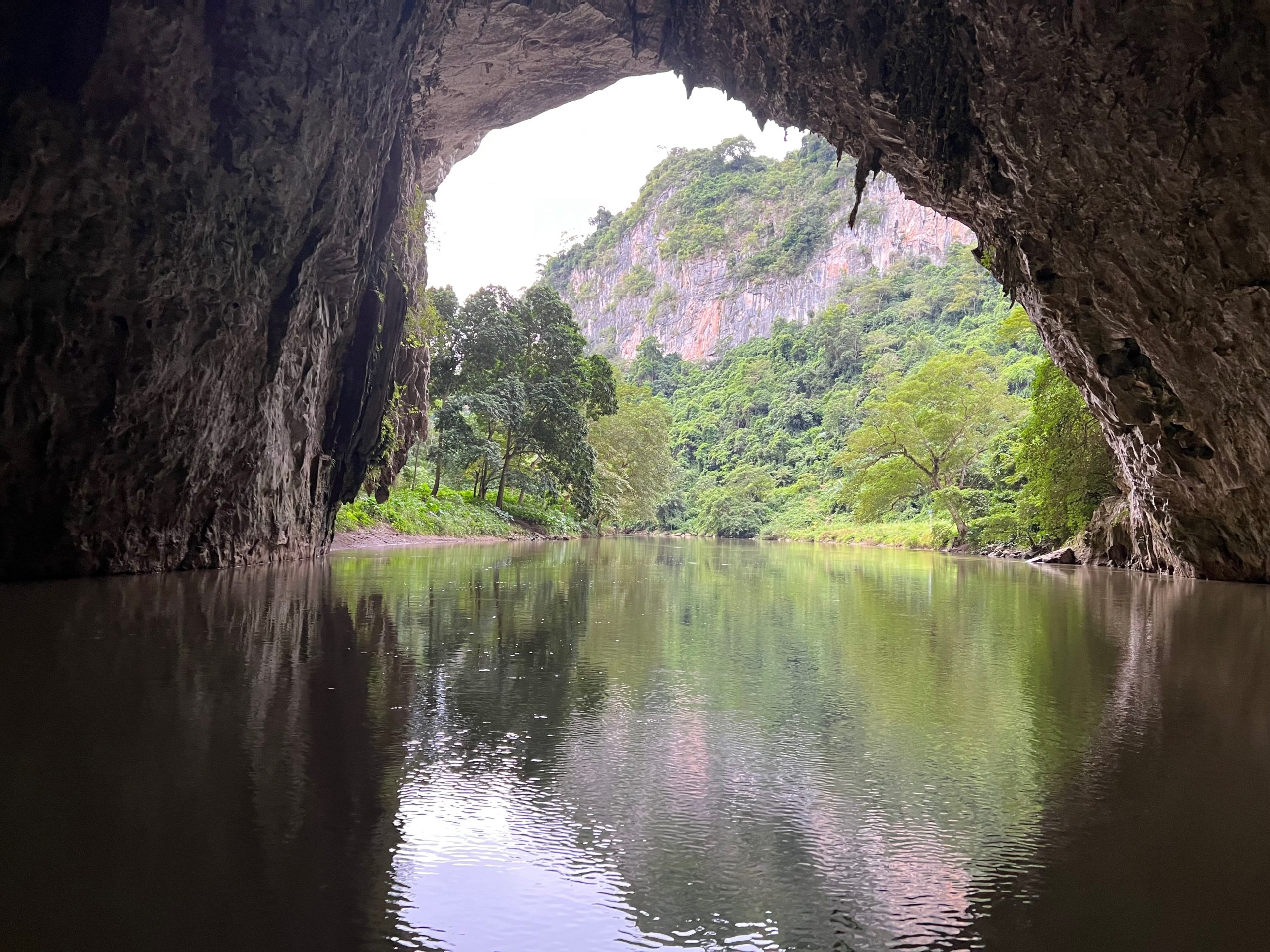
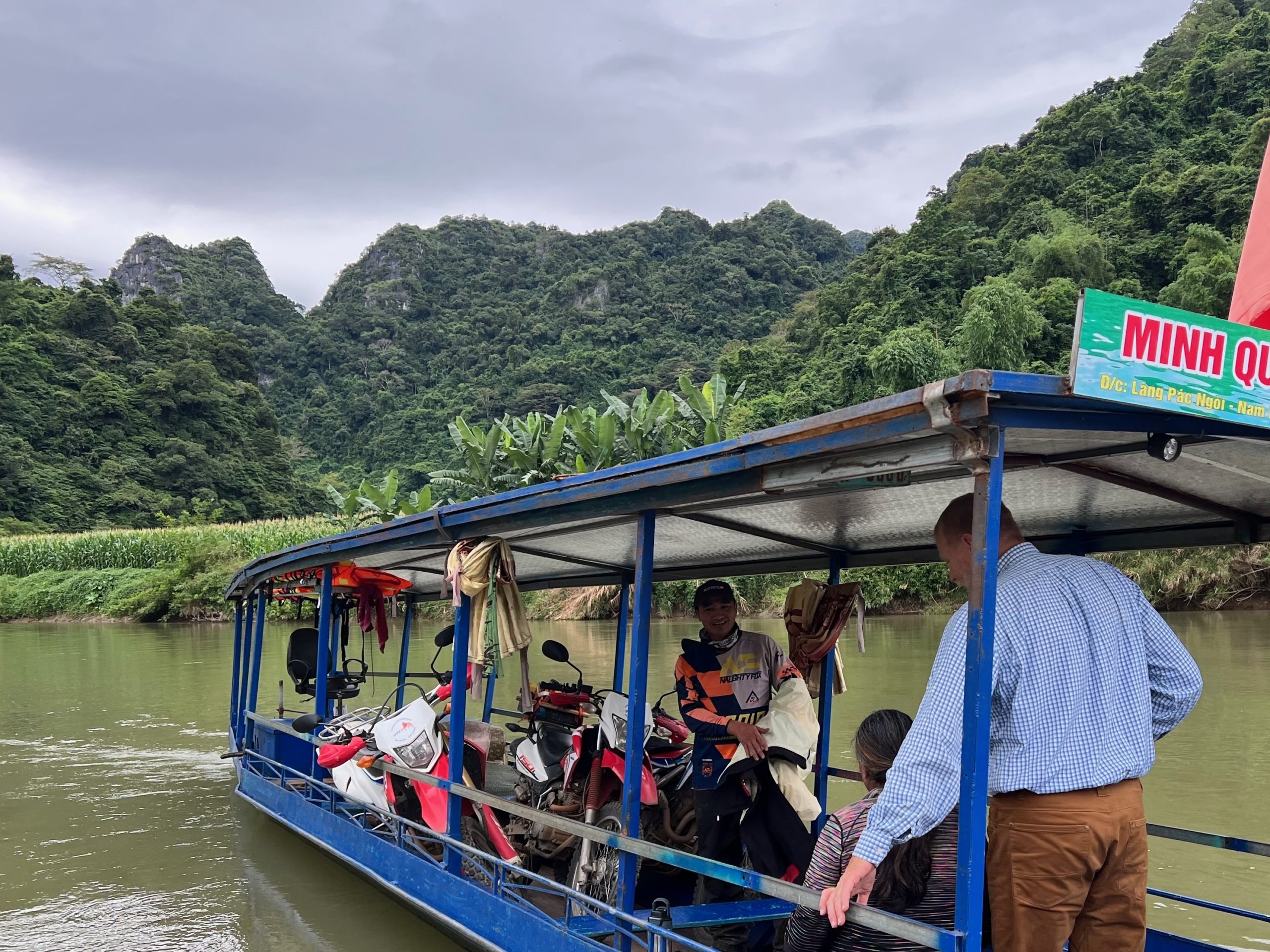
At Động Puông, we loaded the motorcycles on a river boat and cruised to Ba Be the back way. The river road traveled down a beautiful jungle-coated karst valley, passing through a karst cave on the way to the lake. From the south end of the lake, we road the short distance to the Minh Quang Homestay. The homestay overlooks fields on the south end of the lake.
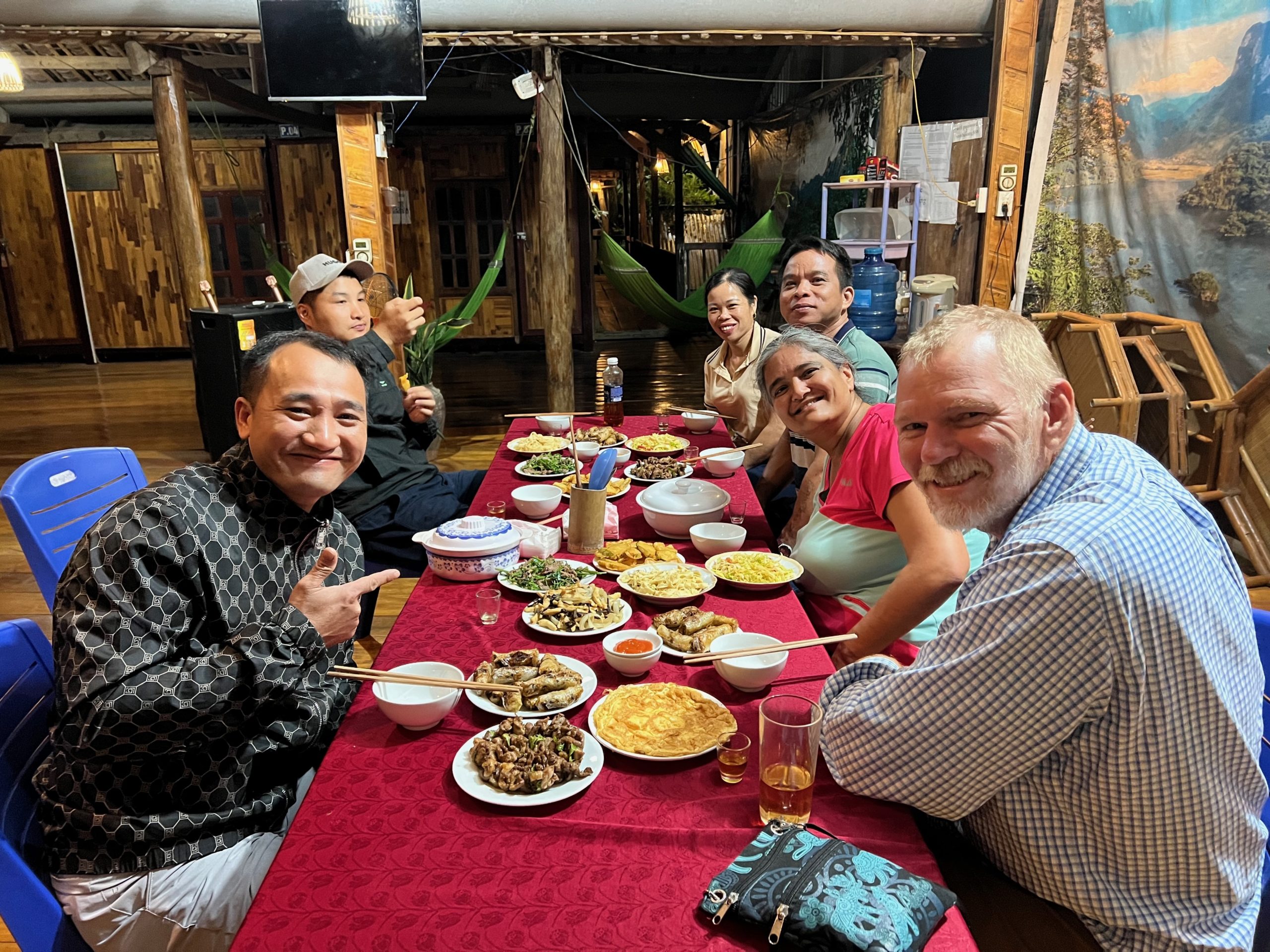
We dined with the proprietors on the upstairs patio, participating in the traditional Mot! Hai! Ba! Yo! ritual, drinking plenty of wine to close out the evening.
Day 10 Ha Giang Loop Day 8 – Ba Be National Park to Hanoi.
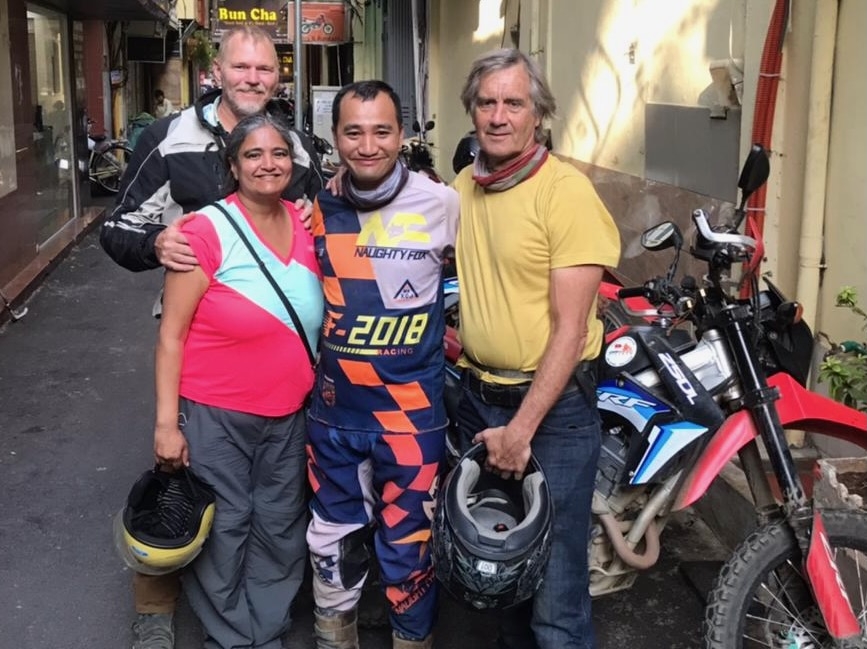
The trip back was fast and direct, attempting to beat the rush hour traffic. We achieved the goal, but Hanoi traffic is still Hanoi traffic, chaotic and close, yet somehow predictable. We said goodbye to Hoan with a few beers at an intersection-facing cafe, watching others negotiate the hazards of the street to their ends. The ride was everything I could have asked for and so much more. **
Day 11 Hanoi.
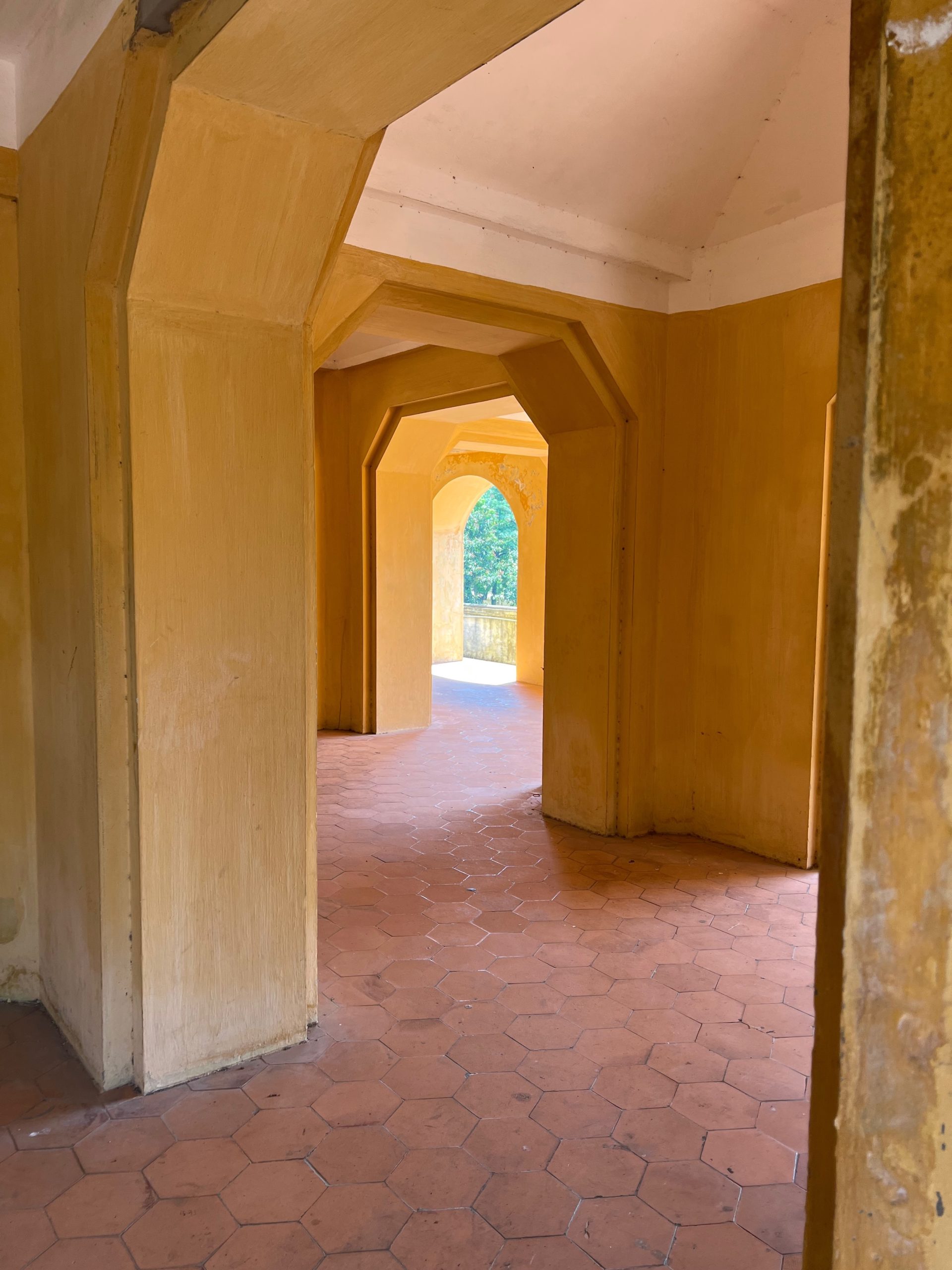
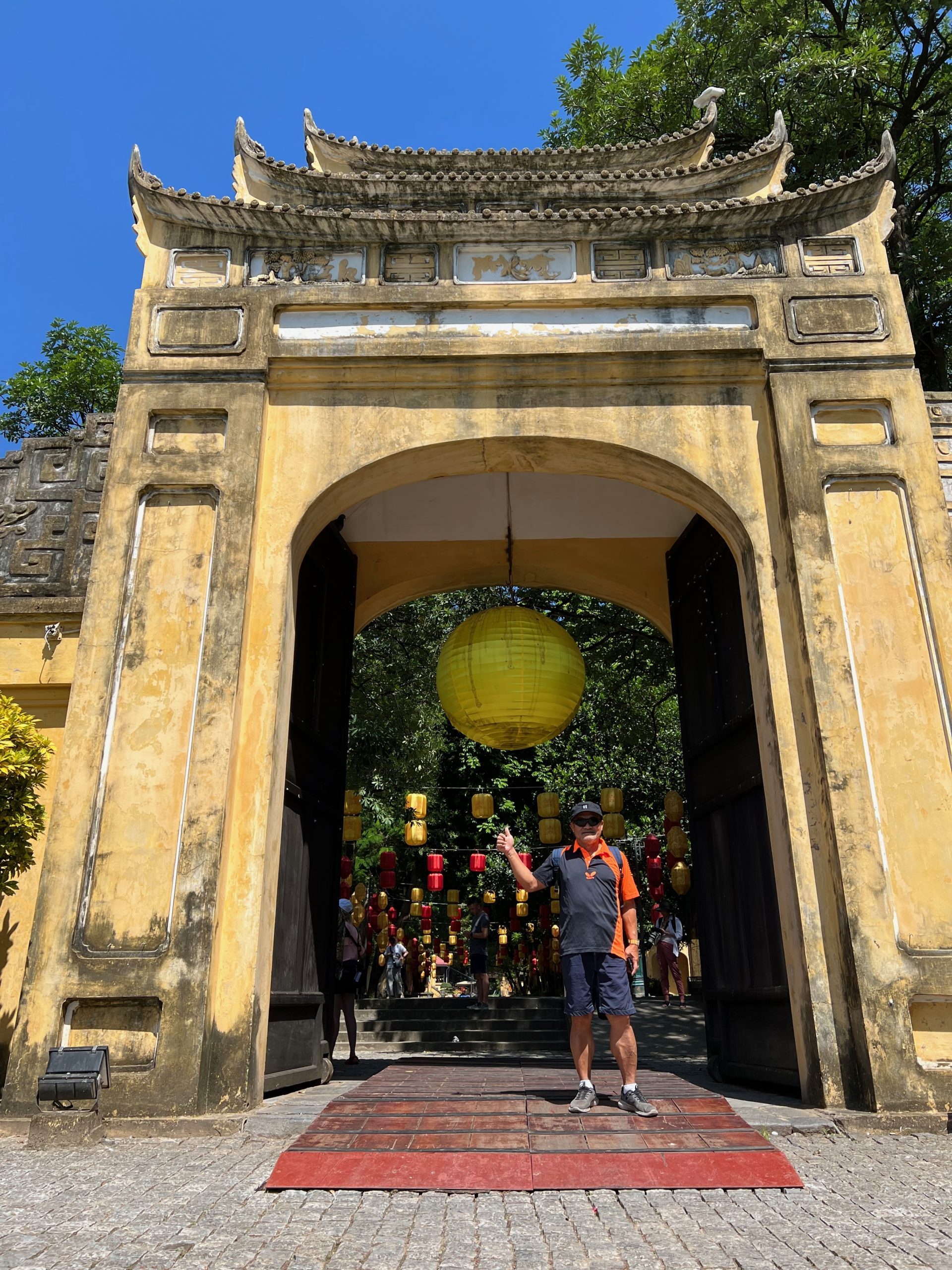
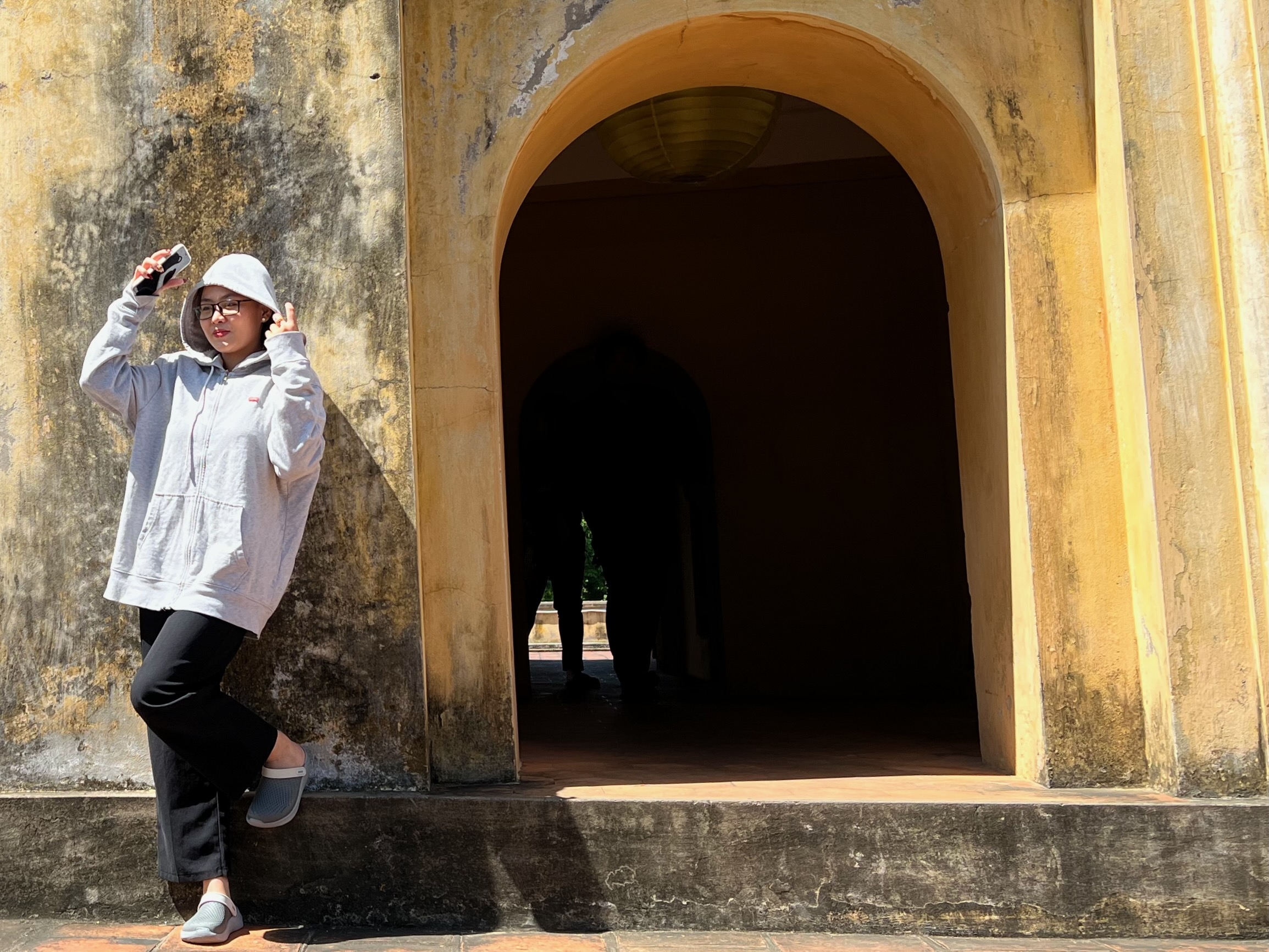
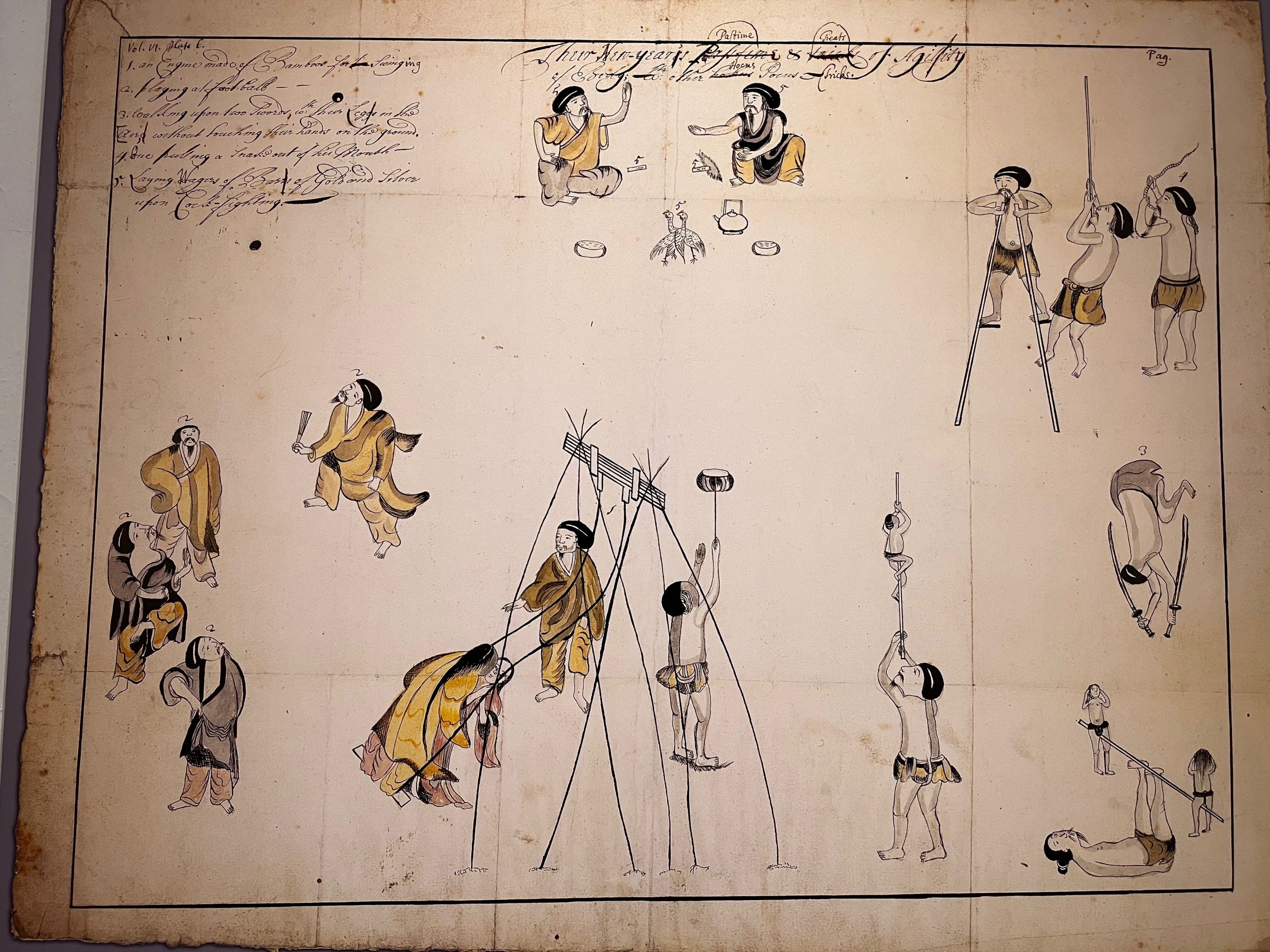
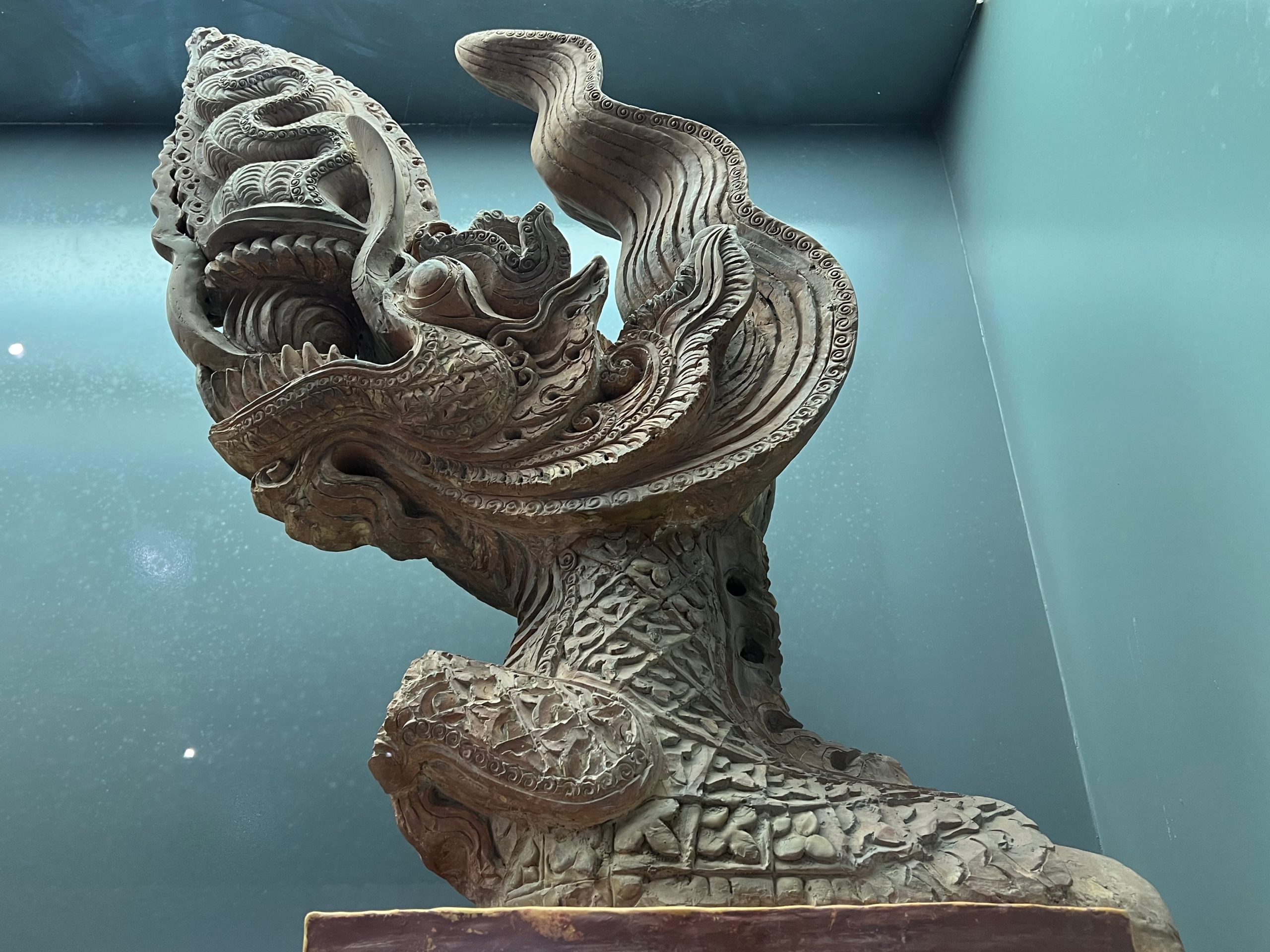
It’s the one too many. I didn’t have a plan. I went with Jake, his uncle, and his cousin to the Imperial Citadel at Thang Long. The Imperial Citadel has a history of a thousand years, serving many dynasties and kings in the past. Recently, it served as a command center and bunker for Ho Chi Minh during the wars.
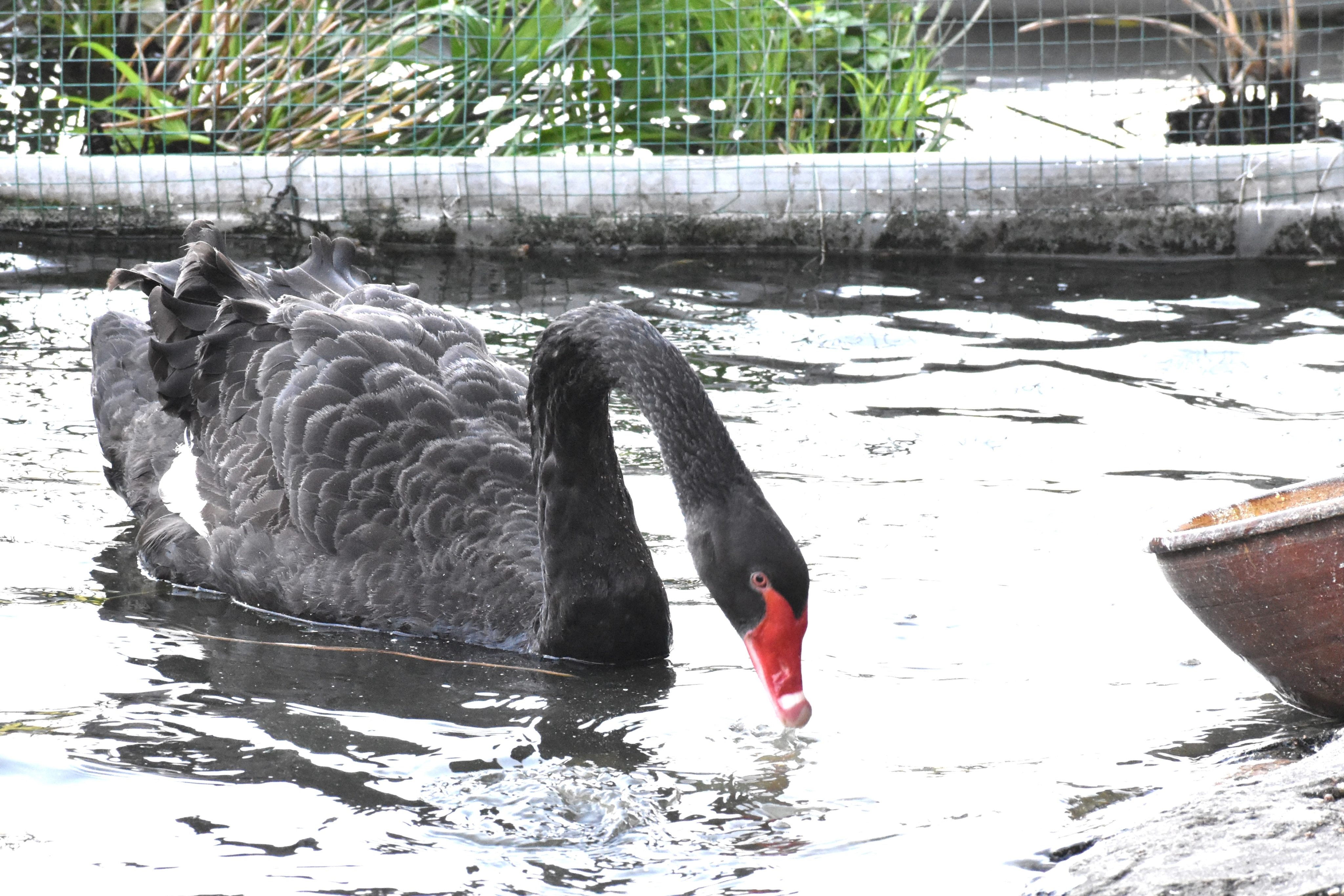
After that, I wandered the streets of Hanoi for one last time. Interestingly, I found a Black Swan, a highly improbable event according to the literature. The absence of evidence is not evidence of absence. Well, I proved to myself once and for all that black swan events, well, black swans, in any event, are real. I don’t know if I would call the trip a Black Swan Event, but it certainly was a very memorable one.
All trip pictures: https://drive.google.com/drive/folders/1QRPSLT2RHgrHL0EvuPIVSui34fCVH6Rn?usp=sharing
- Review of VuLinh Family Homestay
Beautiful home and accommodations. Spending an evening with the Vu Linh family was one of the trip’s highlights. Hoan welcomed us into his family with an intimate dinner and evening with his family and the other guests. Fantastic food and bottomless shot glasses of rice wine served with pride and enthusiasm. They are sure to make your trip to Thác Bà Lake memorable.
** Review of Offroad Vietnam
If you are brave enough to take on the traffic and back roads, riding a motorcycle in Northern Vietnam is as good as it gets. An unforgettable adventure of spectacular riding from the mayhem of Hanoi traffic to the hidden lakeside byways to twisting ascents over mountain passes to mountain-hugging ledges. Offroad Vietnam tailored the trip to our requested itinerary and provided excellent motorcycles and support throughout the journey. Our Offroad Vietnam guide Hoan is a skilled rider with a decade of riding experience. He showed us roads and trails we would never have found, considered, or negotiated if we tried to ride by ourselves using Google maps. He bridged the language gap for us, making our encounters with the friendly people of Northern Vietnam more personal and rewarding. I wouldn’t hesitate to use Offroad Vietnam again if and when I make it back.
